Introduction
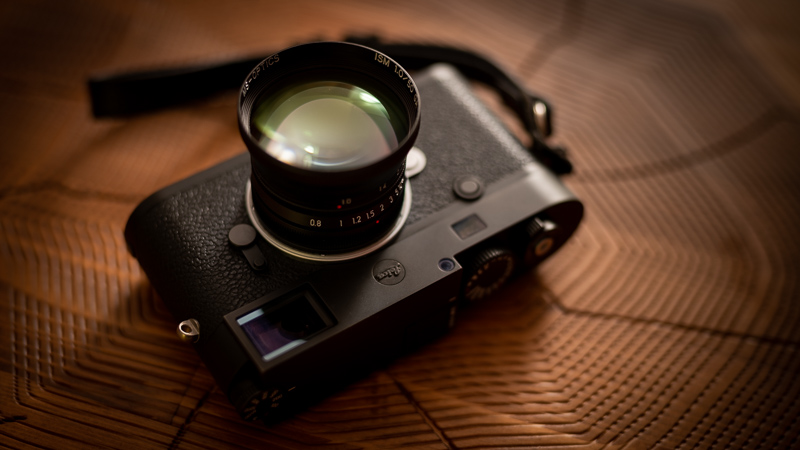
Leica M10. The Camera. Photography reduced to its essentials. This is what Leica says about this camera. If you care what I think of it: keep on reading.
Update: this article is now 3 years old and because of it some Leica fanboys still show up outside (or rather in the comment section) with pitchforks and torches. Joking aside, this is one of the most commented-on articles I ever wrote, reason enough to revisit it and see what happened in the meantime and also tackle some arguments from the comment section.
For many people owning a Leica camera is a dream. But why is that so? Is it simply the high price tag, the Bauhaus look or the huge “Made in Germany” writing, not hidden on a sticker at the bottom of the camera, but easily visible on the back?
It surely isn’t image quality or ease of use. You get more of both, elsewhere, for less. This is why Leica cameras are often perceived as vain men’s luxury items, that happen to be able to take photos from time to time.

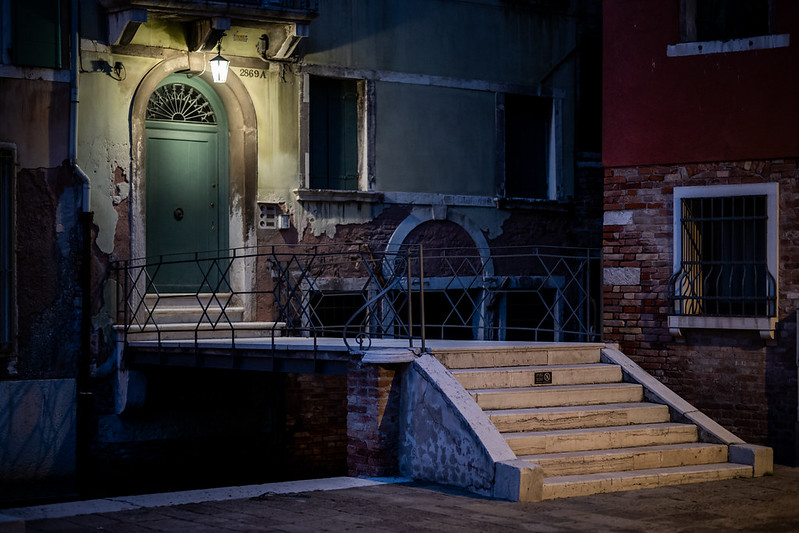
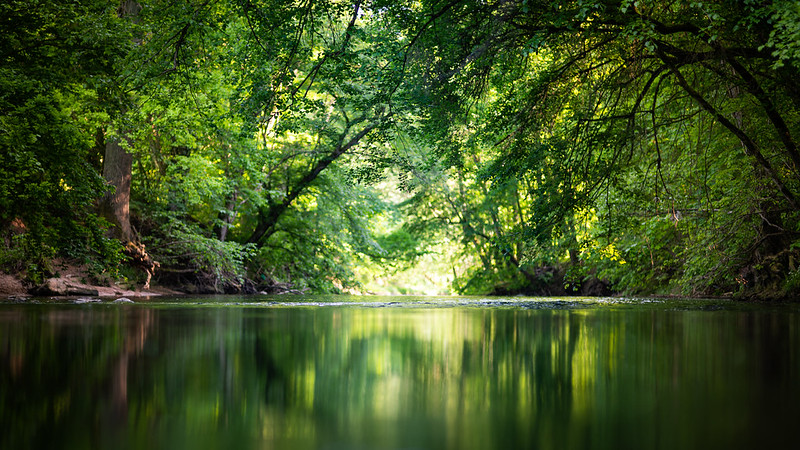
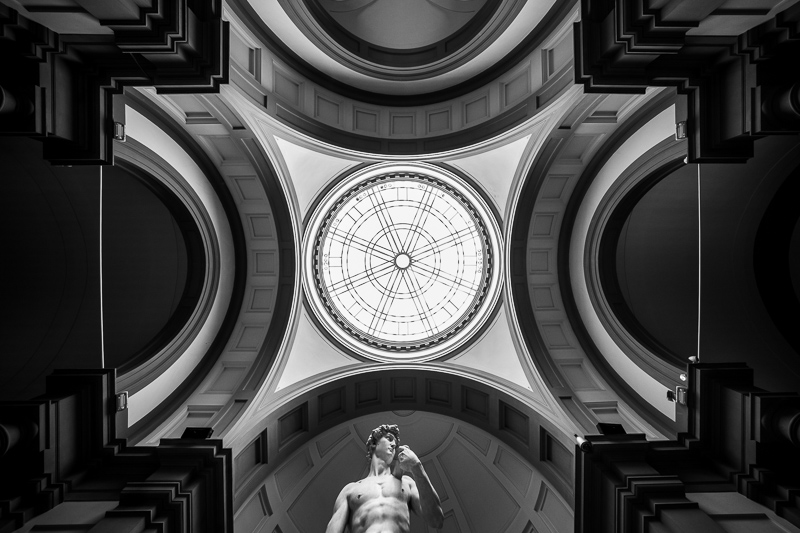
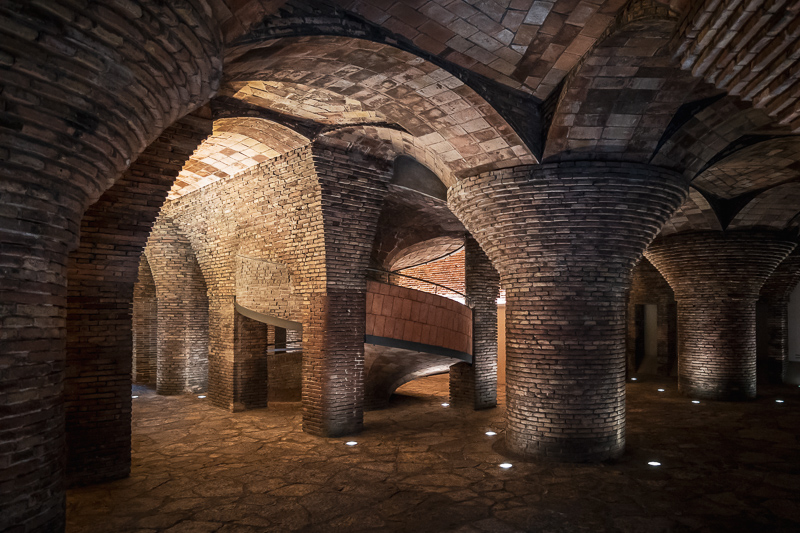

Did I dream of owning a Leica camera? I actually didn’t. I always had a look at them, tried out the newest model every Photokina I went to, but in the end, especially after the arrival of the A7 series, I did not think they would improve my photography or allow me to do things I wasn’t able to do before. And I didn’t talk about the price yet: could I afford one at that time? Nope.
Sometimes destiny travels strange paths though, so I ended up winning a Leica M10 in a photography competition. Did I consider selling it while it was still new and worth more? Of course I did, we are talking about a lot of money here.
But then, this would have been incredibly boring, wouldn’t it? So instead I decided to give it a chance and see where it gets me.
Contents
Specifications
The Leica M10 has the following specifications:
- Sensor: 24mp full frame CMOS without anti-aliasing filter
- Weight: 660g (without cap, including battery)
- Rangefinder: 0.73x magnification, framelines for 28, 35, 50, 75, 90 and 135 mm
- Electronic Viewfinder: optional accessory for hot shoe
- Shutter Speed Range: 1/4000s – 125s
- ISO range: 100 – 50.000 (Auto ISO 200 – 50.000)
- Liveview: yes
- Auto focus: no
- Image stabilizer: no
- Mount: Leica M
You may also have a look at Leica’s official page.
New the Leica M10 cost $7995, but it has since been replaced by the Leica M10r and M11. So these days you can find used M10s on ebay.com/ebay.de starting at $4500 (affiliate links).
Handling
There are clearly different user types. Some who “just want to take pictures” are probably fine if the camera only comes with a shutter button. This is true for all those Fuji Instax (and similar) cameras. Picture comes out too bright or too dark? Who cares, as long as it was fun taking a picture in the first place.
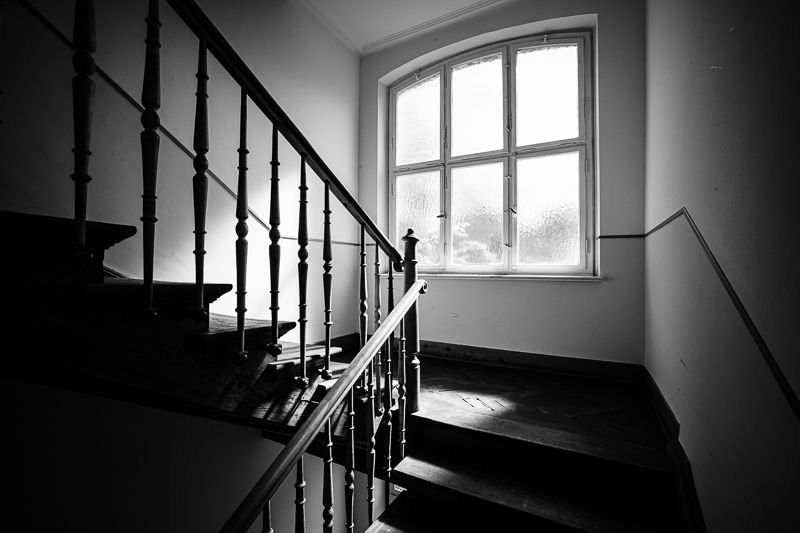
I am not in that category. I need my pictures to come out in the best possible way. When I take a picture of bride and groom at a wedding I need it to be perfect. When I see one of the pictures I took hanging in their apartment afterwards I don’t want to think “Oh, the sky is blown out, maybe I should have checked the picture I took on the camera screen and readjusted the exposure and then taken another one”. It doesn’t work like this for me.
So first, consider in which category you are, it may vastly change your perception on certain aspects I will be talking about.
The Rangefinder
If you were born in the 80s or even after that you may not even know what a rangefinder is: it is an inaccurate and archaic focus mechanism.
I won’t go too much into detail how the rangefinder works here (there are clearly enough sources out there if you want to learn more) but I will tell you what it means for you and your photography and where its limits are.
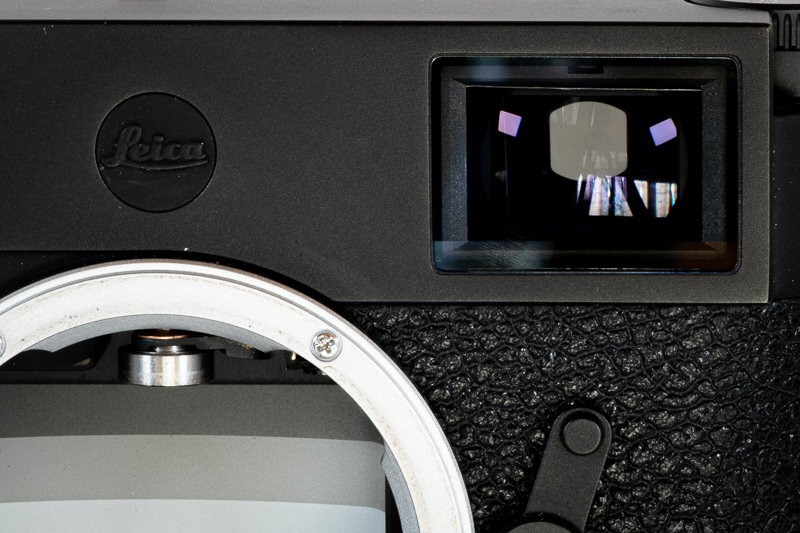
It is an optical finder, but what you see through it does not change when changing a lens or the lenses’ aperture (unlike EVF or (D)SLRs). Instead you get framelines with compatible lenses that will roughly show you, what should be in the frame, but framelines are only available for 28, 35, 50, 75, 90 and 135 mm.
Even without glasses it is sometimes hard for me to see the 28 mm framelines, the 135 mm framelines are so small, it makes it hard to decently compose. Furthermore the framelines are not exactly accurate at all distances, which also makes exact composing harder.
If you want to use the rangefinder only I would recommend to stick to lenses with 28-75 mm.
For wider lenses it is mandatory to use Liveview or get an optional viewfinder, more on this in the next section.
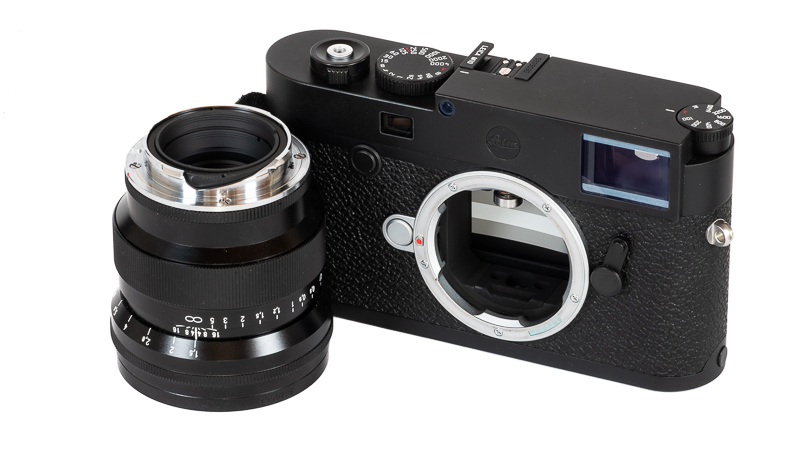
Compatible M39 and M-mount lenses have a so called “rangefinder coupling”, a small metal piece attached to the helicoid of the lens that “tells” the camera at what distance it is currently focused at.
Quite a few problems derive from this: this metal piece needs to be perfectly calibrated across all lenses and cameras from different manufacturers. Interestingly only the newer chinese M-mount lenses allow you to adjust the lens yourself. If you have a Voigtlander lens that isn’t properly calibrated you are pretty much screwed.
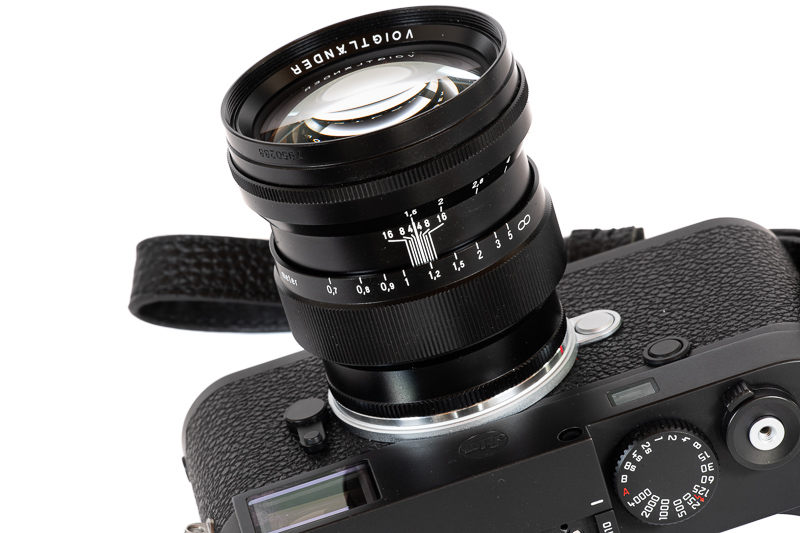
Another problem is, that the focus range of this mechanism is limited to 0.7 m to infinity and most mechanical lens designs follow that. For longer lenses this does not make a big difference, but shorter lenses for other systems can usually be focused much closer. There actually are some M-mount lenses that can be focused closer than 0.7 m (when using Liveview or the external electronic viewfinder) but these are the exception. Their number is steadily increasing though.
Apart from the framelines the only information displayed in this finder are ISO, EV compensation (both only when you change them) and current shutter speed.
We didn’t talk about the elephant in the room yet: focus accuracy.
The split image is in the center of the frame so you have to use focus-and-recompose, which is something I generally recommend not to do at wide apertures as your subject may not be in the plane of optimal focus anymore after recomposing.
Furthermore the split image only works well on clear vertical structures and “human eyes” don’t exactly fall into this category.
Leica knows this, so this is what the M10 manual says about accuracy with fast lenses.
If you use mainly wide and slow lenses you will most likely “be fine” with the rangfinder mechanism. Actually I have also been fine with the 7Artisans 28mm 1.4. But if you use fast portrait lenses like the Voigtlander VM 75mm 1.5 or Leica 90mm 2.0 I advise to use the optional electronic viewfinder or Liveview to get consistent results, especially under dim light.
The situation with regards to lens flares should also be mentioned. In many of my reviews I write that certain artefacts can be avoided by slightly reframing or shading the lens, but to do that you have to see them first and this is also not the case here.
An even bigger issue is that focus shift cannot be accounted for when only using the rangefinder. With such lenses it is also advisable to use an optional finder or Liveview.
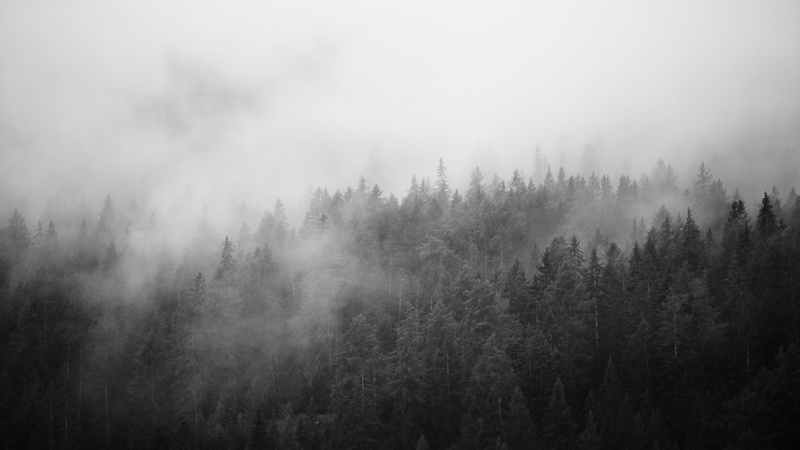
Some of my friends who have used the camera were asking what is the benefit of this rangefinder focus mechanism. It was – and still is – hard for me to name even one, actually. The only thing I could come up with is seeing more of the surroundings if using a lens of 35 mm or longer which can be a benefit in street photography.
Whether this outweighs the disadvantages is up for you to decide.
On the Leica M10 I rarely use the rangefinder: too clunky, too inaccurate. Even when shooting stopped down with lenses in the 28-75mm bracket I prefer the Liveview mode for the more user friendly light metering, the WYSIWYG exposure compensation and to allow for actually accurate framing, the latter being something I find especially crucial.
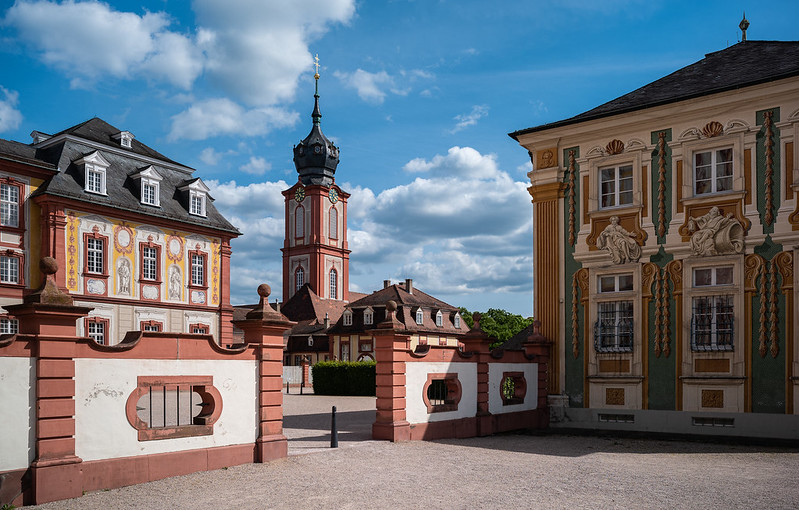
Electronic Viewfinder EVF 020
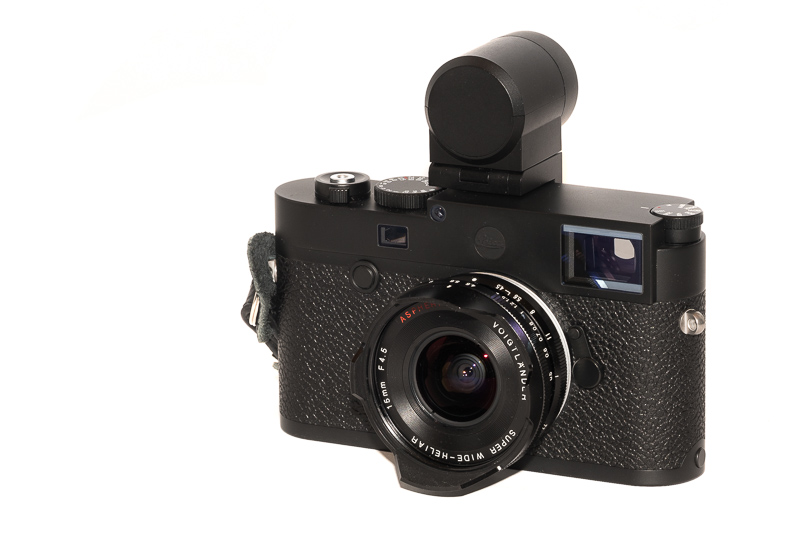
If you want to use lenses that are wider than 28 mm and you don’t want to use Liveview all the time this accessory is pretty much mandatory.
It is expensive (affiliate link), it is ugly and the quality can best be described as “soso”. Leica has access to some amazing electronic viewfinders (Q(2), SL(2)), but this is not one of those.
The colors often look pale and washed out and the dynamic range is not up to today’s standards either.
It gets the job done, somewhat, but I would take any A7 series’ viewfinder over this one any day.
There is focus peaking available but you cannot adjust its strength. Generally I found it to be too sensitive, which is why I often have to turn it off to properly focus.
Customizable over- and underexposure warning (known as “Zebra” among Sony users) is also available.
Many people claim having connection issues with the EVF 020 and I also had to remove and reattach it to get it working again a few times.

I ended up only rarely using the EVF 020, so rarely that I decided to sell it. I was always afraid of damaging it when putting the camera with EVF attached back in the bag, it sometimes had connectivity issues and it completely ruined the one thing the camera has actually going for it: the cool design.
With the introduction of Leica M11 we saw the release of a new EVF as well, the Visoflex 2 (affiliate link). It is technically compatible to the M10 series cameras (after a firmware update) but – compared to using it on a Leica M11 – only a smaller portion of its screen will be used, probably because the possible output resolution of the M10 series’ hot shoe connection is the bottleneck.
So in the end, I am mainly using the M10 as a point and shoot with the rear LCD these days. And I still really wish it was at least tiltable.
Metering
The metering of the M10, compared to other modern cameras, it sucks in rangefinder mode (and there is only one metering method in rangefinder mode). It simply sucks. For bright scenes better dial in +1 EV, for dark scenes better dial in -1 EV to start with, but this can still be off by a lot. If you have already been shooting Leica M cameras for decades you might feel right at home though.

In Liveview/EVF mode you can choose between multi, center weighted and spot. While I would generally prefer multi, I found center weighted is closest to the rangefinder mode metering. So if you often switch between rangefinder mode and LV/EVF mode you might be better off with center weighted, as using completely different metering methods means that you constantly have to adjust the exposure compensation dial when switching between these two.
I rarely use the rangefinder to focus anymore, so I am going with multi here.
Button layout / Menu
There are not that many buttons to begin with and while there are a few minor things you can change about the behaviour of some of those, they are generally not programmable. There isn’t even one button that you can assign a custom function to.
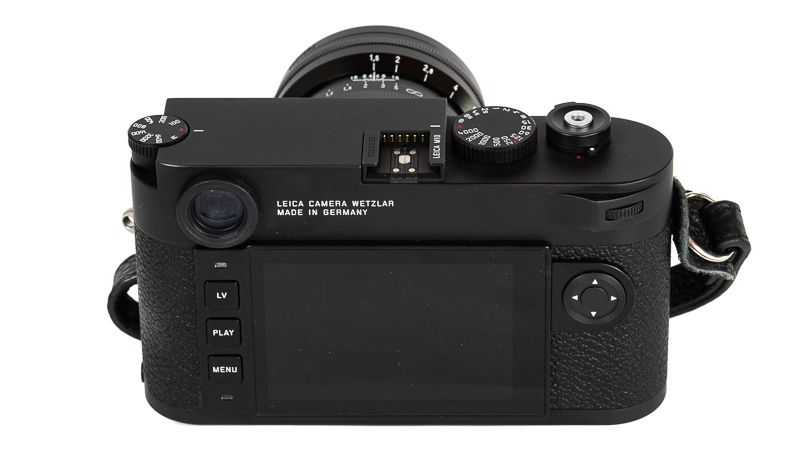
While some people claim that fewer buttons make a camera easier to use I most certainly disagree: many of the buttons have more than one function here and to get access to some functions you even have to press two buttons at the same time. Not very intuitive.
I also missed having a button for AEL, self-timer and to toggle focus peaking.
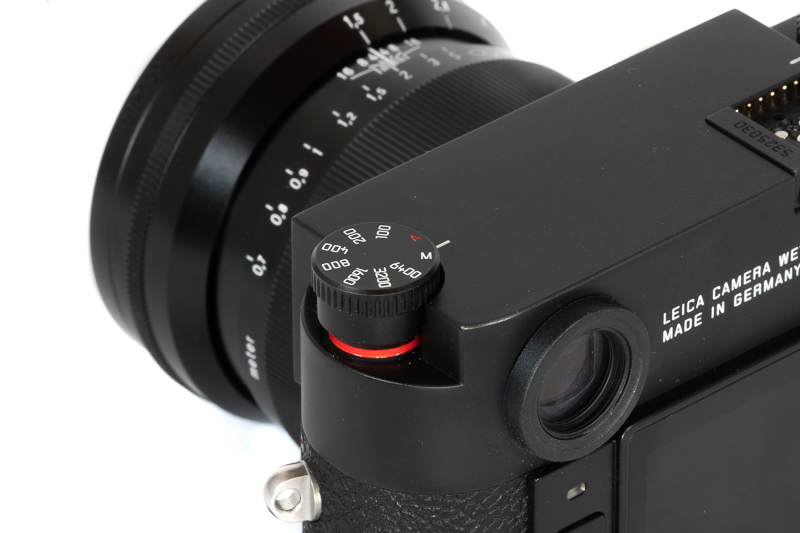
The ISO dial, generally a good idea, is a pain to use: the knob has to be lifted first before you can change the ISO and lifting it is not that easy or intuitive actually.
Another nuisance: despite DXOmark showing that there actually is a higher dynamic range captured at ISO100, Leica decided to introduce a stupid firmware update that will limit the Auto ISO base ISO to 200 only.
So the only reason I ever touched that ISO dial is to change from Auto ISO to ISO 100 with fast lenses in bright conditions (to avoid overexposure because the fastest shutter speed is only 1/4000s) or if I wanted to maximize the dynamic range in tripod based shooting.
The menu is quite okay. There even is a custom menu where you can add the functions you need most, but unfortunately you cannot add sub functions. For example: focus peaking can be found under focus assist. You can add focus assist to the custom menu but not focus peaking directly.
I also miss an AEL button in everyday shooting and it is utterly ridiculous that you cannot turn off the long exposure noise reduction.
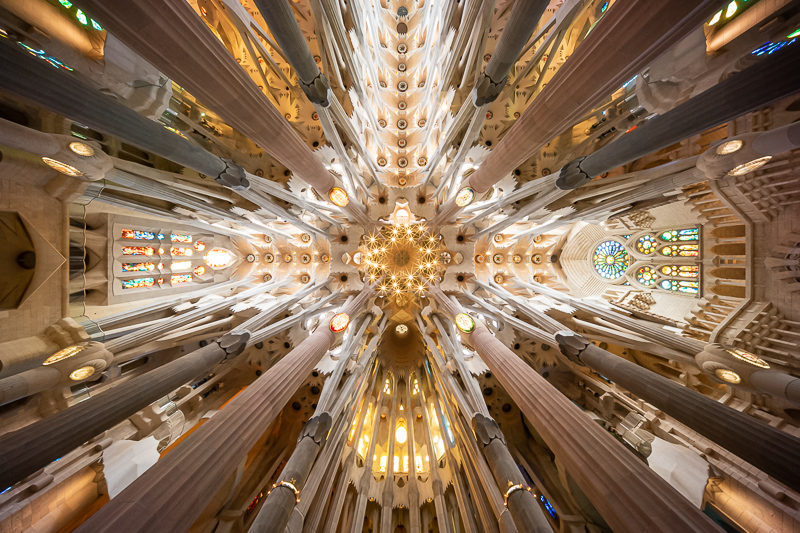
Some people in the comment section also said how complicated the menus of other modern digital cameras are and that they don’t want to spend hours on setting up the camera first before using it and what a relieve the simplistic Leica cameras are by comparison. This is one of the most ridiculous arguments I have ever heard. You can pick up any modern Nikon/Canon/Sony camera and just shoot like you can do with a Leica M without wasting any time thinking about that dreaded menu!
What I don’t understand is: how can it actually bother someone if a camera has menu options for more advanced users that know how to use them? My car has cruise control. I don’t need it, I have never used it. Still it doesn’t make me think a car without cruise control would be any better. Why would it be? Surely there is someone out there that can make good use of it.
Battery door / Tripod Socket
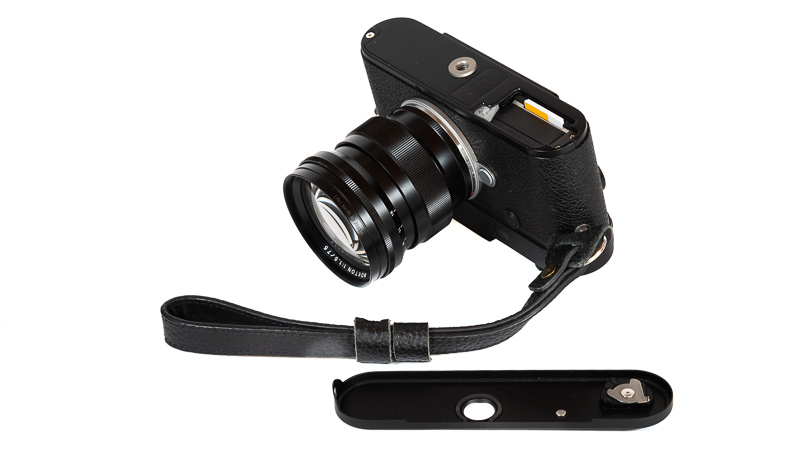
To change the roll of film you had to detach the bottom plate of the analogue Leica M cameras. For sentimental reasons this is still the case with the M10 series cameras to get to the battery or SD card.
To my surprise removing the bottom plate is slightly less bothersome than I would have expected: only a very small rotation of the wing screw is necessary.
No third party manufacturer bothers to make batteries for this camera, so you have to buy the outrageously priced original batteries and you will probably want a spare one.
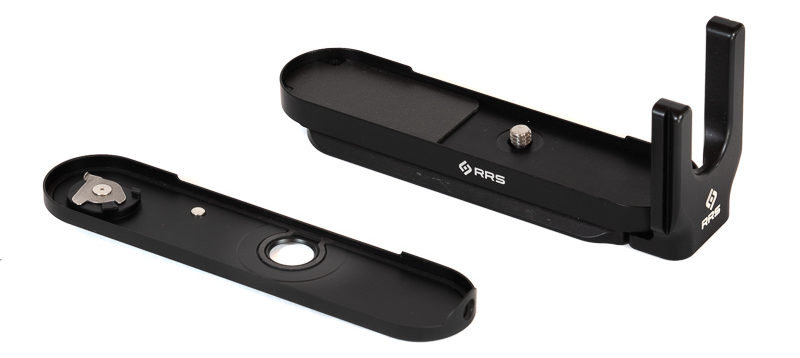
For stability reasons the tripod socket is connected to the camera itself though, not to the removable bottom plate. So if you want to use an arca plate you always have to remove it first in order to get to the battery or SD card. Unacceptable.
Your only option here is buying the RRS L-bracket (affiliate link) which will replace your original bottom plate. I bought it as it is kinda mandatory for the review work. When I don’t plan on using a tripod I prefer using the normal plate for the sleeker looks though.
The Leica M11 does not feature this bottom plate anymore, instead the SD card is hidden directly under the battery. Seems I wasn’t the only one who thought this removable bottom plate is a bit outdated after all.
Image quality
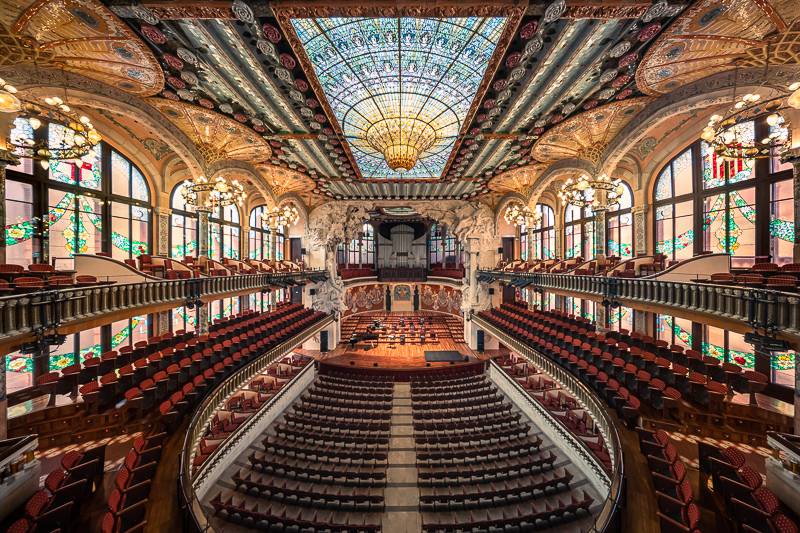
If you don’t want to read the whole paragraph I will summarize it for you: it is okay.
If we look at DXOmark’s sensor measurements (which I consider way more useful than their lens ratings) they rate it slightly worse than the original A7 which pretty much matches my findings.
High ISO noise is on par with the A7(II) and dynamic range slightly worse. There is no anti-aliasing filter in front of the sensor, which is a small benefit over the older 24mp Sony cameras.
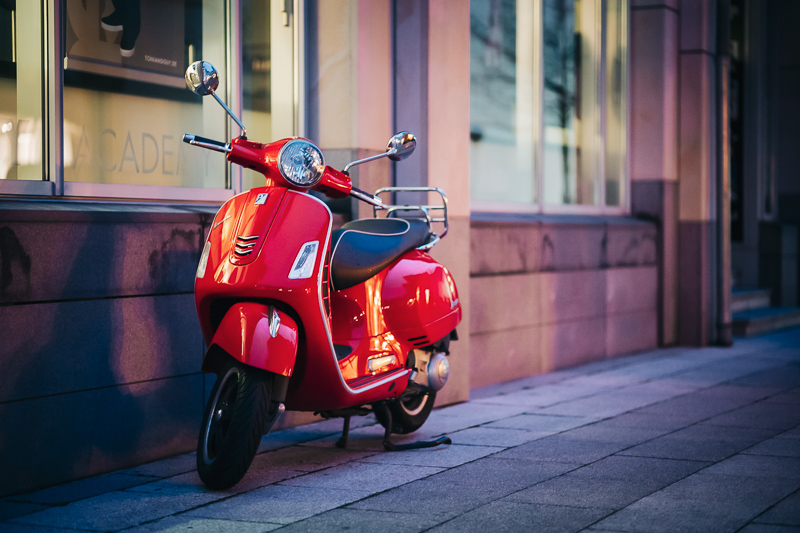
I rarely had the feeling that the sensor is holding me back, but still, if you are used to cameras like the Sony A7R series or A7III you may notice the differences in certain scenarios, e.g. high dynamic range scenes or shooting at higher ISOs.
Also, Auto White Balance is not exactly doing a great job under artificial lighting, but this might also be a matter of taste to some degree.
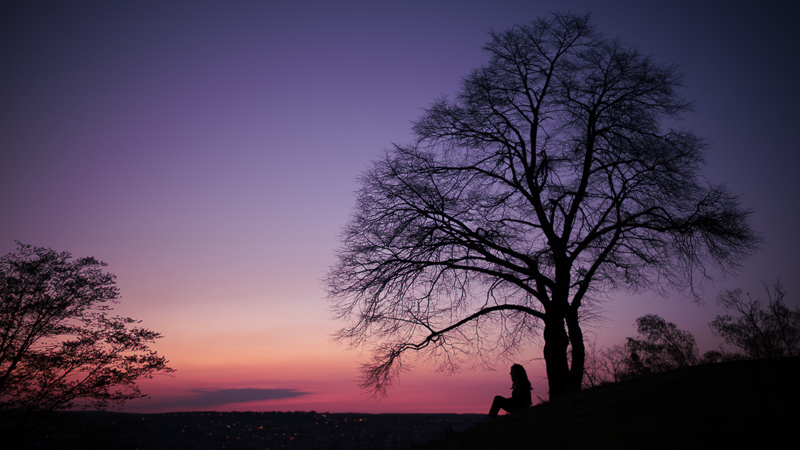
If you expected this chapter to be longer: I see no point posting high ISO or sharpness crops here. You will not buy this camera if you are looking for maximum image quality anyway.
Color Science
Some people claim how Leica cameras have the most beautiful color science which makes the pictures look significantly better compared to the competition and how this easily makes up for the higher price.
Yeah. No.
I have often shot my Sony cameras and the Leica side by side, sometimes I preferred the Sony colors, sometimes the Leica colors (before editing anyway).
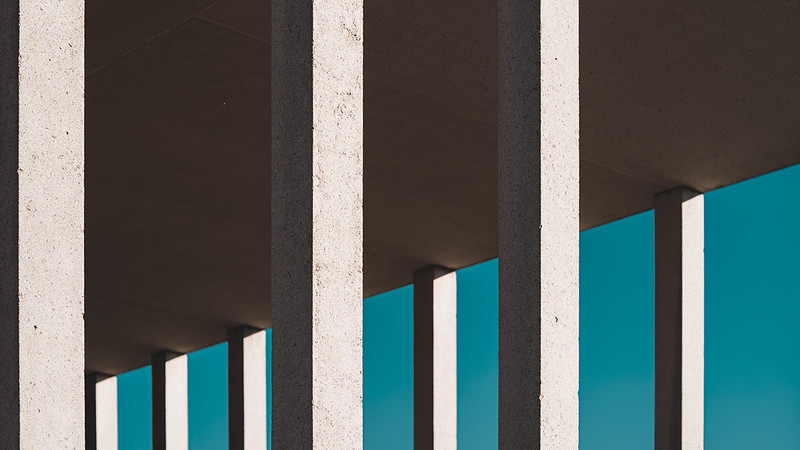
You can also have a look at this article for further reference and why we usually don’t talk about color rendition in our lens reviews.
Lenses
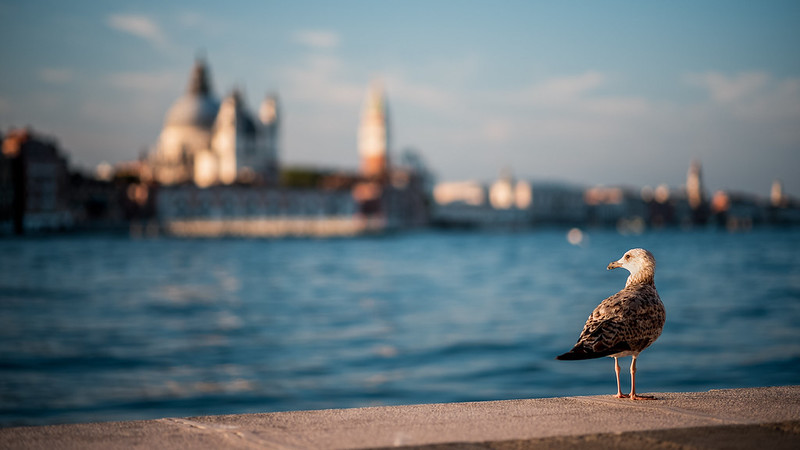
In the (D)SLR era the small yet capable rangefinder lenses were certainly one of the most appealing benefits of using a Leica camera. The shorter back focus distance (possible due to the absence of a mirror box) allowed for smaller lenses, especially when it comes to wide angle designs. This is of course no advantage over the new mirrorless cameras from various manufacturers anymore, that offer the same advantages.
Still, there are some appealing advantages when it comes to M-mount lenses or the M-mount system in general. I am not sure there is any system that attracted so many big and small manufacturers over the decades. This did not only lead to a huge amount of vintage lenses to choose from, there are still new lenses being designed to push the boundaries of the system.
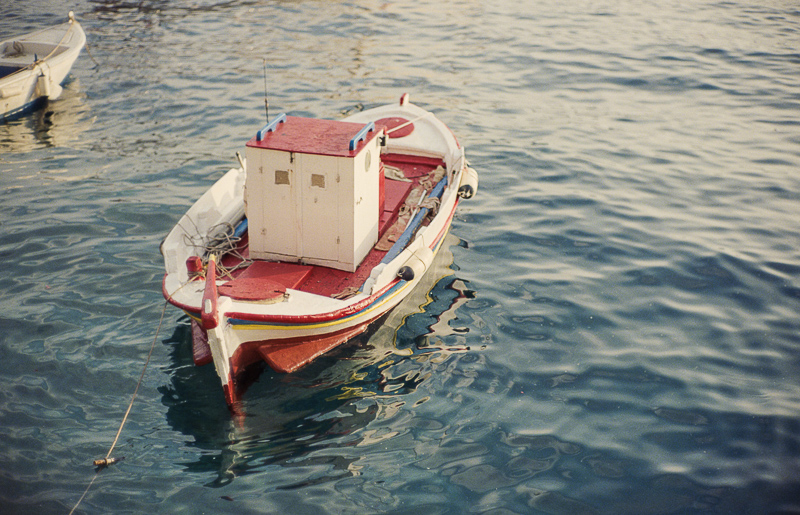
This is also the reason I ended up with a Leica M6 when looking for an analogue camera: I already had many M-mount lenses and I can use those on several different camera systems now, digital and analogue.
Because of that heritage Leica cameras come with a very thin filter stack in front of their sensor, therefore they work significantly better with lenses designed for analogue cameras than e.g. Sony’s or Canon’s stock cameras.
There are some – mainly wide angle – lenses that still show issues like color cast or increased vignetting though. Unfortunately this color cast varies greatly across the different digital M cameras.
An extreme example – which is very good at showing the differences between different sensors – is the Zeiss Hologon 16mm 8.0. On the Leica M10 it shows a very noticeable magenta color cast which is also asymmetrical – this apparently is true for many of the older ultra wide angle lenses.
On BSI sensors that can be found e.g. in the Sony A7rII this color cast is less bothersome and also symmetrical. The modified Sony A7rII UT shows barely any color cast.
Also here I was wondering how the newer M10r and M11 with different sensor technology fare: the M10r has even more issues with color cast than the M10 and shows higher vignetting figures in the corners. The M11 shows almost no color cast (like the Sony A7rII UT in the comparison above – not surprising as it seems to be using a Sony BSI sensor) but again way higher vignetting in the corners than the M10.
I now wonder if the M10’s sensor was the last one to make use of micro lenses in front of the sensor as described in the Leica M9 marketing material.
For Leica’s own lenses in camera correction for color cast can be applied, if the lens has been 6-bit-coded or is manually chosen from the menu. Only Leica lenses are included of course, no Voigtlander or Zeiss lenses. There are even some lists available online which profile ought to work for third party lenses, but I can only recommend to stay away from these and fix it properly in post instead.

Generally lenses work best on the sensor they were designed for, so I took this opportunity to use the Leica M10 mostly with lenses that perform not so great on a stock Sony camera and where there is no direct substitute, like the tiny Voigtlander VM 15mm 4.5 II, the even tinier Zeiss Hologon 16mm 8.0, the Voigtlander VM 75mm 1.5 and some of the MS-Optics lenses.

Now if you have a collection of old rangefinder lenses you might be tempted to think that a modern Leica is your only way to go, but I would still recommend to also consider a kolari modded Sony A7 series or Nikon Z-series camera instead. You will be getting a more modern camera with better usability and image quality for significantly less money but – depending on the lens – similar and sometimes even better compatibility.
This also allows you to turn some of these lenses into autofocus lenses with the Techart LM-EA9 adapter – should that be something of interest to you.
Conclusion
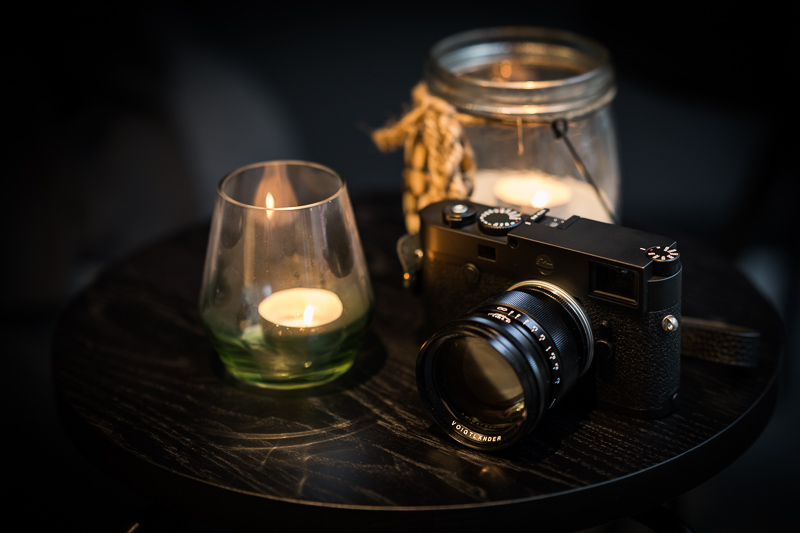
From a technical and economical point of view Leica M digital cameras are not exactly great value or a good investment in my opinion – contrary to the analogue ones.
Some people think they do in fact fare better compared to other digital cameras here, because they are still worth something after years, but let’s look at the actual numbers: a used M10 is now maybe 4.400€, this means it lost 3.600€ since it had been bought new. So it lost more value than most high end fullframe cameras cost to begin with.
I still think the main reason to buy a Leica M camera is to have a reason to go to the fancy Leica Boutiques, to put it on the table in a nice café and have other people look at that beautiful piece of mechanical engineering. This is also what appeals to me personally most: the unobstrusive stylized look compared to other modern cameras.
You also buy into a story. A story from a time, where those rangefinder cameras offered clear technical advantages over other camera systems, especially in terms of size but also speed of operation. Those times are long gone, but the brand image is still there.
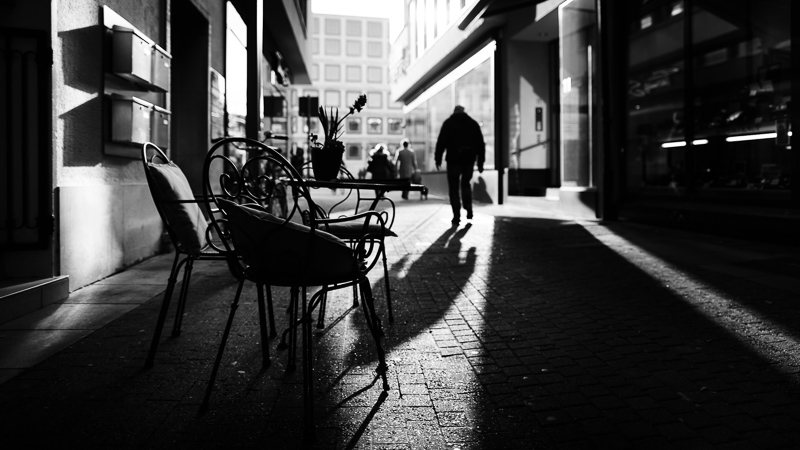
While it is clearly possible to take good pictures with a digital Leica M camera – I took many pictures with it over the past 3 years I am very happy with – you have to be a mix of sentimentalist and masochist to enjoy that whole process, especially so, when you are used to any modern camera from Japan. But honestly, I think this is part of the fun for many people: the challenge to get a good shot is simply bigger here, so it feels more rewarding when you manage to do it.
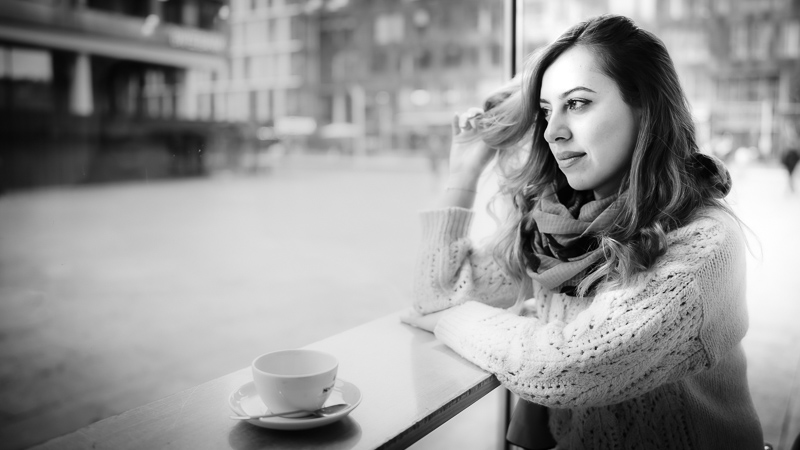
The Leica M10 is not the camera I long for when there is a “job to be done”. It is the camera I take out with a small lens when I am not sure I even will be taking pictures. Stroll through the city, walk in the forest, meeting some friends, these kind of things.
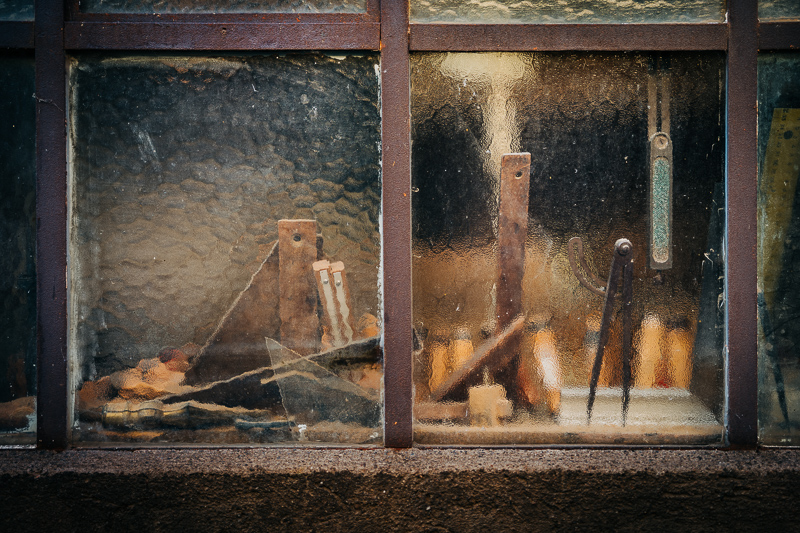
The Leica M digital cameras are cameras that today no photographer needs, but thanks to great marketing, brand image and history many want.
This is true for most luxury items – nothing wrong with that by my book – but nevertheless helps to be aware that this is exactly what the Leica M digital cameras are: luxury items that take pictures. But don’t just take my words for it, let me quote the famous Leica collector Douglas So, founder of the Hong Kong Leica museum:
“The new ones, I treat them like handbags, I carry them and I think they are beautiful”
Can’t argue with that, especially the last part.
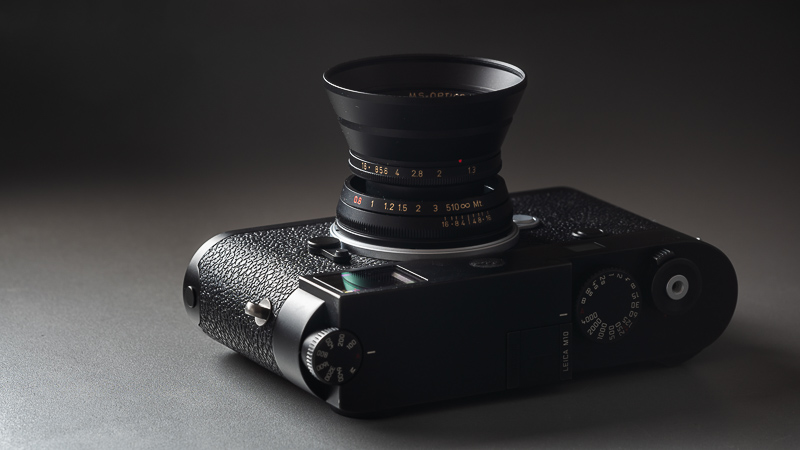
New the Leica M10 cost $7995, but it has since been replaced by the Leica M10r and M11. So these days you can find used M10s on ebay.com/ebay.de starting at $4500 (affiliate links).
You can also find in-depth reviews of all the lenses I have used for the pictures in this article here.
Sample Pictures
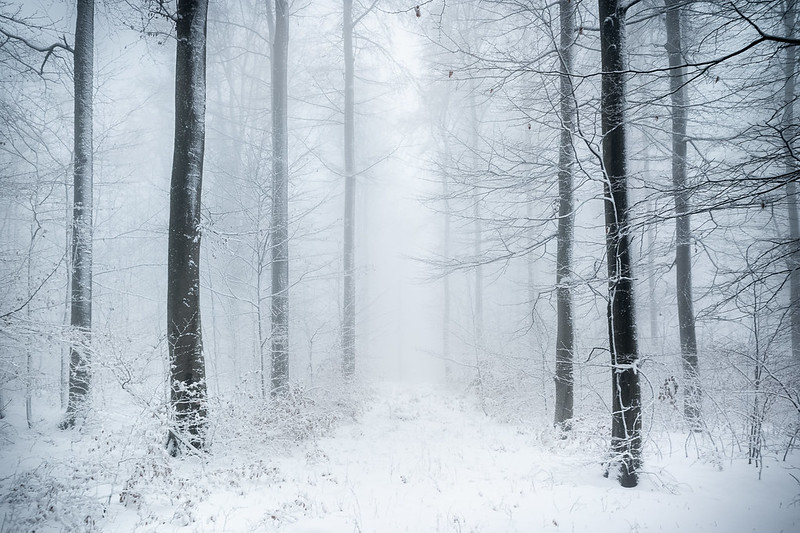
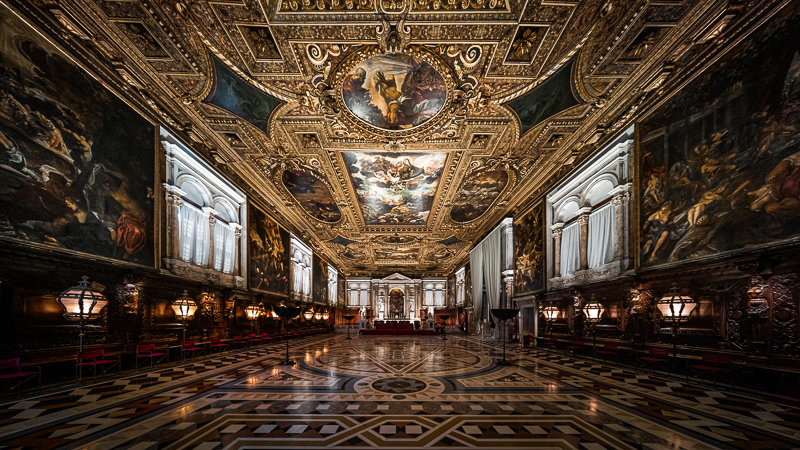
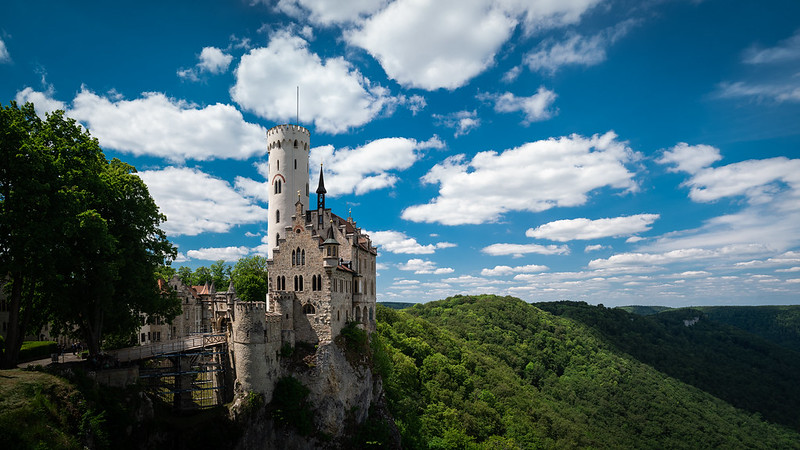
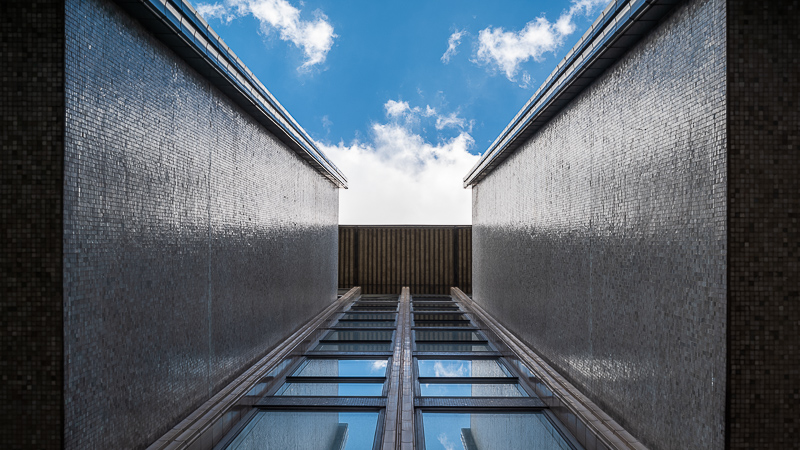
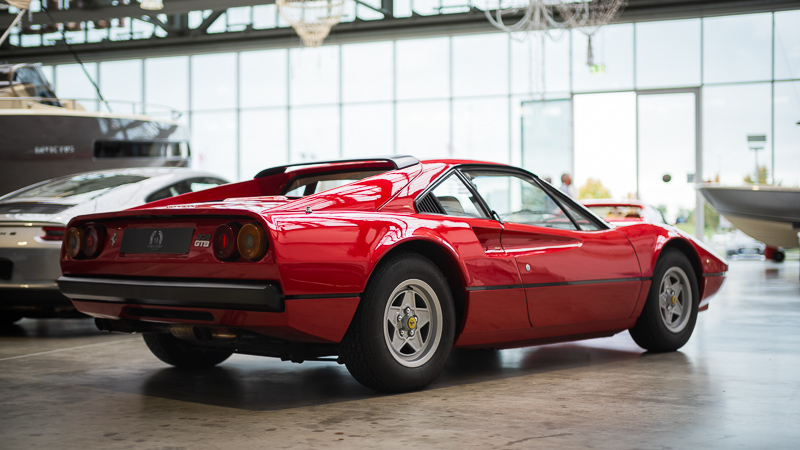
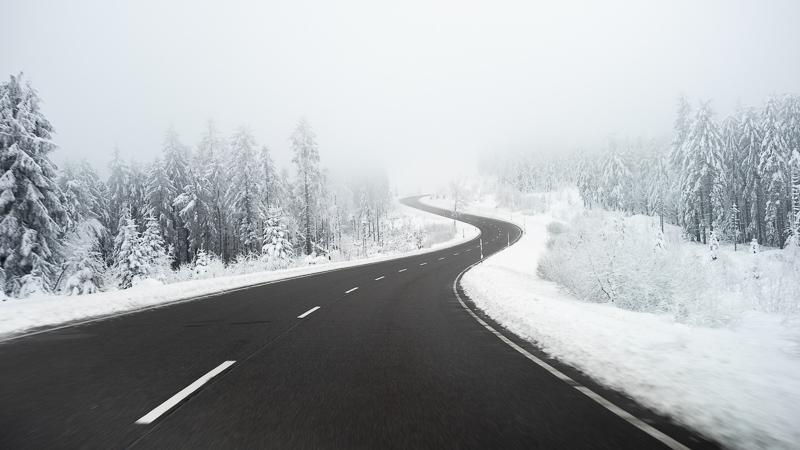
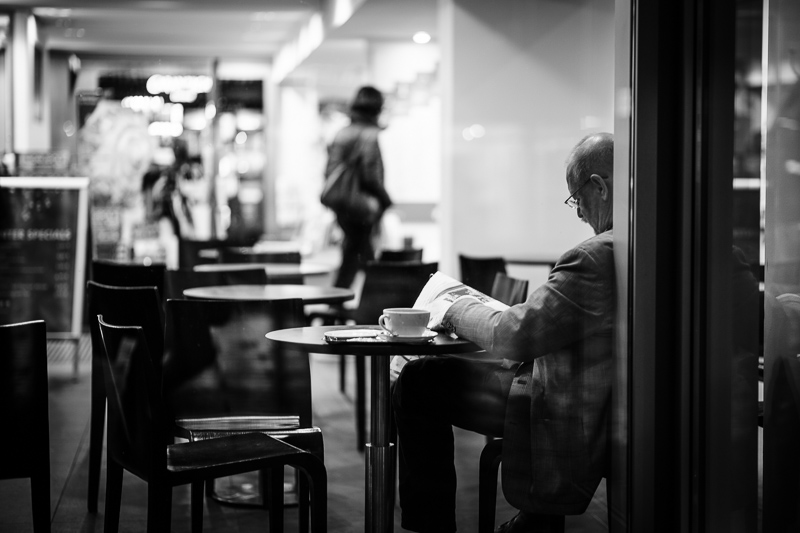
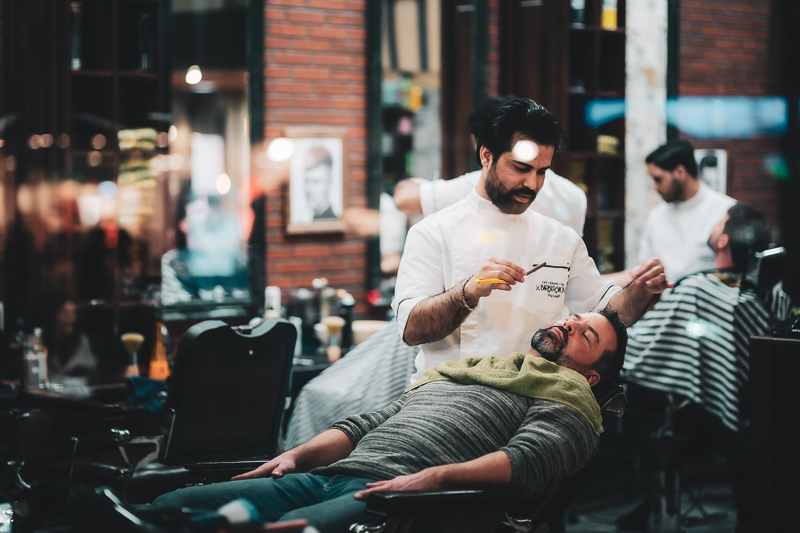
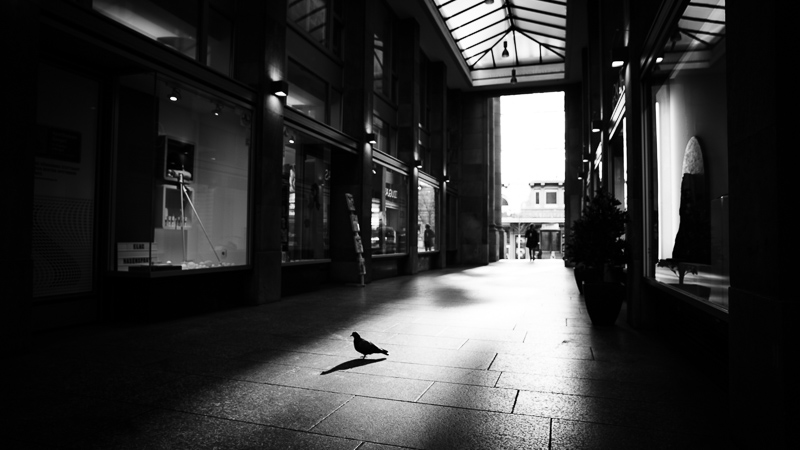
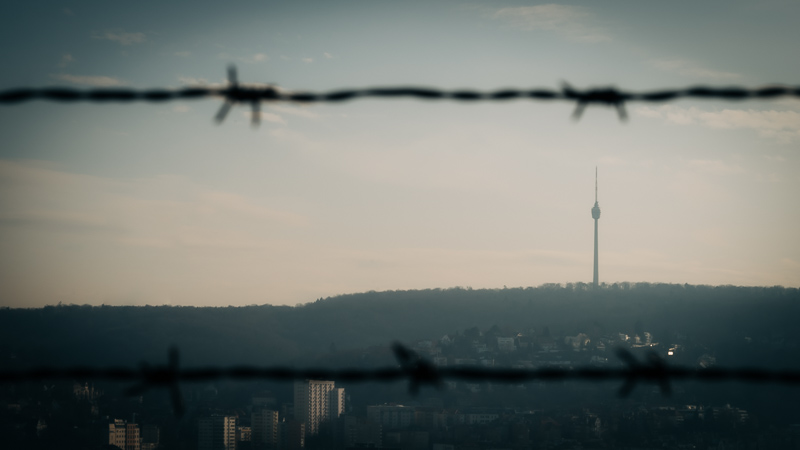
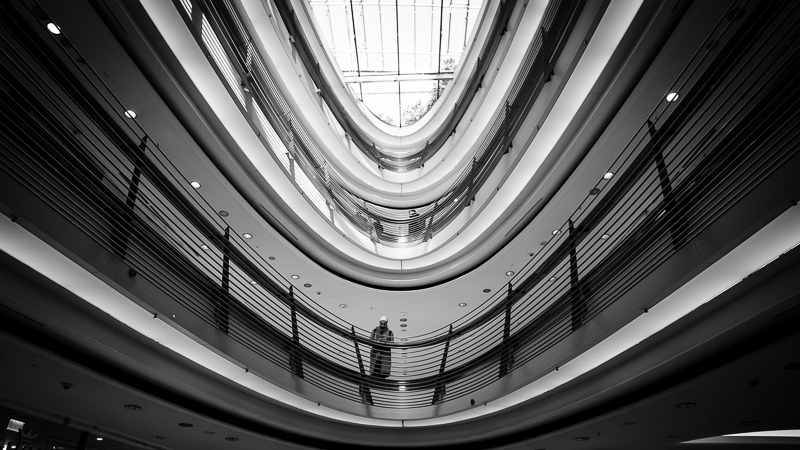
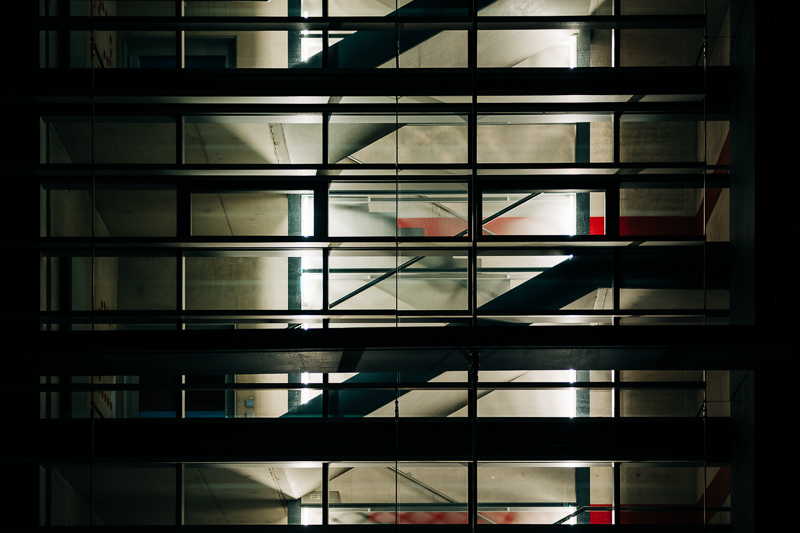

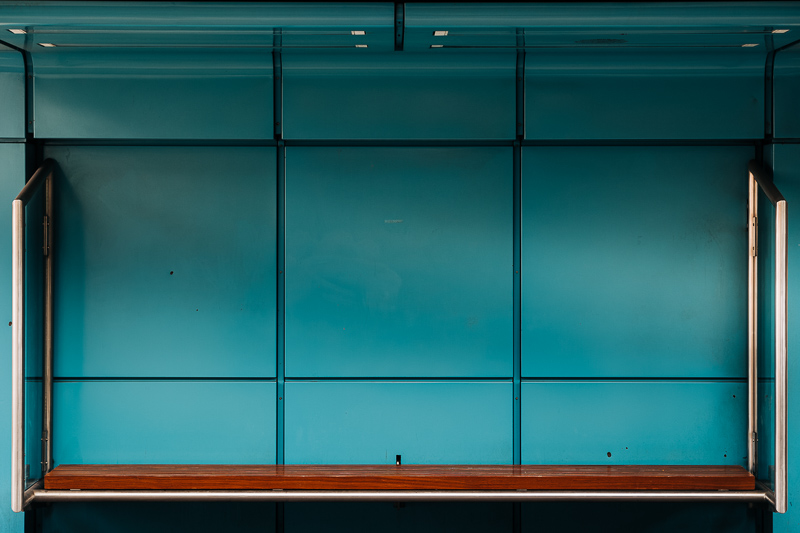
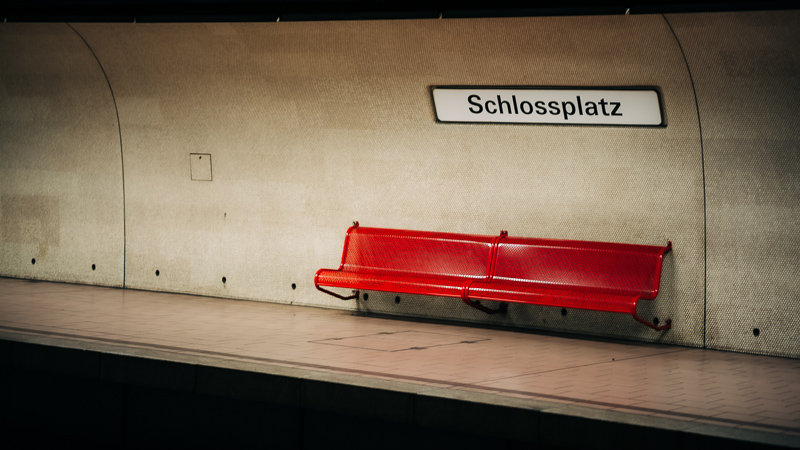
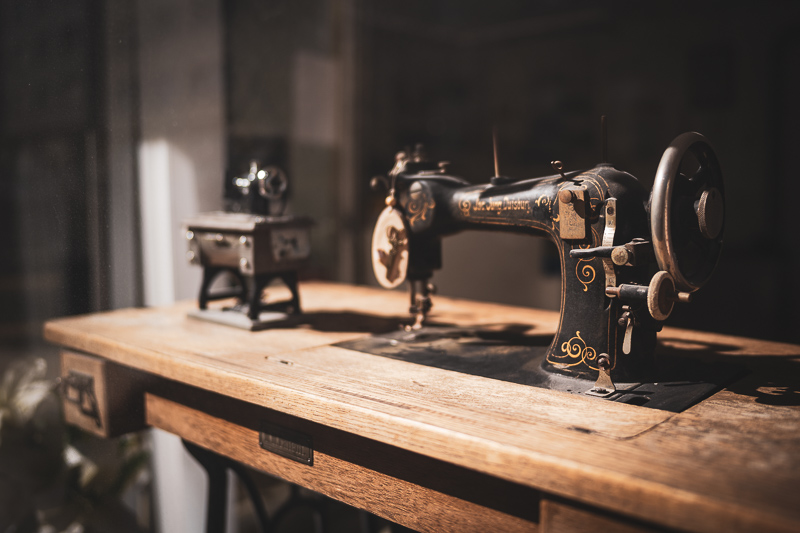
Further Reading
- Analogue Adventures Landing Page
- Lens Aberrations Explained
- All Lens Reviews
- How to take better pictures
Support Us
Did you find this article useful or just liked reading it? Treat us to a coffee!
![]()
![]()
![]() via Paypal
via Paypal
This site contains affiliate links. If you make a purchase using any of the links marked as affiliate links, I may receive a small commission at no additional cost to you. This helps support the creation of future content.
Latest posts by BastianK (see all)
- Full Resolution Pictures getting fixed - July 4, 2025
- Analogue Adventures Part 42: A wedding with Eastman Double-X 200 - July 2, 2025
- Vivo X200 Ultra – The Death of the compact Camera - June 29, 2025
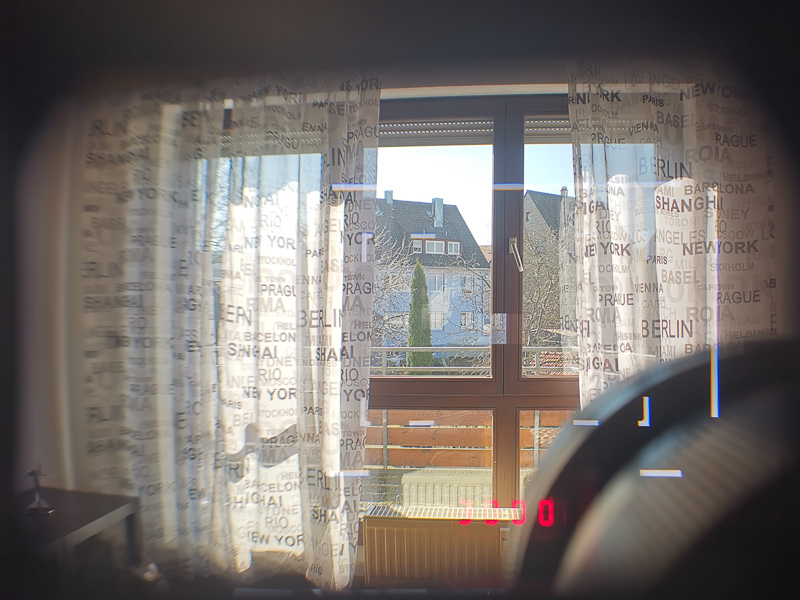
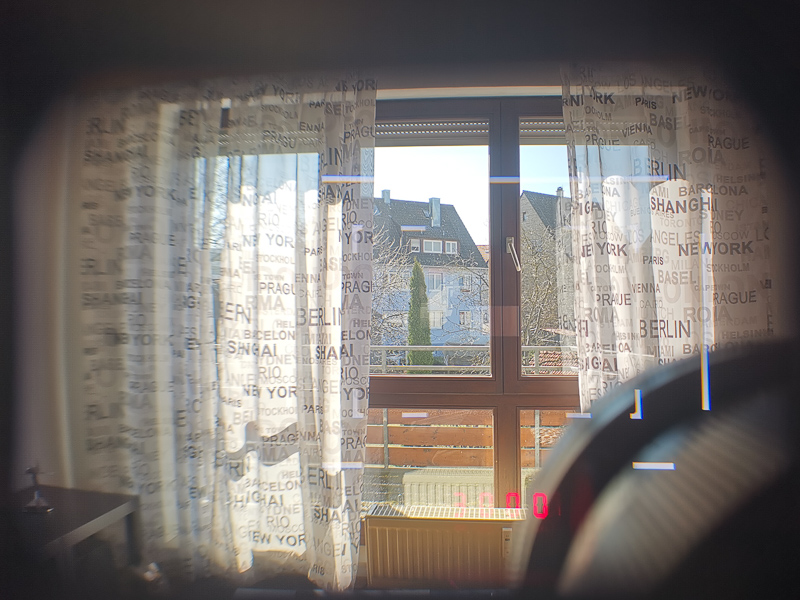



Bravo for so outspokenly pointing out that the emperor has no clothes. (Not that we knew that for a long time anyway, but it’s strangely satisfying to read it on this highly-regarded site :-)) Leica is simply the equivalent to golden USB cables for HiFi “enthusiasts”. 🙂
While I do appreciate Philip’s review, I think he’s missing the point, here. Rangefinder experience is everything. It teaches a lot about composition and how to see the world. Because it’s always the same magnification. Because of framelines. It takes a lot of time to understand the Leica M.
Totally makes you take better pictures in terms of composition if you don’t really know what will be in the frame, yeah…
You are missing the point. This way you are forced to visualize all of it in your head. Sure, you can do same thing with EVF but it makes people lazy when all if it is already done for you.
I totally agree. His ignorance is stunning. Rangefinder cameras are
a window to the world. A whole different way of seeing.
A camera is a tool. No more, no less.
Hear Hear! and what a tool!
What framelines? The only framelines where you can see what happens outside the frame are 50, 75 and 90mm.
With 35, possibly the most used focal length on a M, you’re basically seeing the whole viewfinder, and with 28 you’re barely seeing the whole frame.
Agree
I’m surprised at this review. on the one hand he disses Leica for its antiquity and then comes back with some very excellent images. is this a tongue in cheek review?
🙂 !!!!
To be honest, I was looking for an article regarding the announcement of the director of the IMF, that we are heading right into a worse recession than that of 2009, when I accidentally clicked on my bookmark to this blog.
As a procastination or coping strategy to slightly postpone the ominous news, I decided to linger. When I saw the M10 header, couldn’t help but think that, oh crap, Leica is gone bankrupt and now Bastian could finally buy a Leica without being a dentist, and go out shooting the end of the world as we know it in full luxury. I couldn’t resist the temptation to read on.
Much to my surprise – and disappointment – this blog is apparently cognitively immune to the Covid-pandemic, or still in shock or denial. Still, I kept reading, hoping for at least a mention or irony of getting one’s hands on an M10 in end times. Nope, full German austerity on that.
Conclusion was of course obvious, the M10 is cute, a temptation just because one can’t afford it, but ultimately a piece of uselessly beautiful camera with no advantages beyond rubbing it in on other’s envy.
This ultimately says a lot about our current predicament: let’s just keep moving along with the flow, with progress, economic growth, and capitalism – something Covid-19 has suddenly given everyone the ability to imagine an end to – and stick to the business as usual practice of modern day individual realization: consumerism as the very meaning of life, and what ultimately separates us from them. Them: those that lacking immigration status, a work contract or healthcare will inevitably die, and ultimately be lavishly portrayed for posterity in monochrome glory, in some portfolio winner’s exhibit by lensculture in Paris and aperture in NY, once this apocalyptic scenario is under the control of normalization.
I hope we can all see the urgency of getting our heads out of our arses, and stay the f**k home in lockdown, so we try and flatten the curve of spread of Covid-19, in oder to preserve as much as possible of the ability to respond and treat, of what’s left of health care infrastructure after neoliberalism and austerity turned it into a money machine.
An R0 3 virus with 20-30 times the mortality rate than the influenza, in 177 countries in less than 3 months, and with over 3/4 million confirmed infected and over 37k deaths, should – I sincerely hope – have more urgency than the IQ of an M10.
I hope you are all well and taking care. I suggest a photographers guide to projects to shoot at home, and how to perhaps document these strange and volatile times, and leave a memory for those who might survive us, miss us and continue living in the ruins of capitalism and environmental devastation, and make something better of with, something worth imagining, picturing and remembering.
Be well, be safe and yeah, screw Leica.
Cheers!
I thought this already was more ironic than my other articles.
At a time the article even included a “The Leica Fanboys” chapter, but being more of a pacifist I decided to remove it for the time being 🙂
The real irony is that your response here continues in denial and omission of the pandemic, and that since I wrote the comment, the 3/4 million infected are now hours shy of 1 million, the 37k deaths are now close to 47, and the 177 countries infected are now 180 (https://coronavirus.jhu.edu/map.html). Imagine if your M10 review produced that level of increase in clicks.
Still wishing you all well, that everyone here follows the 2m (6ft) rule of social distancing, wears a mask outside their home, sneezes & coughs into their elbow, stays home as much as possible, washes their hands as if life depended on it (it probably does), and for those grabbing your camera, remember: Covid-19 can stay active on metal and plastic for over 72hrs.
Salut!
Maybe you want to engage in some discussion about covid 19 at an appropriate place.
The comment section of our blog is not such a place.
I am sure most people are aware of the situation and we are more interested in offering distraction than getting into political discussions.
Thank you.
Thank you, not having COVID-19 all over the site, like everywhere else, is a welcome reprieve from the over-sensationalized news.
Actually you just don’t get rangefinder cameras. There is a certain satisfaction in shooting an admittedly outdated anachronism of a camera that transcends technology.
Too bad for you.
If you wanna shoot a camera that transcends technology, why are you using a digital one? Why not just use an M6 and call it a day?
You are totally right. The Everest mount is ultimate satisfying just because it is too hard to climb. The same for the Leica.
I always hate these guys who don’t want others to do what they can’t. This comment is religional accusation in the medieval way.
interesting article and congrats on your well deserved prize.
Like you’ve pointed out, Leicas are ‘Made in Germany’ lifestyle products much like a Porsche, Audi or Mercedes. No body needs them but if you can afford they’re nice to have.
Average Porsche is still better than average Suzuki (I believe most of us agree), while in this case I don’t think that the same comparison makes sense. It’s difficult to say that this Leica is better than average Sony A7(r,s) camera, actually it’s difficult to say it’s in the same league. With cars it’s not all about style (even though some may purchase them solely for that reason). But hey, to each his own, we all have our irrational needs.
My wife and myself are driving only Audi, BMW and Mercedes for the last 15 years – the ‘cheapest’ models, we are middle class. On paper, they don’t look really better than a lambda Japanese or American car. But compare the driving experience. There is no return. I wish I could afford a Leica system (a Leica camera without Leica lenses doesn’t make sense; why are you losing your time with Laowa and Voigtlander?), especially since the M11 that looks, even ‘on paper’, the best FF camera in the world in terms of Image Quality.
This is absolutely correct. The Leica camera without a Leica lens is indeed something not worth reviewing. One of the main attractions of using a Leica M is its compatibility with the superior M Lenses.
Hello Bastian,
thank you for the calm approach to your discussion of the M10. I have been using analog Leica M since 1989. Back then it was a blessing to my Nikon F4 or FM or FE, because it took me away from my constant concern with camera technology. My photos got better in design after the simple mastery of the then 2 sizes, shutter speed and aperture in flesh and blood had passed.
Over the years I equipped myself with many Leica M lenses, including the Noctilux, and used the M system exclusively at the end of the analogue period. With the beginning of the digital age, I returned to Nikon, especially since I had enough lenses there.
I came to Sony with the NEX 5 and have seen the improvement of this system ever since. At the end of last year I borrowed an M240 from a friend for 4 weeks and went again specifically to compare my extensive Leica M lenses and the native Sony and Zeiss lenses on the A9 and A7RII that have since been bought. My observation coincides with yours, the quality that can be achieved with the Sony system is higher. The difference between the A9 and an M240 in terms of discretion (volume) is clearly in favor of the A9.
As a result, I expanded my lens portfolio with GM lenses, which bring much of the more analog look of the Leical lenses to a modern level. For a 50mm that is really sharp at the edge, for example, I bought the 55mm Zeiss, which I tend to like less from the bokeh.
In this context it should also be mentioned that for the first time Sony designed the AF system with the 3D tracking on the A7RIV and the A9II so that I use it in everyday life.
In the end, yes an M feels good, I wanted an A7RIV to do that too (gladly with a little extra charge).
In this sense, thank you to your team for the great work you are doing.
best regards
Jürgen
sorry the translation was not their
Sorry I have to disagree on the accuracy of the rangefinder comment. I shoot my young children at 0.95 very often and my hit rate is very good. I actually prefer shooting with the RF than the EVF, it’s way quicker once you’ve had the practice.
My recommendation to you is get a 35mm Summicron and get practicing!
Agreed, I’ve been able to focus f/0.95 lenses with a speed I simply couldn’t do on my Sony cameras using live view or the EVF. With practice, the rangefinder patch can make focusing become quicker then using the evf, it also can allow you to setup shots using predictions of where a subject will move into focus, but hasn’t done so as of yet, often as what’s done with street photography.
The Voigtlander and Zeiss lenses made by Cosina for M camera systems, can also be adjusted by competent repair technicians, not just the manufacturer. Usually, this involves slightly changing a shim thickness somewhere internally, and doesn’t take too long to do.
Quite a few lenses I’ve owned, like the 50mm ASPH Summilux, are sharper on the M240 and M10 then my higher res Sony 42mp sensor. There is truth that the lenses designed for film systems work better on Leica, due to their thin cover glass/ micro lens design they employ. This has been shown by Bastian on his other blogs here and is the nature of the beast really.
If anything, I would welcome a competitor to Leica, in the form of an alternative Digital M rangefinder camera system that is more affordable or uses more advanced sensor tech. If Cosina partnered with Canon or Sony to make an alternative camera to Leica’s, we may see some real completion, price reductions and innovations take place.
But the enjoyment of using a rangefinder camera is a different experience then using many other modern cameras. For me, it has nothing to do with being invited to Wetzlar, cafe discussions or any of this other stuff. I actually enjoy the image making process of using a rangefinder camera, more then I do with a fully automated modern camera that can track everything and shot at 20 FPS. This slower approach, makes the process more enjoyable for many.
I guess it’s the same reason people ride vintage motorcycles and drive older cars. It’s not that they get us to our destination any quicker, but they do sure make the journey more fun, and sometimes that journey is more important then the end destination.
I perfectly agree with Chris. Disregarding for a moment the outrageous Leica prive tag, there is people who enjoys drowning in the abyss of a Sony menu system and other who prefer to set aperture, speed, focus and click!
And what is faster is highly personal and also depend on your photography interest.
The thing is, you can do that with every camera. You don’t have to use the menu.
Not having options has never been an advantage.
Only Leica users try to claim it is one.
You are obviously right Bastian but to me it’s important how easily I can exploit all those options.
It must be a joy for you to read the 200 pages (or maybe more) instruction manual of my Sony A7rIII. I’ve got one and when I use it for mountain landscapes at dawn and sunset mounted on a tripod or in a studio with flashes is certainly a superior camera to a Leica. But when I use the camera hand held in daylight or for portraits in natural light on average the Leica shines.
Look at your photos taken with the M10 and the Voigtlander 75/1.5, they have a pleasing charm that in my memory put them amongst the best I’ve seen on your site.
That’s simply an old amateur opinion, not a Leica fan nor a Sony detractor. Cheers!
I have just got an A7 because my 5dmk2 finally died (I like to buy secondhand and you can still get good photos with older equipment) , and the menu is fine. Plenty of custom buttons if you want to make it easy/quick to use.
Well said Chris. Feel the same way. It is not just about the output unless you are reliant on making a living off your photography. Modern cameras basically take the image for you.
“Modern cameras basically take the image for you.” Well, exposure-wise maybe, but you are still the one who has to come up with the idea and execute it. Deciding what should be sharp and what should not, deciding the moment, angle and framing, deciding whether you want to freeze an action or blur it. It is you who does have a reason to take the photograph, not the camera.
I think you are in the minority.
Some time ago I went over a lot of photos made with 50/1.2 lenses on Flickr and one thing I’ve immediately noticed was: rangefinder users have abysmal hit rate with those.
Hm, I have used 7artisans 50 1.1 on film (leica m4) and A7 quite a lot, and leica hit rate was definitely higher. That’s considering that I’ve had sony for much longer and have used it almost exclusively with manual glass, so I’m quite good at that. Obviously, if you have something like A7(III) with a new sigma 1.2 AF lens and eye-af, your life will be much easier, but manual focusing with EVF vs RF is a tough call.
The “shimmering” trick Philipp promotes works well only with certain lenses/apertures/lightning conditions, and not so well with 1.2 lenses where you often have to switch to magnified view for critical focus. It makes things slower, and, if you’d like to take a final look to composition after focussing, will also throw focus off quite often. Same for shooting stopped-down: the differences in sharpness become essentially invisible in EVF even in magnified view, but still visible in pixel peeping. With RF you always get the same split view no matter what, so focussing is easier.
One issue of RF focussing not covered by Bastian is focus shift (with aperture): there’s no way to account for that on RF system, so lenses are optimised for certain aperture, usually one/two stops down where you want to be anyway for critical sharpness. That may explain lower apparent hit rate with likes VC 1.2 35 or VC 50 1.1, for example. The thing is, however, that if you know what you’re doing, you can get around that (i.e. choose lens with less focus shift, re-adjust the lens to be spot-on WO or just back off/forward couple of cm when shooting wide open before hitting the trigger).
Indeed lenses with focus shift are a real problem, which is also true for (D)SLRs.
Even more so, as many of the M-mount lenses show it, for example the 35mm 1.4 FLE, VM 50mm 1.2, Zeiss ZM 50mm 1.5, Summilux-M 75mm 1.4 and I am sure many more.
I added a note on this.
Absolutely zero chance that you get the same hit rate shooting a rangefinder at 1.2 than a Sony A1 and 50mm 1.2 with real time tracking at 1.2 on a moving subject. Zero chance. Let alone eye autofocus!
You may prefer the experience, but under absolutely no circumstances is it ‘way quicker’.
Thank you for giving your personal opinion on the Leica M10. I have agonized a long time over getting into the Leica M system and ultimately decided not to; your appraisal of the M10 confirms many of my reservations.
As much as I probably would like to use a Leica M camera for street photography, it cannot be my one and only camera. And as I don’t want to have multiple camera systems, I decided to stick with the Sony FE system.
Excellent article, as always! I’ve been reading your blog for a long time and never commented, but this article is very timely so I can’t resist 🙂
I recently bought a second-hand M10-P and have similar observations in terms of image quality and ergonomics. I also own an RIII and an RX1R II. I’m not sure I’ll keep it. I have a serious obsession with lenses, but unlike you, I’m not a professional photographer nor a photo blogger, so I have no good reason to stockpile awesome glass. This is exactly why I enjoy using the Leica, even though I am clearly having a first world problem here.
I like that the image quality on the Leica is not great. It forces me to focus on the content, not technical perfection. I’ve a friend who’s shooting with a film Nikon, and half of his shots are slightly blurry or out of focus, yet I like them; when it comes to my own pictures, it must be pin sharp on all the 42 megapixels. Shooting on a Leica, I’m glad when I nail the focus and exposure, but I don’t discard slightly blurry pictures if I like the content.
The price of the lenses is, in my admittedly weird case, a plus also: I cannot afford a 50 APO-summicron or a Noctilux or whatever other highest quality Leica lens; I only have a 50 f/2 and a 90 f/2 (pre-ASPH), plus the excellent 7artisans 28 f/1.4. Knowing that I’m not going to get the best lens for this body, it’s easier for me to focus on actually using the few lenses that I have, instead of reading this website and dreaming about all those sexy, relatively affordable primes.
Another thought I have is: when viewed on a small screen, all images are technically perfect. If the result is the same, why not have a bit more fun in the process? You have to admit that Leicas are a pleasure to use recreationally, when you don’t absolutely need to get the shot.
In conclusion, I’m not even sure if I’m going to keep the M10 or not. My A7R III is half the price and is superior in every way, plus the lenses are just better (though larger). It’s just not as fun to shoot with. I think once the covid-19 is over, I’ll go to the Alps to properly try the Leica in the field to make up my mind.
Hello Bastian,
I’m not so interested in the Leica world but, as many other amateur photographers, I’m curious to better understand the meaning of a choice like that. Your article is very well done, well written and balanced… then, above all, the sample pictures are really really good… a pleasure to see (and admire).
This is the plus of this site: good reviews with great pictures. You and the team take fantastic pictures. Kudos to all of you!
Thanks also to keep this site active in these period… a moment of leisure is always helpful.
Thank you for your kind words, greatly appreciated!
I’m under deep impression after reading current essay, it was the first time when I didn’t want it to end =)
A kind of hypnotic feeling, a mix of stunning photos and so personal, so intimate thoughts, that are far beyond the scope of a regular review.
Pretty much agree with Manuel, cheers!
Thanks for what must be the sanest Leica review I have read. I do like the Leica legacy for some reason but I ain’t masochistic so I would most likely end up feeling quite much like you if I would ever be able to get one.
What did strike me is the very pleasing images. They often have something in their feeling and how colors, contrast and much other things come through that is really lovely.
I know much is in the post process. But a side by side test with the Leica with its native lenses vs a modern Sony mirrorless with its native FE lenses at the same focal lengths and apertures would be very interesting for a future article I think.
Best regards from Sweden!
I would love to compare a lens like the new Summilux-M 90mm 1.5 to the Sony FE 85mm 1.4 GM or the Summilux-M 50mm 1.4 Asph to e.g. the Sony FE 50mm 1.4 ZA, and especially the Summilux-M 28mm 1.4 to the 7Artisans 28mm 1.4, but I don’t have access to those expensive Leica lenses.
I also fear that few Leica owners would be willing to send me those lenses, having a guess how the result might come out.
Therefore this is rather unlikely to happen, unfortunately.
Roger Cicala of Lens Rentals did scientific test of several 50mm lenses a couple of years ago. This is onlinez somewhere. Summilux Asph and Summicron Apo surpassed Otus and Sigma Art in sharpness in the center of the frame and were slightlly behind or same in the corners. Of course Summilux is one third the size and weight of Otus and Sigma and it is a 15 a year old design.
https://www.lensrentals.com/blog/2014/06/comparing-rangefinder-and-slr-50mm-lenses-version-0-7/
The Leica lenses are indeed superb and have a remarkably small size. Note that Roger’s results have a couple of apparent errors (although probably not big ones). For the 50mm Summilux, he shows the exact same results at f/1.4 and at f/2.0. Normally the f/2.0 results should be better. For the 50mm Summicron, he shows the exact same result (1200) for center, middle and edge. Normally the center should be best. The results shown are impossible or nearly so. They look like input errors. As Roger notes in the comments, he no longer has the original data to check the results.
I’ve had the 28mm 7artisans and the 28mm Summilux at the same time and the 7artisans was lower Res, lower contrast and the colours were not as natrual. Please see my comparison below.
https://www.flickr.com/photos/143385549@N02/sets/72157708231868654/
I remember seeing such a comparison a couple of years by a Leica owner with both the Sony A7R III and Leica M10 on Leica rumors. “The Sony A7rIII shots capture much more detail, either using the native Sony lens, or using the 75 Noctilux.”
https://leicarumors.com/2018/07/21/comparison-of-leica-m10-vs-sony-a7r3-with-the-best-of-leica-vs-sony-lenses.aspx/#ixzz6IJyziRQc
https://leicarumors.com/2020/02/05/medium-format-quality-test-results-leica-m10p-vs-leica-m10m-vs-sony-a7r4-vs-phase-one-iq4-with-optimum-lenses.aspx/
https://leicarumors.com/2019/01/20/mega-shootout-best-of-the-best-sony-leica-and-phase-one-comparison.aspx/
Still waiting for a rangefinder style built-in EVF full frame camera with >42mp of resolution from somebody…any takers for my money on that one?
Well, there’s Leica M10 monochrome, which is ~40mp equivalent 🙂 It’s even more limited and expensive though…
The Leica Q2 would qualify as a rangefinder style built-in EVF full frame camera with > 42 megapixels.
Dear Bastian,
just compare your Sony 85 1.4 on any of your Sony body with the Leica M10 and Voigtlander 75 1.5 combo (that according to me, looking at your photos, produces very pleasing results). Compare them just out of the camera and after post-production. It’s a challenge 🙂
Thank you for all your beautiful and entertaining lens testing.
Umberto
Thank you for the article. I’d never buy something like this simply because everything in the system is so obnoxiously priced. However, it’s nice to read about the other camera systems just from an educational standpoint. If you’ve got the money, and you enjoy the Leica system, then hey more power to you.
I really like the monochrome shots in this review… and since I like b&w pics I often try to convert images into b&w and always find something missing… is it possible – that in these weird times where most of us have a lot of time on our hands but are mainly obligated to stay at home – to get an article on converting color images to b&w? Pretty please :-)))
Anyhow, thanks for another wonderfull review…
And I must admit if I had money to spare I’d love a analog Leica and the 35mm Ultron to shot b&w film… 😉
Cheers, A.
I will consider doing that if there is broader interest in this 😊
Excellent.
There definitely is! That would be a very useful article. Great review, by the way.
There is. 🙂
Confirm interest in b&w conversion. This can be done in a million ways – some of them good – so happy to be inspired.
There is interest indeed!
Plus 1
I would also be interested in a b&w conversion article — or, frankly, any post-processing articles you or the other authors would write. Thanks for all your hard work!
Would love to read about your take on that, yes!
Already here 🙂
Acceot your assessment of the camera. Very well written article, thank you. Yet, sometimes a piece of equipment like this is more than a technical tool that can or can’t do one thing or another. The inspiration and motivation that such a camera can bring should not be underestimated. It is an expensive inspiration and I will certainly not buy one. But on a much lower level, if you put a Voigtländer 21/3.5 or a Kamlan 50/1.1 MKII on an a6400 they turn the camera into something very different – it is hard to descrive. It feels good, it makes me want to go out and take pictures.
Well done.
This was the first Leica_Review i read ever.
some time ago i bought a Leica SL2 because i got mad of my Canon AE1. I was the only Person in the 80s who had bad experience with Canon equipment.Canon told me.I am happy with my 2 x A7II .
Thanks for your review
Great job, pretty pics👍
I love Leica cameras and lenses but they are very expensive for me.
Great camera with Voigtlander 75mm f1.5, I wish Cosina makes that lens for Sony.
Me too…
M10 + Leica Noctilux-M 75mm f/1.25 ASPH. 😫
A perfect lens but 14000$; hideously expensive…
Dear Bastian, Could you please check my Sigma 35mm f1.4’s pic in your “HOW TO CHECK HOW DECENTERED” article. I want to know your opinion. Thank you.
Sorry, this review leaves me a little bit underwhelmed – especially compared to all the other fabulous reviews on this site. Now you all might guess that I’m a Leica guy. But I am certainly not: I never owned one and maybe never will. The #1 reason being that I can’t live with the .7m focus limit, even as a kid with my first roll of film in my first camera ever I already wanted to go closer very often.
Nonetheless, I don’t think at all that the M10 is such an outdated toy for the rich as this review does suggest. It is much more than that I am sure. Even the price is not only so you buy into boutiques. It is cause they do such a low volume production with a lot of hand labor. It’s not that Leica just makes a €999 body and then only puts an insane price tag on it. (In contrast, Hasselblad tried exactly that with their Sony NEX-7 version … yes.)
But okay. This remembers me that there actually is a second review on this site I don’t agree with: The Voigtländer 35/1.4. I bought the FE variant and it is my #1 favorite lens of maybe the last 10 years. Apart from that, I thoroughly enjoy the HUGE quality of all your reviews. Keep up the good work!
They definitely do charge a heavy premium for the Leica name. See: the Leica cameras that are just rebranded Panasonics.
Thanks, you almost cured me of Leica lust!
The real strength in the Leica system is not the cameras, it’s the excellent lenses – but nowadays I can use these lenses on any mirrorless camera, so the need for a Leica camera is disappearing …
Except that the sensor of Leica cameras is optimized for their lenses; you are losing quality using these lenses on other cameras, especially in the corners.
A lot of opinion for so little knowledge.
Applies to both your comments.
Great review! I have been using Leica for a year, and share many of the observations. As much as I enjoy Leica, I agree with this “cult” assessment (the same can be said about Apple and many other brands). But aside from the brand premium, Leica rangefinder lenses were the selling point for most people. The article is a little unbalanced when all the lenses the author used were third party lens, at less popular focal length (21 and 75?). At least for me, owning a Leica M means permanently mounting a 35 or 50mm Leica lens. Hopefully, Bastiatank would find the time to share his experience with these lenses on his M10.
I would frankly be more concerned about the lack of shadow detail before posting images like your B&Ws here:
#1The gal’s hair,
#2, most of the shadow area around the pigeon,
#4 the Stairs,
and the last pic of gal with coffee cup featuring a black splotch that is her hair!
all photos to support your otherwise honest if clueless critique of the wonderful camera that is the M10.
There is in fact no other camera that offers the finder or rangefinder experience of the Leica M. Fuji have something going for sure with the X Pro 2, and 3. Are there many aspects of that camera superior to the Leica M9, 240 series or M10, sure but still none the same experience. If the M doesn’t suit you, kudos, there are many other fine cameras out there, and then the Sony line too. I’ve used many of these other cameras but nothing inspires me to take pictures more than a Leica M.
Not sure you understand the concept of high contrast B&W 🤔
In all of those pictures, additional information in those parts of the image is totally meaningless.
Unfortunately in the days of HDR some people think a picture is not allowed anymore to show pure black or white and instead go for some evened out boring tonal curve where everything is just grey.
I am tempted to recommend having a look at Bruce Barnbaum’s books “The Art of Photography” and (the newer, imho better) “The Essence of Photography” which are both great pieces on B&W photography.
If you want to toss these “high contrast” images off as “artsy”, fine. You are reviewing a camera here and criticizing the metering. People who shoot Leica know what to do with the info the camera provides and if in need, one can carry a light meter along.
The suggestion stands; take the time and care to get your shadow detail! Yes, it matters. “Meaningless” is very telling of your work here.
And in discussing rangefinder focusing (which is very accurate) you might also reference that it offered a nice alternative to the SLR which was what most folks who chose not to shoot rangefinders would use back in the days of film. The SLR had mirror slap, hence manufacturers provided a button on their pro models to lock the mirror.
This and many other details that your readers might be interested to know in assessing the camera, and explaining in part why for example M6 cameras are holding their value very nicely; more than one can say for a Sony that is one or two model editions back.
Did I say anything about artsy?
If you don’t like the way I process my B&W images, fine.
Seems many other readers disagree.
Maybe you can share some of your work, I am curious to see as I now expect it must be excellent and maybe the readers can learn something from you instead of me then.
PS: I did talk about benefits over SLRs back in the day, but to notice that you actually need to read the article.
PPS: This article does not deal with analogue Leica cameras. The loss in value of a newly purchased M10 (this article is about the M10, if you didn’t notice) is roughly 3000$. Enough to buy 2 brand new Sony A7III…
Hi Bastian,
The high contrast B+W you’ve published here are terrific – they’re my favourite of the bunch (the colour shots are great too). They B+W work as intended – strong tonal differences clearly leading the viewer to the point(s) of interest.
I echo your sentiment above about this fad of avoiding pure blacks and whites. The fetishising over pulling detail out of deep shadows etc. just because it’s possible, is actually creating this whole class of fake-HDR style pictures chock full of unnecessary detail and with almost no tonal variety.
Thanks for the time and effort you all put in. One of many great reviews on this website.
Due to popular demand I am working on an article on B&W conversion now, but it may take some time to finish 🙂
Leica boss: “Argh, another article exposing our business method! Jürgen, fast, write a fake comment as countermeasure!” “But under which name?” “Doesn’t matter, simply take… David. Just make sure to really make this Bastian dude seem clueless.” “OK, boss, will do it!” (Military salute, leaves room.)
I’m currently shooting with a Sony A7 MkII using the old (but mint) Leitz Summaron 35/3.5 and the Elmar 90/4 (retractable). Plus a plethora of Voigtlander lenses and various Nikkors. All are fitted with K&F Concept adapters.
Bastian’s article tends to reinforce my continued use of these items. I’d considered moving to a Leica body (and I still may given the quality of his accompanying shots)) but the ease of quickly adjusting my preferred exposure via the EVF is the deal maker/breaker. (And the A7II is a hardy beast having easily survived a drop onto a cement pavement.)
As they say, spend your money on lenses, not bodies.
This is the best reading so far in 2020. Your writing blew my fantasy about Leica and gave me some nice insights. Thanks.
I have used Leica (film and digital), Sony, and Fuji concurrently over the past six years. Hence my comments are informed by firsthand experience:
–Excellent review, certainly one of the best I have read regarding the Leica digital rangefinder platform (and I have pretty much read them all dating back to the M9 era).
–I respectfully disagree with the suggestion that Leica cameras and lenses are just for rich people who want to visit a fancy boutique. While there is certainly a group of Leica buyers who fit that category, there are many (like me) who are not wealthy and get into the system by purchasing used Leica equipment.
–With the rapid expansion of full-frame mirrorless options since the original Sony A7 in 2013, Leica has lost its hold on the claim to producing the highest-quality 35mm lenses. However, there is still something fun about using a Leica rangefinder, and many people enjoy the optical rangefinder as an alternative to the EVF (see Sean Reid’s site). I think your article would benefit from taking a less dismissive attitude toward photographers who acknowledge the limitations of the Leica rangefinder system but enjoy it and use it for other reasons.
All in all, great review. Thank you for taking the time to write it. It is refreshing to read something calm and rational. But please consider that not all Leica users are rich or in denial about the system’s limitations.
Talking about your last sentence: many of the recent comments tell me otherwise, unfortunately.
Which is funny, as in the manual of the M10 Leica itself clearly states where the limitations in terms of accuracy are…
Sadly, I have to agree with you …
I really enjoyed reading the reviews on your site, until this one. I get it, Leica is not for you. But why put down the people who like it and use it? Obviously, not all of them are in it for a fetish, a cult, or a social status experience; nor all of them buy new or attend the Leica parties. I am sure you understand that. Your passive aggressive attacks on the Leica fanboys reveal more about you, actually. Why so much anger? It doesn’t make any business sense either, as this sort of putting down of people who think differently from you turns off some regular readers like me. And then you continue reviewing the lenses for a Leica to make some $ off of us? Hypocritical.
Ironically, the pictures that you took with a Leica, as many have pointed out here to you, are some of your best.
Why not be happy that the world is big enough for Leica and Sony and other choices to be available to the artists to use whatever they want? There is a difference between being
‘right’ and being an effective member of a community.
If you think I review lenses to make money you really didn’t get anything.
That is really a rather entertaining idea!
This is the balanced comment in this thread. Thank you. Different tools work for different people, while a few lucky people can use any variety of tool and get great results. This is true of guitars, golf clubs, sports cars, etc. It’s a big world. Why not look at the work, or art, or result produced and comment on that? Some people find Patti Smiths Polaroids to be fine art. That camera is her tool, and I’m guessing it wouldn’t review well in a lot of forums.
I own Fuji cameras these days. I had a brick of a Leica, a primitive Digilux2, many years ago that I loved fiercely for the way it made me feel when taking a picture. There is something to that, and it is individual and that is ok.
If lines need to be drawn, I give extra support to anyone who shoots with any camera with a real lens, and that is not also a phone.
Excellent photos made with that Leica by the way. I enjoyed them.
Peace.
Right, the real Leicaman (not the snobbish!) is a summicron shooter (35 or 50), buys and sells used (rarely losing money), likes to travel light and doesn’t care for pixel-peeping.
Lenses, buy used are not more expensive than Sony. Sony lenses quality vary a lot from piece to piece: I tried a Sony 55 1.8 FE by a famous Sony reseller, then bought one and it was a completely different story, finally I sold it losing 1/3 of the price. Anyway I am conscious Sonys are much more technically advanced cameras. And I must say that Sony produced the wonderful RX1 that is by far the modern digital camera closest to the true original Leica traditional heritage.
There is nothing like the beautiful,milky -elasticity of images taken with a Leica. Why put a milk bottle bottom, on ‘the’ street photographers’ ultimate machine?
If you can’t afford leica lenses, then you shouldn’t buy a leica camera.
Prize my leica from my cold dead hands!
Please lord bring back real photographers, and let’s say goodbye
to anal retentive technicians!
BTW…some of your shots were quite good🙂
A warm welcome to a true Leica fanboy 🙂
Really an interesting and highly enjoyable review.
I never quite understood all this Leica fascination, personally. Or rather, I like some old equipment and similar things because of semplicity or what have you, but I wouldn’t care for it at all if it was priced the way anything Leica is. If I’d won a Leica (especially in these days) I would have waited about 0.5 seconds to put it on ebay still brand new, so I commend you for your bravery 🙂
While the photos look lovely, if you’d told me they’d been shot with an a7, I wouldn’t have any trouble believing it (nor would most of Leica’s fanboys, methinks). And considering all other usability issues and annoyances…well, it’s not a pretty picture, surely. Can I also say that having to buy an evf (which is mandatory to use plenty of lenses) for a camera that costs as much as two d850 or a7riv…talk about fleecing, good grief.
I’ll keep looking at Leica as rich old hipster’s instruments for the time being 😉 it’ll be interesting to check the performance of native lenses when compared to the same ones mounted on Sony cameras, so there’s that. Cheers!
Good morning, at the beginning of your article you mentioned that you won this camera in a photographic competition, what a contest it was, what was your photo that won, please link, so I ask out of curiosity, and your pictures are beautiful
It was this one: https://www.weibo.com/ttarticle/p/show?id=2309404459491310567721
Unfortunately it seems information is still only available in Chinese.
Apart from the insane price tag:
Perhaps the struggle with the Leica is worth it: The pictures you shot with it are gorgeous, they have a fantastic look that seems for me different to your Sony pictures. I can see your style of shooting, but there is something different.
Nice pics!!!
I found an old M39 Leica IIIg with 50mm f1.5 summarit at a thrift shop for a song and have run a few rolls of B&W through it and enjoy using the camera, what a feel to hold it in your hands – just ooozes quality.
that being said, I have no desire for a current one.
I would also appreciate an article on B&W conversions, I’m in a weird point where I’m finding myself shooting as much B&W medium format film as I do my sony and almost all my digital photos end up B&W so I would love to learn more techniques to make them better.
Film shot
https://photos.app.goo.gl/D7Gp6UZevtsYaYnA8
Similar shot – digital
https://photos.app.goo.gl/gXF7V1BcEoQ4EfjL9
There are snobs, anti-snobs, and pragmatists. I had a Leica M3, vintage 1957, with an f/2 Summicron for a while and never really got the Leica mystique, even though I’m a bit of a pragmatic snob. I like nice toys but only if they’re practical, the minimal criterion is that they do the job. Ultimately, image quality is what matters. No normal viewer cares what camera was used or how the photographer “felt” while making the photo, only whether the image is appealing.. Cameras are tools. It is nice to have nice tools (toys) but only if they do the job properly. It appears that digital Leica’s are not terribly good at doing the job, compared to many less expensive, easier to use cameras and lenses. Great review, great comments. It’s easy to tell which commenter drank the Leica kool aid.
I compare Leica to Rolex or Porsche. If you don’t have one is because you really don’t care about it or you can’t afford it. If you test a Porsche in the traffic of LA you can’t feel the power….same with Leica if you test the camera with third party lenses. After reading your review i have the impression that it was pay by the competition. Yes, my first camera was a Leica and my last camera will be the same Leica. On another note, great pictures, what it tells me you are a good photographer wich have nothing to do with the camera but your skills.
Ah, another Leica fanboy.
1) I do not get paid to write anything by any company. But thanks for the insult and the insinuation, already tells a lot.
Who would pay me? Do you think Sony/Nikon/Canon/Fuji care about the minimal amount of digital M-mount cameras Leica is selling?
First think, then post.
2) The “rangefinder experience” and all the disadvantages of the camera I mentioned do not change with first party lenses
(of course the rangefinder generally sucks with all lenses where there are no framelines for).
3) I tried and used cameras from many different brands. Maybe you should do that too.
Hi Bastian,
very nice review as usual! I think, however, that you miss the point of the system! Before explaining why, let me emphasise that I’m not a leica fanboy, and fully agree with your conclusions regarding “color science”, image quality and limitations of M10. I also don’t own a digital M (likely never will too as unlike you I’m not in position to win a photo competition 🙂
That said, the reason I think you’re missing the point, is your choice of lenses: while all nice, two out of three are completely not in the “spirit of M” as fanboys say. Nokton is ok, although 1.5 mid-tele is borderline for M, but the other two are really exotic. Wide angles generally don’t fit RF cameras well because a) you don’t really need RF to focus them, b) there’s no way to account for parallax properly in this case, so framing is tricky. The 7Artisans is also excessively bulky, and don’t tell me is even heavier: that’s a niche lens even by leica standards.
The M will never compete with SLRs in flexibility (zooms, wide-angles, metering, AF, the list goes on), but it has found a niche in being a system which offers compact high quality cameras and lenses for those who find that 28-35-50-75-90 f2-4 primes is all you need. That’s because high quality lenses which are faster tend to be bulky, and wider/more tele require external VF so why bother with RF at all (i.e. your situation)!
Replace your VC15 and 7A21 with 28mm summicron or 25mm Skopar, your nokton with 75 2.5 Heliar or tele elmarit 90 2.8 (thin version), and add something in-between for completeness (either 50 or 35 mm summicron would do fine depending on other choices, i.e. either 25-35-75 or 28-50-90), and be happy!
The 7artisans 28mm 1.4 is smaller and lighter than the Leica pendant if I remember correctly.
Maybe you missed some parts:
Rangefinder focusing is easier the slower the lens is as less accuracy is needed.
I recommend to stick with 28/35/50/75 mm lenses mainly and I did primarily use 28 and 75 mm.
Using only slow lenses is certainly not an option for me.
They don’t serve my style of shooting.
If I was happy with the DoF these lenses (4/25, 2.8/90) provide I would not be using a full frame system.
7Artisans 28 is comparable in size to summilux (well, slightly smaller), but that’s not the point: Leica is happy to sell summiluxes for those who strive for speed, but they sell way more summicrons and elmarits than summiluxes because that’s what the system is good for, and that’s exactly my point. If you’re using it with big fast wide tele lenses, you’re using the system for what it is not good for, and thus will be inevitably be disappointed.
As I said, M is a very limited and niche system, and the fact that your shooting style does not match its limitations just means that you’re better with SLR/MILC unless you’re a true Leica fan, which you seem to agree with. It’s obvious that it is possible to get better (and more flexible!) results with MILC, especially considering the M prices, but it does not mean that digital M is no good at all. It’s great fun to use, it’s small (with small lenses) and quick to operate, and actual IQ is comparable with cameras released at the same time (M10 was released in 2017, and the noise/dr is slightly better than a7/II (2014) and worse than A7III(2018), and Sony is best with sensors, right?). The lenses are “slow”, but compete well in IQ with the best in class at fraction of size, and are joy to use if you prefer MF.
To conclude, I’m not saying that digital M is worth it (it’s not), but just that to have any chance to appreciate the system you need to go slow, small, and within framelines.
For those who find RF focussing is masochistic and slow, you might find this old digitalrev video funny and useful:
https://www.youtube.com/watch?v=D_zGXERMRQU
the point is, with manual focussing you need practice to do it properly no matter what system is used.
This is 9 years old. I am comparing to camera systems here that did not exist at that time.
Manual focussing experience did not change much since then, however 🙂 If anything, I preferred MF on my original A7 to that on A7rIII (“shimmering trick”!)
I use old film Leica’s. I will tell you a benefit of the rangefinder focusing mechanism; it is easier for some to look at the rangefinder focus patch and align that first, frame – then shoot. And it is much better for my eyes to do that since I am an eyeglass wearer too. It strains my eyes less by just focusing the rangefinder patch, align it to what ever I want to focus on, compose the press the shutter. Done. It is much more straining to look at a SLR, DSLR and do that. Some people like that from rangefinders. It’s a different way of taking photographs.
Brilliant (and long overdue). Leica mania strikes me as a sure fire way of testing the IQ. Those afflicted with it may be loaded, but in terms of IQ…
BTW, I was surprised by the person who dissed you for not talking about the “elephant in the room” (pandemic). While I completely agree that his input was not very helpful, one interesting idea that he did come up with was the notion of doing an article about “domestic photography” (not necessarily indoors, but definitely at a good physical distance).
Anyway, I hope that you and yours are staying healthy (and that all of your correspondents, including David “down under”) are well.
We are preparing an article like that at the moment.
i think one important point many are missing is that Bastian is one of the few unbiased people to test a Leica because 1) he’s not an affiliate to Leica 2) he did not have to pay for the product himself, so he’s not having to justify a purchase.
Since you kept the M10 i think you might want to update the article sometime in the future, maybe theres things you missed, or maybe not.
I already gave myself 3 months to write this article, but yes, the articles of gear I keep using will usually get an update.
How much I will use this camera in the future is of uncertainty at the moment and will mainly depend on which lenses I want to use.
The Voigtlander VM 75mm 1.5 is a truly wonderful lens, but only when used on a camera with a thin filter stack, so I better not win a Kolari modded Sony camera, otherwise this experiment may be over rather sooner than later 🙂
I have to add though: import tax on this camera I had to pay was more than some actual cameras…
Bravo! Looking at the comments It seems to me that this is your most controversial article on this site. But even if you doesn‘t enjoyed using the M10 your pictures are great and maybe the best street and portrait samples so far.
I wish someone would create a full frame rangefinder with a Fuji OVF. But even Leica does not come up with this kind of creature. My impression is that I enjoy taking photos more when using a smaller inconspicious camera. DSLRs are the opposite of that and even the A7 line ist only aceptable.
Maybe you should see the appeal in Leica cameras more in limitation. A lot of photographers enjoy limitation in there process. Using a prime lens is limitation. Using manual lenses is limitation. So maybe using an OVF is only the next step in a creative process? And what do you gain instead? A beautyful small camera that look and feel like from another time? Think about it. 😊
PS. I would be interested in a B&W article too.
The controversy does not come as a surprise.
Interestingly though, no one adressed the actual design flaws (except for the focus accuracy, and here see the M10 manual on that) I pointed out, so I guess everyone agrees on them.
Some comments also show a clear lack of understanding of optics and mechanics, which makes discussing with those people a pointless endeavour.
Street is usually not exactly my genre of choice, therefore you will usually only find few pictures like that in my reviews.
But as there won’t be any travel for the foreseeable future (I did intend to bring the M10 to Prague as the only camera,
also because I have already been there and therefore there are no shots I “need” to take) I have to resort to such genres.
Btw: the M10 is not actually smaller than even a Gen2 A7. Noticeably bulkier with the added EVF. Maybe I will include a picture of both side by side in a future update…
Hi Phillip!
Nice article and: I totally agree with your conclusion!
But newertheless the M10 is still my “must have” camera.
Maybe someday I’ll have it, someday…
On mirrorless we could use wider lens to ‘see the environment’ and ‘predict’ what happens on the street and then crop a little. There are cameras that deliver more MP, better performance of sensor, smaller DOF than RF lenses with accurate AF so there would be no harm to the photo.
Dear Bastian,
I always like your reviews as I do this one.
Image Quality: To me this is not of any matter any more since the 5D. Yes, A7RIV, Z7 can do better. They have IBIS and Eye AF. Great features. But all these features distract me from taking the picture. Maybe I am just to dumb to handle a menu of 1000, I prefer the Leica menu of some 200.
The quality of lenses and bodies/sensor did improve in the last 10 years. Does it matter? Not to me. Even that 10 year old stuff is still way better than my skills.
AF: Yes. Nice. Fast. Very fast in 2020. Very reliable. Besides that I often do not have the AF point where I want it to be. So MF is fine to me. I am not into sports nor into dogs running towards me.
Size: Yes, you’re right, the M body itself is neither lighter nor smaller then an A7 or a Z6.
But: Attach a lens. Even the Sony 28 2.8, which is a mediocre lens at best, is bigger then my 28 Elmarit.
A nifty fifty? Show me a single AF 50mm which is as small and light as my 50 summicron.
Why aren’t there any more lenses like Nikkor 50 E? All lenses are getting bigger and heavier.
Does size matter? To me it does. The smaller the less attention I get, people are less distracted by me taking shots, the bigger the photography setup is, the more likely people are even feeling bothered. I am not even talking about street photography. I am talking about weekend trips, hoilday, events, walks, dinners, party and bbq with friends and family.
Model shots? I am much more connected to the model with a small M/Lens combo then with any other camera (besides m43).
Yes, you can achieve the nearly the same using dlsm with voigtlaender lenses. But then I ve to use the EVF. Most of the EVF are not good enough to focus quickly, besides the newer 5 MP EVF, which are great. But focus peaking is not precise enough – to me. Focus Magnify blocks the composition, besides in the Panasonic S1, which enables to magnify a part of the EVF only.
Decisive to me is: I am more connected to my subject using an OVF/RF then using an EVF.
What I love most about Rangefinder is the slow down. I enjoy it.
Is M expensive? Yes it is, absurdly epensive.
But two points on the prices, please.
First one: GAS. Most M owners I know are not plagued by GAS. They buy a lens every few years, some even did not buy a lens for decades. Compare this to Sony/Nikon/Canon/Fuji owners. After 30 or more years into photography, who would have spent more on equipment?
Second: Leica M RF is mechanical stuff. This is one of the expensive parts. Buy anything mechanical in the 21st Century, no matter what, it is expensive. Is a 50mm Summilux expensive compared to a sigma 50 1.4 Art? Yes, for sure. Is the Summilux better? I don’t know. But I know for sure that I am not willing to carry a 1000g lens, or even three of them. It is the glas inside that makes the difference in weight and size.
Electronic stuff: Do I like the correction of lenses? No. I don’t. Worst of all is Fuji-X. Such a nice system but the results are clinical.
Do you sometimes see people driving an older flat six 911 and they just keep smiling? Yes, they could drive a Tesla or an Audi and everything would be better, easier and cheaper.
Do you enjoy listening someone playing a piano? Or a grand piano? This stuff is insane expensive. And it takes forever to master. Does it sound “better” then spotify/Qobuz and a Hifi?
Enjoy an acoustic guitar on the beach or rather Earpods / Ultimate Ears Boom 3?
Is a portafilter a good choice to have a cup of coffee? Very expensive and lengthy.
Just a different point of view besides price and performance.
Keep up your good work and enyoable reviews and website, I really aprecciate it.
+1 thumbs up!
thx
(sometimes maybe just a different view of the different generations 😉)
I think you just underlined my point:
Normally one does not buy/use a Leica M10 if one needs to take pictures or needs to get an assignment done,
just as one does not drive an Oldtimer if the whole purpose is to get from A to B,
or one wears a Burberry scarf because he needs something to keep his neck warm.
Leica users: We love it because it slows you down
Also Leica users: we love it because it’s simple and faster.
Which is it?
Great review.
Another excellent review, thanks…
I would encourage anyone interested in this to read this article posted by the famed alpinist Mark Twight about photography and his experience with Leica. For those who do not know Mark, he’s one of the greatest mountain climbers that has ever lived and the photography that illustrates his book Extreme Alpinism is totally incredible. Even those who are not in to climbing have probably seen Mark’s influence. When he retired from alpine climbing, he began training elite athletes as well as actors who needed to get shredded for a role. They include the cast of 300, Man of Steel and others. Check it out: http://leicaphilia.com/wp-content/uploads/2018/12/Steve-and-Scott-posthole-to-Cassin-1_Folio_1.jpg
Thank you Bastian for your work and spending so much time for factual reviews!
Because I am a parttime wedding photographer, and a lover of manuel glas as well, I want to mention my thougts about ergonomics. Very often I have to hold my camera with just the right hand, while doing something else with my left hand. Even a A6400 ist easy to hold with the right hand (or the A7, Z6/7 and EOS-R). With the M Leicas and even the Fujis (exept the X-H1) this ist a pain and to slippery for a wedding day.
Here’s the thing, your sample pics from this post are best that have EVER been on your website. And you made some amazing pics with a TTartisan lens…
And thats the thing about Leica, it makes no sense logically but look at the output…there have never been more engaging and wonderful pictures on your website compared to what is posted above.
I photographed for many years with large, medium and small format.
I even built 2 cameras myself.
For a couple of years now I love my Sony A7RII.
Is it important to see which camera was used?
Is it visible at all?
The decisive factor is whether I love my camera.
Photography is like a wedding between photographer and camera.
I have to have fun taking pictures.
When I love my camera, I feel more like it and I am more creative.
I would love to be on the road again with my large-format camera …. unfortunately, in my eyes it is simply not practical. Too heavy, too inflexible, too slow, too big.
I get along fine with my Sony. Only that counts.
7000 € for a camera is too much for me …. but should I fall in love and just put a 35mm on it … why not? … Then I sell all my equipment, get a divorce and marry again.
The more restriction, the more creativity is promoted. (Fixed focal length, light meter, tripod, weight, large-format camera …..) But where is the limit? Should I just take an exposure with me on vacation? …..
It is up to me whether I use the possibilities of the camera.
For many years I only used a Rollei SL-66 with an 80mm lens. And it was ok.
Now I’m enjoying the optical variety.
Leica, Sony, Canon, Nikon … etc is not better or worse.
It’s just the superstition that the camera and lens make the difference.
The difference is the love of my job as a photographer.
Dear BastianK,
Glad you said it straight!
That’s the only way that we can hope for change.
Soft healers are making stinking wounds.
Actually, after a few weeks of usage I sent Leica a pretty long list what should be improved, many things possible via firmware.
I’d be interested to read this list if you’re willing to share it!
It was written in German and I do not have the time to fully translate it, so please resort to using Google Translate or another translator of choice.
Leica M10:
1. Elektronische Wasserwaage
Unverzichtbar. Mir schleierhaft, warum diese bei der M10 weggelassen wurde.
Nach Aussage eines Ihrer Mitarbeiter wäre dies per Firmware nachrüstbar.
Warum ist dies nicht längst passiert?
2. Peaking
Das Peaking ist stellenweise/je nach Objektiv zu stark.
Es sollte eine Einstellmöglichkeit, nicht nur für die Farbe, sondern auch für die Sensitivität geben.
Ließe sich einfach per Firmware Update nachrüsten.
3. Auto Iso
Es wäre schön, wenn man auch die Mindest-Iso festlegen könnte (auch auf ISO 100,
damit man bei lichtstarken Objektiven nicht so schnell einen ND Filter benötigt,
sollte man diese auch im hellen offenblending verwenden wollen).
Ist es aktuell zu hell (man ist bereits bei 1/4000s) bleibt die Kamera stur auf ISO200.
Ließe sich einfach per Firmware Update nachrüsten.
4. Objektivkenndaten
Mir ist bewusst, dass Sie wollen, dass Kunden in erster Linie Leica Objektive verwenden/kaufen.
Nichtsdestotrotz wäre es sehr kundenfreundlich, wenn auch beliebige Brennweiten/Blendenkombinationen als Objektivdaten eingegeben werden könnten.
Bei anderen Herstellern gehört auch dies mittlerweile zum Standard.
Es gibt eben doch Kunden, die auch Zeiss/Voigtländer/Sonstige Objektive verwenden.
Auch die Option mehrere Kenndaten zu speichern und diese mit einer Kombination aus “Taste y drücken und am Daumenrad drehen” durchzuschalten wäre traumhaft (auch für die interessant, die viele alte M oder M39 Objektive besitze).
Bei Nikon ebenfalls Standard seit Jahren.
Ließe sich sehr einfach per Firmware Update nachrüsten.
5. Verwendung eines Stativs
Wem Bildqualität wichtig ist, und das sollte ein Großteil der Leica Kunden betreffen, der wird mitunter ein Stativ verwenden.
Bei Stativen ist das Arca-Schwalbenschwanzprofiel mittlerweile zum Industriestandard geworden.
Sicherlich 98% der regelmäßigen Stativnutzer nutzen dieses System mittlerweile.
In den Leica Stores stehen ja auch immer Stative von Novoflex, welche diese Schnellwechselplatten ebenfalls verwenden.
Bei der M-Serie ist es nun so, dass das Stativgewinde am Kameragehäuse ist, man allerdings die Bodenplatte entfernen muss, um an Akku/SD-Karte zu kommen.
Verwende ich also regelmäßig Stative (tue ich), so bin ich jedes Mal gezwungen, zunächst die Schnellwechselplatte abzuschrauben.
Dies geht offensichtlich an der Idee einer Schnellwechselplatte vorbei.
Mir ist einleuchtend, dass Sie das Stativgewinde nicht an der Bodenplatte vorsehen möchten, da dann mehr Kraft auf das kleine Verriegelungs-Plättchen der Bodenplatte wirken würde, welches dafür natürlich nicht ausgelegt ist.
Von RRS aus den USA und Luigicamera aus Italien gibt es 2 Lösungen, die beide unzufriedenstellend sind, aber in Kombination das Problem lösen würden:
Es sollte als optionales Zubehör eine Bodenplatte geben, die von Haus aus mit dem Schwalbenschwanzprofil ausgestattet ist (siehe RRS BM10) und eine “Klappe” besitzt (siehe Luigi camera half case), die einen Zugang zu Akku und SD Karte erlauben.
Mir ist klar, dass es Puristen gibt, die es lieben, die Bodenplatte entfernen zu müssen, um an Akku/SD Karte zu kommen.
Als optionales Zubehör sollte dies aber auch ebensolche Puristen nicht verschrecken.
Niemand wird es vermissen die Bodenplatte/Schnellwechselplatte/beides regelmäßig enfernen zu müssen. Niemand.
Mechanische Verbesserungsvorschläge für zukünftige M-Kameras:
1. ISO Rad
Das ISO Rad ist eine gute Idee, nicht falsch verstehen.
Aber, dass man dieses erst hochziehen muss (und mir sind die historischen Gründe durchaus bekannt) ist eine Fehlkonstruktion.
Es häufen sich auch die Berichte über defekte Räder, was ich so gesehen/gelesen habe.
Bei anderen Herstellern gibt es oft einen kleinen Knopf in der Mitte des Rades, den man runterdrücken muss, um das Rad verstellen zu können.
Wäre auch hier das richtige gewesen.
Das aktuelle System ist “function follows form” und sorgt dafür, dass man das Rad gar nicht verwenden möchte.
2. Klappdisplay
Auch hier ist mir bewusst, dass viel Puristen kein Klappdisplay möchten, es wäre ja angeblich fragil.
Sony verwendet bei der A7 Serie seit Anbeginn ein Klappdisplay.
Mir sind keine Schäden oder häufig auftretende Probleme bekannt, bei Millionen verkaufter Kameras.
Ich schätze weiter, dass das Gehäuse durch den Mechanismus evtl. 2-3 mm dicker werden würde.
Dies könnte man ja genau so lösen wie das leicht nach vorne gesetzte Bajonett der M10, so dass sich an der eigentlichen Gehäuseform nichts ändert.
Eine Kamera wird nicht wegen eines Klappdisplays nicht gekauft.
Eine Kamera wird wegen eines Klappdisplays gekauft.
Elektronischer Sucher EVF 020:
In eher dunklen Umgebungen, wenn man beim Sucher die Zoomfunktion verwendet (selbst bei sehr lichtstarken Objektiven),
bricht die Bildwiederholrate massiv ein. Müsste ich schätzen, ich würde sagen auf ca. 5-10 Bilder pro Sekunde.
Damit kann man kaum arbeiten. Die technischen Hintergründe warum dies so ist habe ich noch nicht rausfinden können.
Bei anderen Herstellern funktioniert dies problemlos. Kann man evtl. mit einem Firmwareupdate Abhilfe schaffen?
M-Objektive:
1. Messsucher-Kupplungs-Justage
Für das ganze System “Messsucher” ist eine korrekte Kalibrierung gerade lichtstarker Objektive unerlässlich für die zuverlässige Anwendung.
Leider können sich Toleranzen ungünstig überlagern, so kann es sein, dass ein Objektiv X an Kamera Y eben nicht die gewünschten Ergebnisse bringt.
Ein chinesischer Hersteller, welcher M-mount Objektive herstellt, erlaubt eine Justage der Messsucherkupplung des Objektivs mit einem einfachen Schraubenzieher.
Diese Möglichkeit sollte bei allen M-Objektiven bestehen!
Egal ob von Leica und Zeiss aus Deutschland, Voigtländer/Cosina aus Japan oder eben DJ-Optical/TTartisan/7Artisans aus China.
Ich möchte mir gar nicht vorstellen, wie viel Personal die Leica AG binden muss, nur um diese undankbaren Justageaufgaben zu bewältigen, wahrscheinlich oft auf Kulanz, auf Kosten des Unternehmens.
Man kann einem technisch versierten Kunden die Justage problemlos selbst überlassen.
Das hat mich bei den entsprechenden Objektiven, die diese Möglichkeit bieten, keine 20 Minuten gekostet.
Ein Leica Objektiv muss ich (am besten mit Kamera) nach Wetzlar schicken, mit entsprechendem Zeit- und Kostenaufwand.
Ich kann gar nicht sagen, wie sehr ich es bevorzuge, diese Arbeiten selber vornehmen zu können.
Leider gibt es bei Leica-Objektiven diese Option nicht. Warum?
2. Naheinstellgrenze
Eine Naheinstellgrenze von 0,7m ist bei Weitwinkel- bis Normalobjektiven nicht nur nicht mehr zeitgemäß, sie ist auch mit der Verbreitung von elektronischen Suchern mMn kaum noch vertretbar.
Das Tri-Elmar 16-18-21mm zeigt doch bereits, wie es geht: Klickstopp bei 0,70m, darunter kann man den Messsucher eben nicht mehr verwenden.
Die Technologie ist bekannt. Sie findet bereits Verwendung. Warum bei so wenigen Objektiven?
Jedes 50mm Objektiv sollte eine 50 cm Naheinstellgrenze haben, alles darunter 30-35cm.
Warum wird dies nicht konsequent bei allen Objektiven <= 50mm so vorgesehen?
Thanks! Pasting below for others’ convenience
Leica M10:
1. Electronic spirit level
Indispensable. It is a mystery to me why this was omitted from the M10.
According to one of your employees, this could be upgraded using firmware.
Why hasn’t this happened long ago?
2. Peaking
The peaking is too strong in places / depending on the lens.
There should be an adjustment option, not only for the color, but also for the sensitivity.
Easily retrofitted with a firmware update.
3. Auto Iso
It would be nice if you could also set the minimum ISO (also to ISO 100,
so that you do not need an ND filter so quickly with fast lenses,
you should also want to use this in light open blending).
If it is currently too bright (you are already at 1 / 4000s) the camera stays stubbornly at ISO200.
Easily retrofitted with a firmware update.
4. Lens characteristics
I understand that you want customers to primarily use / buy Leica lenses.
Nevertheless, it would be very customer-friendly if any focal length / aperture combination could be entered as lens data.
With other manufacturers, this has also become standard.
There are customers who also use Zeiss / Voigtländer / other lenses.
The option of saving several key data and switching them through with a combination of “press the y key and turn the thumbwheel” would be fantastic (also interesting for those who have many old M or M39 lenses).
Also standard at Nikon for years.
It could be retrofitted very easily with a firmware update.
5. Using a tripod
If image quality is important to you, and that should affect the majority of Leica customers, you will sometimes use a tripod.
The Arca dovetail profile has now become the industry standard for tripods.
Certainly 98% of regular tripod users now use this system.
In the Leica stores there are always tripods from Novoflex that also use these quick-release plates.
With the M series it is now the case that the tripod thread is on the camera housing, but you have to remove the base plate to access the battery / SD card.
So if I use tripods regularly (I do), I am always forced to unscrew the quick release plate first.
This obviously misses the idea of a quick release plate.
It makes sense to me that you don’t want to use the tripod thread on the base plate, as more force would then act on the small locking plate on the base plate, which is of course not designed for this.
From RRS from the USA and Luigicamera from Italy there are 2 solutions, both of which are unsatisfactory, but in combination would solve the problem:
There should be a base plate as an optional accessory, which is equipped with the dovetail profile (see RRS BM10) and has a “flap” (see Luigi camera half case) that allow access to the battery and SD card.
I realize that there are purists who love to have to remove the base plate to get to the battery / SD card.
As an optional accessory, this shouldn’t scare off such purists.
Nobody will miss having to remove the base plate / quick release plate / both regularly. Nobody.
Mechanical improvement suggestions for future M cameras:
1. ISO wheel
The ISO wheel is a good idea, don’t get it wrong.
But the fact that you have to pull this up first (and I know the historical reasons) is a misconstruction.
There are also increasing reports of defective wheels, which I have seen / read.
Other manufacturers often have a small button in the middle of the wheel that you have to press down to adjust the wheel.
Would have been the right thing here too.
The current system is “function follows form” and ensures that you don’t want to use the bike at all.
2. Folding display
Here, too, I am aware that many purists do not want a folding display, it would supposedly be fragile.
Sony has been using a folding display in the A7 series since the beginning.
I am not aware of any damage or common problems with millions of cameras sold.
I also estimate that the mechanism would possibly make the case 2-3 mm thicker.
This could be solved just like the slightly forward bayonet of the M10, so that nothing changes in the actual housing shape.
A camera is not bought because of a folding display.
A camera is bought because of a folding display.
Electronic viewfinder EVF 020:
In rather dark surroundings if you use the zoom function on the viewfinder (even with very bright lenses),
the frame rate drops massively. I would have to estimate, I would say about 5-10 frames per second.
You can hardly work with that. I have not yet been able to find out the technical background why this is so.
This works fine with other manufacturers. Is it possible to remedy this with a firmware update?
M lenses:
1. Range finder coupling adjustment
For the entire “rangefinder” system, correct calibration of particularly bright lenses is essential for reliable use.
Unfortunately, tolerances can overlap in an unfavorable way, so that an X lens on camera Y does not produce the desired results.
A Chinese manufacturer that makes M-mount lenses allows the lens rangefinder coupling to be adjusted with a simple screwdriver.
This possibility should exist with all M lenses!
Whether from Leica and Zeiss from Germany, Voigtländer / Cosina from Japan or DJ-Optical / TTartisan / 7Artisans from China.
I don’t even want to imagine how much staff Leica AG has to tie up just to cope with these ungrateful adjustment tasks, probably often on goodwill, at the company’s expense.
You can easily leave the adjustment to a technically experienced customer.
That did not cost me 20 minutes with the corresponding lenses that offer this possibility.
I have to send a Leica lens (preferably with a camera) to Wetzlar, which takes a lot of time and money.
I can’t say how much I prefer to be able to do this work myself.
Unfortunately, this option is not available with Leica lenses. Why?
2. Close focus limit
A close-up limit of 0.7m is not only no longer appropriate for wide-angle to normal lenses, it is hardly justifiable with the spread of electronic viewfinders.
The Tri-Elmar 16-18-21mm already shows how it’s done: click stop at 0.70m, below that you can no longer use the rangefinder.
The technology is known. It is already in use. Why with so few lenses?
Every 50mm lens should have a 50 cm focus limit, everything below 30-35cm.
Why is this not consistently provided for with all lenses <= 50mm?
Of all of those, quick and solid support for third-party lenses is the most compelling to me. The only one with which I *might* disagree is the flip-out screen. I can definitely see how folks might like it, but I tend to hate how clunky Live View is already and like the body to be an unmoving chunk. Not a hill upon which I’d be willing to die, though.
Loved reading the article Bastian and congratulations on winning the contest- always a fan of your work!
Curiously, did you try mounting your CG WA lenses on the M10? Do share experience & images/links in case you did.
Will eagerly await your B/W converting article.
Thank you very much!
Do you mean Contax G? I don’t have any of those and they need to be converted to Leica M to be adaptable.
Contax G indeed. Sure-no worries.
I have been absolutely enjoying the mf experience adapting Contax G lenses + PCX on the z6 and was curious to see how the thinner M10 stack renders.
I shall await your B/ W article.
Thanks for the review. It was completely accurate in my estimation, if anything a little generous in not mentioning some of the M10’s limitations.
I am a long time Leica user, though I sold my M10 a year or two ago in order to acquire a Hasselblad X1D, another niche camera with serious flaws that make it quite challenging to use in many (most?) photographic situations. I still use my Q2 and SL2 quite frequently, though, and really like most of Leica’s products a lot.
Some of the flaws you didn’t happen to cover in your review that keep an M10 from being a decent general purpose camera… The flash support is abysmal—even worse than the metering. M10 has no weather sealing. The rangefinder, already only vaguely accurate for focus, has a tendency to come out of calibration over time if you don’t treat the camera gently. Turn around times for repairs are typically several months or more. There is no program for professional users to receive loaner equipment during servicing. There is only one card slot, so if your card fails you can lose an entire shoot. The list could go on. And to those who say the rangefinder is accurate enough to get a high hit rate at f/0.95 to f/1.4? I’m sorry, but, just, “No.” It’s not. Field curvature alone using the ‘focus and recompose’ technique required by a central rangefinder patch makes that completely impossible. No, the M can not possibly be considered a good general purpose photography tool.
All that being said, there are still photographers who use and love them, and they are not all just drinking the kool-aid. There are good points that don’t show readily in a spec sheet. The lenses, for example, are superb. Slow to focus? Yes. Limited by the lack of zooms? Yes. But they make exceptional images when everything is done right, and they are dramatically more compact than anything else offered at the same focal length and speed.
In addition, some photographers quite literally benefit from the lack of features in an M. I found many years ago that I took better pictures with prime lenses than with zooms. Had nothing to do with the optical quality of the lenses or with their size and weight. Zooms are certainly much more flexible and when used appropriately are quite simply a better choice. But I didn’t use them appropriately. I got lazy with them. With zooms I thought about framing, but not perspective. I stopped considering possibilities that could make an image stronger. I didn’t move my feet. Was that the zoom’s fault? Of course not. It was my lack of discipline. But it was still true. Even when I tried to be good, I often wasn’t.
I look at the M cameras the same way. No program mode? No shutter priority? Well, at least I’ll have to give a little thought to my choice of f-stop and associated shutter speed. I’ll end up considering depth of field, the need to stop motion blur, ISO, and their interdependencies because I virtually have to in order to get a decent image. Is that a camera strength? Probably not, but it may still result in a better picture and perhaps my growth as a photographer, and that’s the point, isn’t it?
Some will claim that’s just my providing justifications for an inferior camera. And certainly, by the spec’s it’s an inferior camera. But if I take better pictures with it? I stop caring. And for several years I did, in fact, take better pictures with M cameras than with my other cameras.
So why did I sell it? Photographic interests change with time, and the small number of niches where the M excels were not where I was spending most of my time. I still think it’s a solid choice for certain photographers. Is the Leica mystique deserved? Depends on your perspective.
The analogy of Rolex earlier is actually not a bad one. If you go by spec sheets, any Apple Watch or a Casio G-Shock beats any Rolex ever made by a huge margin. They are more accurate, vastly more feature rich, more legible, and (at least the G-Shock and probably the Apple Watch) much more durable and reliable. But that’s not why anyone buys a Rolex, is it? And there is no question that a Rolex is still a very capable wristwatch if what you want is to see the time.
As to the haters out there who despise Leica for their pricing or think anyone buying a Leica is a fool, know that there are some people out there who fully understand the limitations of the camera and STILL want to buy it for making pictures. Just as there are still people choosing Rolex over Casio despite the cost and lack of features. If it’s not your cup of tea, that’s just fine. But just owning and using a Leica does not make one a poseur, a fan boy, a snob, or a fool.
A few objective observations from a Sony shooter who moved to Leica M few years ago. I do not spend hours on post processing, I do not like it.
I am a fan of the A7 series, having owned the first one and the mkII. I shot thousands of pictures with them, and I had a huge collection of lenses, both AF and MF.
I had a friend who got a M9, tried it, and enjoyed the new experience of the rangefinder.
I got an M240 used, when the prices dropped a bit after the introduction of the M10. A colleague has one, I used it as well.
Now I have only two lenses, the Voigtlander 35/1.7 and the Summilux Asph 50/1.4. I plan on getting the Summarit 90.
It is totally true that the Leica M digital bodies will not make you a better photographer, because they are thousands of euros. The image quality is good, not stellar. Colors are nice sure, the reds and greens look awesome out of the camera, surely better than the pictures I had from Sony, they were more “ready for interpretation”, a bit more clinical, waiting to be post-processed a bit, to give their best.
The Leica gives already a bit of transformation of the colors. You like it or not, but I do. I prefer the colors of the M240 to the Sony, and my wife as well. A bit more punchy, vibrant.
Yes the lack of buttons is bad sometimes. Changing the exposure compensation is a pain, you have to press a heavy button, turn the dial at the same time, it is not easy.
But the quality of the camera is nice, and it gets attention of course when you take pictures with it. I got congratulations in the street for the “nice Leica”, questions about the price, and interest. The sony was always the “tourist camera”, no one knew how powerful and modern this tool was !
I do not care much, I am no Leica fan, it is just a tool that produces images I like, and I enjoy the rangefinder experience for street and landscape shooting.
So at the end, it is a nice experience to make. I enjoy having one, and I am very happy by the photos it produces. I sold the A7II and its many lenses, I have what I need. But I am no pro. And sometimes I regret not having an EVF with a 15mm or a 200mm…
I guess you are a Leica snob when you buy it for getting this congratulations, and attract people from the same group. The group of “special guys” that invest into the brand and its values. You recognize them easily, I have been to an event at a Leica gallery. Yeah they come with Porsches and A8, but some do not.
Some like me just have one because the pictures look nice to us. That’s it. Even if it is expensive and not justified. But what is ? Many people shit on Leica but have more than their price in lenses and gear from Nikon of Sony. Some friend have.
So they are not a 8000 euros awesome tool that produces 8000 euros pictures each time.
They are only a cool object to experience, which produces pictures with (more than you would agree) little character.
Well said, Jared. I am a 67 year old retiree and my experience with Leica started at age 16 when I accompanied my grandfather when he purchased an M4. In the intervening decades, in addition to Leica, I have owned Canon, Pentax, Nikon and Lumix equipment. Each has it’s strengths and weaknesses, as do Leica rangefinders.
I rarely hear the term “fan-boy” applied to Canon or Nikon or Sony enthusiasts. That term seems to be a pejorative reserved almost exclusively for Leica users. Yes, Leica equipment (at least new) is quite costly. If any of us is fortunate enough to have a little extra disposable income, we may choose to scratch a particular itch that another person may have no appreciation for.
I am not wealthy, I hope I am not a snob, and I know that I am not a fool. But I do enjoy using Leica rangefinders and the resulting images that I am able to capture with them. For me, using a Leica rangefinder and compact lens were best described by another user in the succinct phrase…
“a combination of size, ergonomics, tactility and the resulting image quality”.
Cool you are using my matte black Leica dot …or did you paint it yourself? 🙂
cheers
Konstantin
If you are the one selling those for 70€: no, I painted it myself.
hahah 😀
If anyone bothers to read the comments down to this point, I simply wish to say:
If you’re interested in trying the Leica M system, you should do so before writing it off based on the opinions of this and other like-minded authors.
Use the information here and elsewhere to build a basic understanding of what you will encounter with the M system in order to determine whether it will match your use cases. Then use it for at least a few months photographing the things you normally do, to build an in-depth understanding of whether or not it will work for you.
Ultimately, you are the one who has to make that decision.
1. I think author of this post/review are totally missing the point of this camera. 2. Luckily there is cameras for everyone with tilt.screens and extra buttons 3. Leica price discussions does not lead anywhere (btw new Fujis comes pretty close to used Leica M10 in price actually (and i def prefer used Leica than Fuji). 4. I never understand of someone saying that some camera has better IQ than other. Photography is not only sensor or pixels (we can make blind test for the author, he never tells what is what. 5 People – its just one persons opinion in the end of the world. Just enjoy yout camera you like and keep shooting 🙂
Hi Bastian,
Thank you for the great piece. I do feel like your Leica photos look different from the ones you take on a Sony—they have that Leica “look.” I’d love to know what accounts for that. I’d also love to know if it’s possible to move in the direction of that look using a Sony body and lenses (like the 85 or 24 GMs, or the Sigma 35 1.2, or the Voigtlander 50 APO). Maybe through editing or presets? Thanks for your consideration!
You are seeing something that I am not then 🙂
I am currently working on an article how I edit my pictures to get the look shown here.
It may take a bit until it is finished, but camera and lens don’t really matter.
Oh, I can’t wait! Really looking forward to it, Bastian. Thank you.
The weakest link seems to be the poor 2.4m dot EVF, the EVF of the Sony A7RIV is 5.7m dot.
One thing is for sure, this might be the most commented article on this site.
Funnily enough, if I came across this review a bit sooner, it might have stopped me from buying an almost unused M-E Type 240 last week (I was still unsure when it came time to actually pay for it, even though the deal was good), and in my case, it might have been a mistake. It simply works for me, and for people pictures it really delivers (some of it is probably down to how the camera actually looks). Wish I’d done it sooner, but again, it enabled me collect vintage lenses for the time being.
All things considered, shooting MF or AF, prime or a zoom, etc. lenses or Canon/Nikon/Sony/Fuji (or maybe all) is a completely individual choice (and it may change over time as well, maybe one simply gets bored of using a 35mm/50mm lens etc.) and people should be more considerate towards each other instead of trying to prove what camera is better and why, based on specs lists, to justify their decisions. (Ron Scheffler is right)
If you are a reader of this site, you probably own one of two rangefinder glass, which means they might have also came with a film camera as well, so the advantages of shooting with one doesn’t need to be explained. Happy shooting!
Bastian what have you done! You have waged war against the Leica cult lol.
Jokes aside, we all know quantitatively, Leica digital camera specs are kind of behind the industry. But the rangefinder thing is somewhat hard to quantify, and Leica lovers will justify it as a unique feature, along side with design, ergonomic and the glorified red dot psychological buffer.
So, as one of the top comment said, thanks for pointing out that the emperor has no clothes, and prepare for the cult, as they are going to burn you alive lol.
Leica cult? Never understand that. Is there Fuki and Sony cult too? I mean there is camera for everyone. I just dont lile revies like ”oh this camera has not this ir that feature” Some Leicas feature is that it has not ”features” Some people that may work. Like me. Perfect!
Sure there is a fuji cult sony cult or whatever fanboy cult with high allegiance to a certain brand, this is what marketing does to people.
I guess “cult” is a humorous term to describe fanboys (which is another humorous term) blind-sighted from fact and come up with reasons that will justify themselves.
In this “Leica cult” argument, the rangefinder could be a prime example, its like reintroducing a vintage 50s Rolls-Royce with modern engine. Sure it runs on the road alright, and gives you a very vintage, premium driving experience (with an even more premium price tag). Its just not comparable to the tech and design of modern time, but a “culty” comment will claim its just right, probably saying what is offered is all ever wanted.
Arguably a product that make customer happy is a good product, but please keep in mind, while some companies spend their budget on improving their tech, others care more about marketing and brand allegiance.
For this exact reason, I believe people are paying much more for the red dot tax then the camera itself.
An inspiring post for Leica M10, even if the camera is beyond my budget. I’d love to rent an M10 and M10 Monochrom and a lens!
Gratulation zu der M!!! Jetzt bist Du doch zu Einer gekommen 🙂
Ich habe Dein Review besonders gern und mit großem Interesse gelesen und musste immer wieder schmunzeln :)))
Ich bin ja Nutzer der aller ersten Stunde von digitaler Leica mit Vollformat (M9 damals). Ja… die technische Seite….
Design – unergonomisch
Ausstattung – mangelhaft
Bildqualität – Mittelklasse
Bedienung, Belichtung, Fokussierung – ….. :))))
Einfach nur geil! Jede “Kastrierung” lässt mein Herz höher Schlagen. Fotografie (digital) pur!
Da muss man, wenn man wirklich eine Leica will, wie damals, als wir alle noch kleine Kinder waren und irgendwas wollten, ganz ohne Begründung oder Logik dahinter, Augen zu und durch. Vergiss alles, vor allem den Preis, nimm sie und hab Spaß (wenn das Budget es zulässt, wenn nicht, nimm einen Kredit auf). Und genau das sieht man SOFORT an Deinen hier gezeigten Beispielen. Selbst wenn Du nicht der allergrößte Leica-Fanboy bist, sagen die hier gezeigten Fotos mehr als die ganzen technischen Aspekte aus. Auch wenn es ganz simple Portraits mit Offenblende sind, haben die Bilder mehr (Leben, Charakter…) als mit anderen Systemen. Und nur darauf kommt es bei einer Leica M an. Auf das, was man mit Tabellen und Pixelpeeping nicht messen kann.
Die M10 ist wirklich ein Traum. Die “Perfektion” einer digitalen M. Maximal an eine Analoge angelehnt (O.K. noch einen funktionierenden mechanischen Spannhebel bitte… träum). Hat mir paar schlaflose Nächte bereitet. Ich habe mich jedoch gegen die M10 entschieden und zu einer noch “besseren” M gegriffen, die Leica M-A. Als digitale M habe ich immer noch die erste Monochrom mit CCD und bin mit diesen Beiden sehr sehr glücklich! Und gerade mit der M-A, welche noch puristischer ist und nicht mal einen Belichtungsmesser hat, sind die Fotos noch… “besser”! Parallel habe und nutze ich eine F2, F3, FM3A und F6. Aber selbst in der analogen Welt, wo es zwischen den Kameras keine Sensorunterschiede gibt, toppt die M-A die anderen Kameras und das nicht nur in der Vitrine 😉
Für bunte “Leicafotos” nutze ich immer noch die A7rII welche mit M-Objektiven und ihrer Farbwiedergabe sehr nah an den Look der M9 erinnert.
Danke für das hervorragende Review und Bildbeispiele!
Gruß
Rocco
Ah Rocco, lange nichts von dir gehört (FB Account ist auch verschwunden), hab mir schon ein bißchen Sorgen um dich gemacht 🙂
Dieses Review werde ich Anfang nächsten Jahres nochmal updaten, nach einem Jahr mit der Kamera.
Es ist halt schade, dass die Kamera so viel mehr sein könnte, als sie aktuell ist, und das mit wenig Aufwand.
Leider zeigt die M10-R mal wieder, dass hier wirklich nur absolute minimal-Updates gemacht werden.
PS: Ich bin ganz froh, dass ich für analoge Fotografie zu alt (oder zu jung?) bin, sonst würde ich wohl schnell bei einer Hasselblad 500C landen. Oder F2. Oder FM3A 😉
Great job, pretty pics👍
I love Leica cameras and lenses but they are very expensive for me.
Great camera with Voigtlander 75mm f1.5, I wish Cosina makes that lens for Sony.
Hi Philip
You took some really nice black-and-whites with the Leica camera. I never seem to have 7000 euro to get one, but the pictures are nice. I shoot with A7R and manual lenses, so I really like the degree of freedom. I am using a Minolta macro lens now and it is super-sharp.
One question: Which service do you use for your site. It looks really well done.
Hi Del,
actually this review (like most theses days) was writte by Bastian, not me 😉
The blog runs on wordpress with the default 2014 theme 😉
Half of the lenses reviewed at this site are Leica M mount lenses or their derivatives for Sony E mount.
The point of Leica M is exactly this: without the M system, we are left with those gigantic heavy GM like lenses. The very existing of this small beautiful and optically great M manual lenses is due to the digital evolution of the M system. Remember that M9 was way before the Sony A7.
Complaining about the M system while mostly relying on adapting its lenses extensively makes one feel disingenuous.
No, we are not.
Plenty manufacturers are now offering small lenses designed for mirrorless digital cameras.
I also don’t remember complaining about the M-system, may you tell me where exactly I did that?
Out of 174 lenses reviewed here 24 are M-mount. Clearly half, yeah…
One thing I would like to say is that we can not appreciate value of Leica M body camera without using Leica lens.
For me, one of most important reason to use Leica M body is that is best camera for m lens system. And for me m lens is the best lens that has best quality with compact size. I understand other brand makes good quality lens with m mount but without leica lens that is not all the way Leica experience. I have used Sony A7r and r2 before. It is excellent camera but for me except e few e mount lens like 35mm f2, 55mm f1.8, all high quality e mount lens is really big and I was wondering why I am using mirrorless compact system if lens is this big.
Anyway, I enjoyed reading article.
I’ve been a professional photographer for over 45 years- starting in fashion in Milan and then advertising in Hollywood. I used many cameras from 8×10 to 35mm for my work- and of course, a lot of those years were analog capture. But adopting digital technology was inevitable. I am now retired and greatly doing personal work.
I got my first great camera- a Leica M2 around 1967 when working in a camera store. I loved the kind of “photographic experience” that it provided me. There was just something “special” about it. Some of the photographs I made with that camera were good enough to submit and be accepted to an excellent art school to study photography. And after graduation, I was fortunate to be able to make a living with my cameras for decades.
Now, so many years later, I have purchased a used M10 and am learning once again about the “Leica experience. I love that the camera has brought me almost full circle to my formative years when HCB and the other Magnum greats were my heroes. Working with a Leica M, analog or otherwise, for me, is a singular experience. Clearly, for obvious and other reasons, it is not a camera for everyone. Nobody “needs” a Leica, especially these days. Many of my other cameras are easier to use and yield technically “better” results. But, they are not Leicas. Full disclosure, I do not own a Porsche but our daily driver is a 1993 BMW Touring with 225,000 miles. 🙂
Carry on, stay safe, be well, and do good pictures with the tools of your choice.
correction: I greatly ENJOY doing personal work.
To each their own, right?! Live and let live…choose your poison. As long as we do what makes us happy, who cares what others judge us by. I thoroughly enjoy my M9 and M10…and my Sony A7 and A7RII…and my Canon M50…and my GoPro…and my iPhone XS…all cameras (or come with cameras)…all do things a little differently. I like each one for its own purpose. You might say that I’m a “spending money” fanboy if you look at it with that added twist. As I tel my wife, as long as I’m not taking food off the table and it makes me happy…why not?!
After re-reading the article, I would like to say thank you for this brutally honest review of the Leica M10 camera.
I have now finally given up the idea of buying a used Leica M (typ 240) camera. If the Leica M cameras had a useful in body image stabilization function, I might still have been interested, but they don’t. Your tests and review makes it clear that there are few advantages over a modern mirrorless camera, especially since I have settled on getting my Nikon Z6 converted with ultra-thin sensor glass at Kolari Vision.
The reason for either getting the conversion (or a digital M camera) is that, apart from macro and long telephoto lenses, I have invested primarily in M mount lenses for their compactness (and often low weight) while covering full frame with good or excellent optical qualities as well as being of universal use on mirrorless cameras now and in the future. I also have a nostalgic reason: In the analog era I had a Leica M4-2 with 21, 35, 50 and 90mm Leica lenses and would like to get back to that handling experience and form factor in a modern, high quality, digital version.
When checking test images of the stock Z6 against my full spectrum converted Sony a7 (with hot mirror filter on the lenses), all* the M mount lenses look far sharper on the cover-glass-less sensor; particularly outside the center, so it’s a no-brainer to me.
With the Megadap MTZ11 or Techart TZM-01 adapters, I can even get EXIF and autofocus with the otherwise fully mechanical lenses.
* This does not include the 7Artisans 28mm FE+ since it is designed for the thicker sensor stack that Sony a7 series and other full frame mirrorless cameras have.
I also have plenty of M-mount lenses, some for similar reasons.
As a coincidence I am just working on the update to this article,
but it may take some time before I publish it.
Did you also try the 7A 28mm 1.4 FE+ on both cameras?
I found it to be pretty decent on the M10, but ultrathin is thinner than the M10 glass, so maybe there are bigger differences.
I just checked to see if you responded, so a bit late reply…
I did test the 7A 28 FE+ on the full spectrum converted Sony a7 (which doesn’t have replacement glass on the sensor) and it was noticeably worse outside the center than on my Nikon Z6 and (now sold) Sony a7II. To me, this suggests that I will part with that lens when getting the UT conversion.
What settled my decision to get the Kolari UT conversion was that I got my hands on a 28mm Summicron-M Asph II at such a good price that I couldn’t resist buying it. It performs beautifully on the cover class free sensor camera and mediocre on the stock Z6. Particularly outside the center, but also in the center wide open. Interestingly it doesn’t have reverse field curvature on the stock Z6. It has regular field curvature, but the sensor glass thickness still ruins sharpness noticeably.
In line with your brutally honest opinion regarding the M10, I can say that at f/2.8 _in_the_center_ on my stock Z6, the 7Artisans 28mm f/1.4 FE+ is sharper than the Summicron(!). So why do I keep the Leica and sell the 7Artisans? Because at infinity the sides on the 7A at f/1.4 and f/2 it is just awful outside the center while the Leica – on the cover glass free sensor – is quite usable wide open. The 7A seems to have max’ed performance in the center while compromising the sides whereas the Leica is much more “even-handed”. Luckily at f/1.4 the 7A 28mm works fine at short focus distances.
While few people shoot landscape and cityscape at f/2 or f/2.8, I do that when it’s (getting) dark and I don’t have my tripod with me.
Thanks for sharing your experience!
This is a fair and balanced review … interesting to note all the emotions on whether or not to buy such a camera. There is no technical arguments for buying a Leica, and of course you get more features for less money elsewhere.
The whole point is that your photography is changing with this camera … at least mine was. I did buy the M10 which came down in price this year significantly; I kept my a7rIV, but it is the M10 and compact M-lenses that I happen to take with me now when photographing street & people. The pictures are distinct, like Bastian’s in this article 🙂 Can other cameras do this? Certainly … and you do not need an M10 to change your photography to the better. But for me it was the M10 experience that may apply to others, too.
Really nice images, Bastian. The photos you have here are the kind I like best, and these are beautiful examples. Bravo!
I just want to comment in passing that the people saying that you should give it more time (a few months at the very least) and that you’d get around the whole Leica thing…well, those comments really have aged like fine vinegar. Happy new year lad, hope you get plenty of fun times with all cameras and lenses you get your mitts on!
In terms of IQ, the new line of Leica cameras (M10R & M) shorten the gap with other models like the A7Rs. On the other hand, usability and precision will always be an issue with Leica. Having tried both R & M, I tend to agree with Bastian: they don’t worth almost 8.000 euros by unit, even being in my opinion special cameras with their upsides. I would only take into consideration an M for the pure b&w factor (which I love for my work), but owning a GFX 50R makes me forget the idea: monochrom pics are so beautiful in that camera (using film simulations to gain the perspective even when you see your composition through the EVF) that there’s no real reason other than embracing the Leica legend to get one.
No chance to edit my comment, so will clarify it here: I meant fujifilm x series allow to use film simulations (including bnw) whose impact the photographer can anticipate through the EVF.
When I had a Leica M4-2 in the analog days, the advantage of the rangefinder system over SLR cameras was known to be:
1) Much smaller and much better (in terms of both sharpness and distortion) wide angle and normal lenses
2) Much better focus accuracy when using wide angles (at least regarding manual focus)
As Bastian clearly points out here, these advantages are not a factor today with the mirrorless digital cameras on the market.
What is left going for the digital Leica M cameras pertains to the sensor: the thin cover glass and the micro lens design. These advantages are (mostly) limited to wide angles and normal lenses while with tele lenses it doesn’t matter.
Thank you Bastian for the Update and generally for all your time and affort testing gear for this blog!
Would like to get your opinion (review?) about the A7c as a rangefinder-style-alternative-camera (compered to the M10).
Greetings, Reinhard
Good evening Reinhard,
first let me thank you for your feedback, greatly appreciated!
The main issue with the Sony cameras as “rangefinder-style-alternative-camera” remains the thick filter glass.
You can have your camera equipped with a thinner filter glass by Kolari in the US (customs nightmare for germans!) and the A7c is also not listed (yet?).
Now the question is: do you want to use M-mount lenses or would you also be fine the Zeiss Loxia/Voigtländer E or maybe even small Samyang AF lenses?
If you want to mainly stick to M-mount lenses and “buy from stock” I would rather advise getting a Nikon Z camera or wait until Nikon comes out with a camera with a nicer design similar to the A7c 🙂
The articles here are generally useful, but I have to disagree with the author on this article. The article should be entitled “The M10 Experience from a Sony user”. The assessment of image quality and performance is accurate, but I think the issue the criteria used to judge Leica M camera.
First of all, Leica M should be evaluated with Leica 35 or 50 lenses, using RF OVF. Using wide or long lens (even 75mm) is not a great experience.
We have keep in mind that M10 is a rangefinder camera. The experience of using RF viewfinder and M lenses is unique; for many, it is the main selling point. Trying to use EVF and ultrawide lenses seems like trying to use a screwdriver to hammer a nail. I love M cameras and monochromes for what they are, especially their limitations.
Our brains work weird. I write a lot for work, and prefer writing longhand on paper and using mechanical type writer, because they slow me down and force me to think differently. Leica M cameras do the same trick for my brain. Sony’s eye AF is so fast that I tend to take way too many shots; probably a good thing for most situation. But then, Canon R5 might be even better: just take 8K videos and capture the still from the video later.
Leica M system is a unique tool. It is great for a leisure stroll in a park, slowing down and noticing things, and taking the time to take pictures. They are not designed with flash or tripod in mind. For landscape work, new medium format probably work better. For shooting people and animals, Sony and new Canon are just way more suitable (plus you get to use longer lenses with great AF).
Perhaps Mr. BASTIANK could try a 35mm or 50mm lens and use OVF for a while and describe that experience?
Wonderful review and update; honest, cutting and humorous. Thanks..!
No I use actualy Voigtländer E-Mount lenses on an A7iii, but my question was not concerning M-mount lenses and the filterstack but the general handling and the userexpirience of somebody like you who is used to the different cameras. How would your userexpirience with the A7c be, after knowing the M10 and A7iii (A7rii)?
Ah tough decicsion then!
I prefer the button layout of the A7III, but I would prefer the swivel screen and the form factor of the A7C 🙂
Both will get way less in the way of your shooting compared to an M10…
Thank you for the nice article. I have been reading your blog but never comment before.
As a Leica user I would say that you just tell the truth. I predict that there will be some controversy when I read the title because of the “leica fanboys”. You can see them all over the world. They even don’t take pictures…They just have some stupid nickname for old leica lenses such as “散景之王”(king of bokeh). They were shareholder of Leica Camera AG.
I can’t deny that I will take better photos when I use my other modern camera. I just like the cool design of Leica.
Yeah I feel you, I like it too…
Wow Bastian you take beautiful pictures. No offense to everyone else but I think I like your pictures more than anybody else’s on the blog
Well, we all have different styles I guess.
Phillip spends way more time in the forests than I do, and I admire him for getting up early so often to catch the good light.
Jannik is lately more into wildlife or to be more precise birding, something I am personally not too interested in.
David usually likes the colors of his pictures very neutral and often goes for rather calm sceneries.
Juriaan is much more involved with astrophotography these days, I used to be that, too, but in the past year I could not do that at all.
Where does this leave me? I generally prefer dramatic fine art landscape or architecture photography, but I have also always been involved a bit more in shallow DoF environmental portraiture and lately, due to lack of travel, I added a bit of street photography.
Bastian is a superb photographer, as simple as that.
Yes he is a great photographer, great review thank you. I find the best thing about the M10 and lens is it’s size, I had a Nikon before and to be honest didn’t use it that much, too big to drag about. I have found I am quicker to focus after a while with the Leica, it takes some time though. Also appreciate the simple menu and controls. My mate has a Sony mirrorless that has better images if you zoom in to 300%.
Sometimes it is hard for me to tell if I really like the look of a lens or if I just like Bastian’s style of photography
everyone on this blog is passionate about gear and seems to try and bring out the best in a lens, besides the strictly technical photos. Unlike other sites that have paid staff that goes out from 9am-5pm to make some boring photos in worst possible light. Like with the Laowa 9mm F5.6 F, omg..
https://www.dpreview.com/sample-galleries/7879244157/venus-laowa-9mm-f5-6-ff-rl-sample-gallery
The great thing about this blog is that if you get the gear they use /recommend and you try to achieve similar results you will actually learn alot about lenses, their limitations and photography in general.
Looking at the photos provided by Bastian I can well understand why he would keep the M10.
And why some others are seemingly desperate to provide other reasons for his success. Or even separate him from the M10.
It’s good we have choice. Lovely things are a joy to use.
Hello Bastian,
I am one of the (few) persons who don`t categorize everything concerning Leica in just black, or white.
I try to see it in a more differentiated way.
The main reason for me getting a Leica M (it is still on my wish-list) is the rangefinder coupled focus mechanism. I had a Leica M2 and a M4-P in the past. With a perfect calibrated lens on it, I was able to nail the focus in low light conditions in a nick of time. I was used to this prcoedure and I can`t imagine a better way getting things in perfect focus, especially with fast wideangle lenses.
What I dislike is that Leica ist not using sensor technology that is now state of art. Instead of developing one limited version after another, Leica shoud invest in modern sensor technolgy.
Just imagine a combination of the brandnew Sony A1 with the rangefinder system of the Leica M…
I respect everyone who don`t like Leica, but it would be fine if these persons whould respect people who love Leica, too. And please don`t call us Leica Fanboys…
Thank You!
I hereby call everyone who buys the limited edition silver 1.2/50 Asph officially a fanboy.
Has anyone tried the M10 with long telephoto lenses attached to it? I am in particular interested to hear how fine image details are recorded with an APO-TELYT-R 4/280mm, possibly even with APO-Converters 1.4x and 2x.
It’s just a camera. It’s a tool. And many who take the time to learn rangefinder shooting, with a bit of visual and artistic talent (and good glass), take exceptional photos with them. Have never understood why so many have an energy-wasting, emotional hatred for a camera brand and strangers they’ve never met who use one. Maybe jealousy maybe mental illness, or maybe a combo of both. You don’t ever see art forums with crazy arm flailing over which paint brushes to use while blaming the brush for the mediocre paintings they produce.
Very interesting review. Have I not used a M camera would I agree with you 100%. I suspect you would (in time) understand that many (if not every) photography enthusiasts would enjoy the feeling of shooting with the M when not under the pressure of a client (say shooting an event). It’s simply a bliss getting away from the complex functions of modern cameras.
I came here because someone refered to this article in leica camera forum. Happy to see a new Leica user and happier to see the astounding pictures taken with the camera.
You know, I recently was very tempted to sell my A7R II kit and its lenses (Sigma 35 f/2, Tamron 17-28, Loxia 50 f/2) and buy into the Leica system, with the M10-R and upcoming Voigtlander 35 f/2 APO.
One of the things that turned me off was looking up some of the Leica M lenses and their performance. For example, the Leica 35 f/1.4 costs near $6000 and is an absolute lemon of a lens, per this site I can see that it performs WORSE than $350 Samyangs. It’s unacceptable, and there are also comparisons showing the Zony 55 f/1.8 destroying a Leica 50 that costs 3-4x more. I could find many examples of Leica lenses being worse, or at best, on par with lenses 400% cheaper.
Then there is the Leica arrogance, like charging $200 for a battery.
Lastly, there is the Leica Cult. Who routinely insist they get better colours and superior rendering due to their cameras yet go very quiet when asked to participate in blind tests.
No thank you. I want no part of it. If I want a Leica experience, I will do so with a cheaper M film camera where the rangefinder experience makes much more sense. Also, digital is a more expendable and upgrade itchy format, I can’t invest in a Leica digital M for “life”, but a very high quality film camera will outlive many of us.
The only Leica I will consider is a potential Leica Q3, if it’s priced “reasonably” for a Leica as I would like a Sony RX1R II successor and I’m very interested in a fixed 35mm compact.
Ultimately for now, I decided to sell my A7R II and buy a III, as it fixes everything I dislike about the II while skipping the added image noise in the IV.
Cheers.
What’s the difference between the Leica cult and Sony cult? I guess the Leica cult is more loyal over time 🙂
To be honest I’ve never owned anything Sony, except for the first RX100, but I shoot Fujifilm, Nikon (FF) and Canon next to Leica. Since my Nikon is my only other full frame digital system it seems more fair to compare it to that, and the way I see it the Nikon has a technically perfect image. Despite this, in my eyes both my M9-P and M10 renders a more pleasing image. And I only have the cheapest Leica glass (Summarit).
Oh, and I do want a Q2. And wouldn’t mind a M10-P, but it will probably rather be an M11 or M12. At the time 24MP is a sweet spot for me. But nothing is for life. Not even Leica. And not every camera system is for everyone. I use my Nikon for action, birding and wildlife.
There are so many lenses for Leica out there with this high price tag, because they are special and rare.
You dont have to get them. The price of this lenses are also very high because they manufacture it by hand. And make the best quality in rangefinder terms.
But other manufacturers have very good alternatives.
Dont look at the other people who are in this “cult”.
Fanboys are at every Camerasite. Look what you want to do and what you like.
I dont give a f…. what every other person says about my camerachoice and just want to go out and have fun at the shooting process and also the editing.
Thats why my Sony equipment had to go for my Leica M10.
And no im not a fan at all. I nearly had all of the newer brands on the market.
It s just for the feeling.
Well after reading this entire thread, now I have to get one and see for myself. Think I’ll go for the M10-P with a couple Voigtlander lenses. Good news is if I don’t like it I can flip it without taking too big of a hit. Thanks for the review and thread.
Greatly appreciate the time you spent writing and following up on this review.
Like an idiot, I was considering an m10. Not sure if this was a tonic or a whack over the head, but I’ve come to my senses.
The looks of the M10 have a certain appeal, we should not deny that 🙂
I liked the updated comments, they provide another perspective after the first impression has worn down.
Yes, Leica M cameras are more about the style, experience and story/history. Hard to justify the price, but at least they’re well-built and tend to hold their value. (Actually I bought a Leica M6 for a good price a few years ago and today I could sell it for substantially more… so there’s one advantage.)
The M system is all about the best quality/size ratio in an interchangeable lens system.
Even the very same lenses are smaller in M version. A good example is the Loxia 35/2 vs Biogon ZM 35/2 (same optics).
And the most compact optical designs cannot even be adapted to thick sensor stacks.
In that sense, I think Bastian has been missing the point for a long time, while he kept testing the most interesting and unique M lenses on the wrong system (Sony). All those great reviews spoiled by a basic misconception.
Yes, Leica cameras are outrageously expensive and use no bleeding edge technology. But their special sensor with ultra-thin stack is the only option to fully enjoy unique lens designs and the best compact lenses available in the field, not only from Leica.
Not all M users are spoiled filthy rich people who only wear Leicas to show off.
There’s a reason Bastian decided to keep the M10, and I don’t think it is “because reviews”.
Wondering if you read what I wrote.
a) The Voigtlander SE line of lenses shows that the lenses do not need to be bigger for Sony compared to Leica M. The Loxia lenses failed here, especially the 85mm 2.4.
b) There are other cameras with “ultra thin” meaning “thinner than Leica” sensor stacks. See Kolari. Sony sensors with that Kolari glass and also even Nikon Z stock cameras have less color shift issues with wide angle lenses than Leica’s own cameras. Go figure.
PS: lenses like the 3.4/135 or 1.4/35 FLE would not have fared any better had I already tested them on an M camera.
c) I wrote why I kept it: because reviews and because it looks cool.
That I kept it doesn’t mean I have to lie to myself what a great camera it is, because: oh boy, it really isn’t.
a) SE lenses are the exception rather than the rule. Besides, due to the sensor stack issues, the most compact wide designs (steep ray angles) won’t work.
b) I think Sebboh here and other reputable reviewers already discussed the Kolari disadvantages well enough. About Nikon Z, while better than Sony, it falls short with some great lenses.
c) For me it’s not about the camera. It’s about the lenses, and especially having both the camera and a few awesome primes in your pockets whenever you need them. For the same quality with other camera systems, I’d need to carry a much bigger bag… which I won’t, and sure enough will end up taking pics with my phone.
Would I love a much cheaper non-Leica camera able to give me the same quality in the same small package ? Sure. Can’t wait.
But there’s none yet.
That said, glad you are now also using the M10 to review Leica lenses. Horses for courses.
I personally like that camera model. Its very retro and takes great photo.
Have you ever heard the sound of an air cooled flat six rumbling under your feet? Feeling the engine revving as you shift through the manual gear box? Such a thing no long exists new… long ago Porsche went to a water cooled head and most sport electronic gearing these days. Many, if not most, current model Japanese sedan’s will outrun a 70-80’s era Porsche 911 today.. does that make the old beast any less enchanting?
But what if Porsche, today, sold a current model air cooled coupe with a manual gear box? With all its inherent design deficiencies… Would the production numbers be relatively low and unit costs relatively high? Likely. Would people buy it? You bet… Likely many would pay as much or more than the current tech model.
Porsche does not make that model today.. but Leica does. The M10.
Should you pick on the fictional Porsche I’ve described above because of it’s dated design? …because your Lexus is a newer design, faster, quieter, has better A/C, and smoother shifting? Regardless the answer to the question, that’s what you’ve done here.
Love the images you’ve created by the way.
** Not a fan boy… never been to a Leica event.. don’t like to show off my gear… blah, blah.. I buy my all my gear used. Currently own an M10P, an A7RIIl, a slew of analog gear, and a darkroom. Previously owned Nikon, Canon, Olympus, and Fuji digital systems.. Too many models to list… I lost money selling all of them. Never lost money selling a Leica. Own a Tesla 3, but would also love to have an ’87 air-cooled 3.0 w/ the G50 gear box..
😉
Oops… minor correction… ’87 was a 3.2 of course. Wouldn’t want to piss off any Porsche fanboys.. 😉
At some points i only can agree to this article.
And the updated comment shows, that you also keep the camera because of some reasons.
I think if i have to deliver the best possible image, because i make money out of it, i would not use my Leica M10 for obvious reasons. But im also relatively new to the M System and dont have the experience to focus that good and fast.
But from the perspective of an photographer who want to have fun in the process, i never used something thats so satisfying like the rangefinder system.
I have a higher emotional binding to my pictures, because i have to work for every one. The camera doesnt help me to get it right, so i am the one who takes the whole picture.
Its very hard to discribe an dont sound like one of this Fanboys (and im definetly not)
But i think you can also agree, that if you have the oppurtunity to test a leica for some time, you would recommend to doing this.
Greetings
Rene
This entire post is such a joke. You trash a camera that can match the look – color depth, sharpness and resolving power – of medium format – yes, I’ve compared it with a Hasselblad 907x side-by-side. And all in a tiny, portable package. And yet you use it with cheap, non-Leica glass for your “review.” Leica is all about their incredible optical engineering. You’re an idiot, but in a way I guess I’m thankful for your low IQ because it helps me have an edge with Leica images.
Name: “You’re an idiot”
How old are you? 12? 😂
Another true Leica fanboy enlightening us with his incredible knowledge.
Nothing quite says “I have the better argument” than resorting to name calling lol 😆
Match the resolving power of medium format? What are you even talking about? I can name an awful lot of cameras that can exceed medium format film cameras.
Leica lenses are insanely overpriced, the Sony G Master lenses keep upstaging them at a quarter or even less of the price.
You’re just a Leica fanboy who thinks you’re paying more for quality rather than being exploited by Leica’s insane profit margins.
Interesting article! Refreshing to read a review that doesn’t smell sponsorship after 2 sentences 😄
I tend to agree with most of your points regarding the camera limitations. Weirdly enough I used and continue to like many brands (Fuji small sensors, Nikon, Sony, Canon) but I always come back to a M (now a M10-P bought used). I use a 35mm most of the time (now a Nokton III) and a rangefinder is perfect with this focal length. I love the fact that it keeps me somehow connected without adding an extra-layer of processed image like an EVF.
But is it perfect? Nope. Terrible in studio, useless with wide-angles, whimsical metering… and of course no AF for when there’s no time to fine-tune the focus 😄
But it has some unique attributes that make it the best camera system for some people, without them being either sentimentalists, masochists… or rich show-offs.
In the end that would be my only criticism to your article: I really liked the content, but I found the underlying tone a bit judgmental for no reason.
Maybe you can tell me more about those “unique attributes”?
Sure.
The possibility to use small lenses with an optical viewfinder rather than an EVF.
The rangefinder system (in particular with 35mms and 50mms).
Less image degradation on the edges and corners with most M lenses.
Give me a camera with Canon ergonomics, with a sensor optimized for RF lenses and an EVF that looks like an optical VF and I ditch my M immediately. In the meantime…
Wow. Hard to read this. A completely different review to others on this site. Very unbalanced, emotional and therefore unprofessional.
Seems to be one of the most read articles I ever wrote, so I guess it is rather easy to read 🙃
Hi Bastian, Wow, this is an old thread but still going on!
I just stumbled on your article and I will say that I believe it is well written and quite frankly a very objective evaluation.
I also want to mention that your photographs are wonderful.
At the end of the day it’s all about where you are with the camera, light conditions and what you point the camera at.
The rest is esoteric hyperbole.
Well done.
As far as Leica, and what it seems to mean in this evolutionized period in photography, I can’t help but look at the current fascination with Leica and wonder what drives this phenomenon. Frankly I think every Leica (even used film Ms currently are over priced. Period. They have created this great effective marketing machine and are very good at it. Regardless, at the end of the day, the return on equity just isn’t there. If one were to truly look at Leica cameras, and I include the M film cameras as well, in a totally detached and objective way, it really makes little sense to choose them over other options, and here’s why from my personal experience.
Back in the early 1980s I bought a used M3 with a 50mm Summilux for 425.00 I believe at Oldens Camera in NYC. At that period in time, I recall a new Leica R4 price was just under a thousand bucks. A new M4 was around 800.00. Yes, the SLR R cost more money back then over it’s counterpart M.
Back then, the M was really nothing that special. Sure it was and is a great camera. I loved the weight/solidity/mass ratio. I used it a lot but at the same time I used a couple of Nikon F3’s 85% of the time if not more. What I am saying is the M cameras were on this same playing field with other cameras at that period of time. Sure, they have kept there market appreciation fairly well up to the digital era and then around 2004, the price of film cameras just dropped like a rock. Plummeted. Due to almost everyone lusting after the new fangled digital cameras, amateurs and pros sold off their film cameras literally seemed like over night. Me, Being always in love with film photography and still am, I picked up a couple of Rollei and Hasselblad MF outfits for like 500 to 700 bucks and I mean outfits with lenses accessories, etc.
ALSO I bought an M6 with a 50mm Summilux (both in good condition) for 1050.00 from a pro photographer in Brooklyn. He just couldn’t wait to get the newest Canon MK whatever and really needed the money. That was in 2008 or 2009. I can’t exactly remember.. That M6 outfit with the lens is like going for 4-5K!! I just can’t believe this VEBLEN behavior.
I would NEVER pay that kind of money for that.
But here’s the thing, I also shoot with Canon rangefinder and a Nikon S2 RF even now. Far as I am concerned from a practical use and results, the Canon and Nikon rangefinders are equal to my Leica Ms. I still have the original M3 as well as the M6.
We now come to today and here’s the thing, a used M3 body is 1500.00 and it’s just a user condition, an M6 body is anywhere from 2500 to 3500. Where a Canon and Nikon RF bodies are only a few hundred bucks. So an M3 is worth 8-10 times more then these great handling and very good Rangefinders cameras? I just don’t get it. This is coming from someone that have shot professionally for 3 decades.
That is just crazy stuff! and why is that, well I believe the amateur market base (98%) of photographers thinks it’s cool and hip to be seen with a Leica M (digital or film). Youtube is full of “influencers” that spout off about the “Leica Mystique” and the “fairy dust” lenses.
And frankly, their photography work really just is not good. Period. Sorry, gotta call it for what it is.
BTW, I never really saw the magical difference from Leica to Nikon lenses. More importantly, Clients couldn’t either.
So in my humble opinion, there you have it, the Leica fascination and it’s 40 year climb from the level field of value to now what I call the VEBLEN phenomenon.
Come on people, lets face it. Here’s an analogy, If 7.4 billion people in the world never heard or understand about the “value” of a Rolex watch as a status symbol.
No one on this earth would spend 10,000 dollars on that watch if there was NO ONE recognizes the status symbol.
A good Seiko diver watch is just as good.
Go to the deep Brazillian jungle to an undiscovered tribe with the Rolex and the Seiko. They wouldn’t distinguish or care between the two. (Or the Leica, or a Canon RF for that matter).
Also wanted to say I love your style, works and your messaging you put out there in the universe
BTW, I mostly shoot a Nikon D3 and a D3X and have been for the last 9 years. 700K shutter counts between them. Clients DON’T CARE. (I did recently get a D4 though as the D3’s have high mileage just in case.
I see no need to change. Pixel peeping and gadget laden features of chasing after newer and newer cameras just isn’t for me. The Nikons just keep working and more importantly, no latency, delays or fumbling around menus and buttons. They just work when you need them to work.
Ciao
Alan
Glad you enjoyed the read as well as the pictures 😊
I did some research on the Leica M film cameras lately and I was quite surprised how limited they are in terms of shutter speed and metering and what the current prices on the used market are.
Made me wonder if a film Leica would be a good long term investment, certainly worked for you it seems 😉. But then the question is – as always – how long that hypetrain will still be rolling.
The rise of the Chinese M-Mount lenses surely played a roll here as well and the supply of M film bodies is kind of finite in the end, so maybe your M6 will even gain further value.
With a roll of film being ~13€ here plus the cost for development and scanning of ~20€ I wonder how many further generations will still be willing to go through that process though.
I am certainly too lazy to still flip an LP every 5 songs these days for that matter.
But maybe I underestimate the romance of shooting film and being limited to anything between 1s and 1/1000s.
PS: I was a bit tempted to buy a used D3s not that long ago as they are ridiculously cheap these days.
I don’t know which I enjoyed more – the article or the comments.
Some great shots and I tend to agree with everything said.
My take is as follows:
I’ve found both the Lumix S1 and Alpa 7 III, which both have the same sensor, produce better IQ than the M10-P (with equal native lens quality on each camera – Loxia, Voigtlander FE, Leica L, Leica M).
Sensor performance of the M10 feels at the level of a 24mp camera from it’s era, which is now 6 or 7 years old.
Reminiscent of the jump in sensor performance from the M240, which felt like the Nikon D600/Canon 6D, to the Nikon D750. Which is eerily similar in IQ to the M10, if not slightly better.
The M10 missed the next step up in sensor technology by a year or so.
The live view implementation is poor and similar to the DSLRs of the era.
The IQ difference is mitigated by classic lenses that use big fat pieces of glass rather than thin slivers of formed plastic.
Much as some now covet the earlier CCD sensors, I wonder if Live MOS and early CMOS sensors will become sort after in years to come. I think perhaps not.
The standard Leica M-mount lenses were not designed to resolve an ultra modern high density sensor and therefore work very well on the M10.
The live view is much improved on the M10-P with it’s better shutter mechanism. It still only works at 1/4000 which can be annoying.
Overall the M10-P has an important place in my kit and I would always pick it up when shooting for fun.
It has character and charm. And a bespoke feel that other cameras don’t have. It’s a digital camera for Leica M lenses with it’s thin sensor glass layer, high quality, and greatly evolved implementation of the rangefinder system. It’s a camera for camera lovers.
I can program my other cameras to be just as quick to manually focus and take a shot, and they have better ergonomics for prolonged use.
But the M10-P has a very unique feel. It’s one of the best looking cameras ever made, certainly the best looking digital camera.
When bought new they are undoubtedly very over priced, even factoring in smaller production volume and high build quality.
Prices of the M10 seem to have dropped $600-800 over the last year and will drop further. They will settle at the $3000 mark during the next couple of years and will then be a good buy in my opinion.
Buy an M10-P now and keep it for a year, you won’t lose a lot of money, if any, and will have chance to experience Leica M. That would be my advice to anyone thinking of buying.
Hi, I would like to add my thoughts to the many comments here.
I photograph only landscape using several cameras, both film and digital.
Sony a7r4, great picture quality, good dynamic range but fiddly to use especially wearing gloves due to small buttons. The menu is the worst part, hundreds of pages, but if I go wild camping, this is my go to camera as I have only one lens, 24-105 and is lighter than my Leica stuff.
Leica, minimalist design which I find makes using it easier and more enjoyable. The lenses are small, superbly made and have depth of field scales ( for those who remember them). I use mine always with the EVF which is fantastic for low level shots as it is tiltable and yes the screen on many cameras can be titled but my nearly 60 year old eyes cant see the screen sharply.
The Leica is by far a more enjoyable experience, oh and whilst I remember, I bought a used MP240 some years ago for £3000 and used it for 3 years, then sold it for £2999. Try doing that with any other digital camera!
Know this is an old post, but anyway…
Like many others I’ve wanted a Leica since analog days. My thoughts about cameras are not much different from cars. Some are great looking, some are nice driving and some are practical. Add to that, some are special purpose vehicles for work etc.
As for cameras most, if not all, digital cameras today delivers excellent image quality. They are, however, different in use. I believe my Sony RX1R has the most beautiful IQ but are practical useless in broad daylight. And with a slow AF. It’s easy to carry but not very “inspirational”. I miss many shots because I don’t know where it focused. My X100V also makes excellent images and have both an optical and electronic VF, so quite useful under most conditions and also quite inspirational. My main camera is probably my Nikon Z6 which can do it all. But despite a very good grip and excellent lenses, is not what I carry around every day. It becomes a burden after a short time. It’s inspirational for a certain kind of photography, but not everything. As is my M10. It’s somewhat like using a fountain pen in stead of typing a note on my iphone. It’s can be slower in use but the feeling of accomplishment when the picture is taken is much greater. I miss focus from time to time (my eyesight is not the best), and can forget about macro shots. Even low angles are difficult. But it is fun to shoot with and is very inspirational to me. Is it a luxury item? Maybe for some, but not everyone. I don’t understand the interest in the special editions (hermes, etc), though.
Having just gotten my M10 back from CLA I can see I’m starting to take more photos. I guess I still feel it is more inspirational than my other cameras. And I have had it for four years so it is the longest lasting camera in my bag. 🙂
– iau
I own a Leica M8 and Leica M9, paired with the 35mm Lux FLE I found my photographic nirvana. By 2022 standards the M8/M9 are dinosaurs even though those Kodak CCD sensors are sprinkled with magic to this day.
Like all M cameras both film and digital, they provide a raw experience (no pun intended) where I can discreetly observe the world around me through the rangefinder, zone focus and etch a moment in time. It allows me to focus (no pun intended again) purely on composition and creating images that tell stories.
For me this experience is superlative in a digital age where all manufacturers Fujifilm, Sony, Nikon, Canon, etc. all create cameras which are capable of producing high image quality, outstanding ISO performance, and hundreds of other features and settings which we may or may not need, yet using them feels more like a computer than an image making tool as technology evolves.
It’s an interesting conversation, if we consider how influential DXOMark has become in how consumers purchase a camera or lens in 2022.
While Leica’s are expensive, I think some need to have a paradigm shift in how they view them. I don’t consider a Leica a luxury item or a status symbol – for those who do (without judgement) it may be more a reflection of the way you perceive the world and your personal beliefs.
There has to be a level of appreciation given to the craftsmanship behind a Leica M and M lenses, if you consider they are produced in Germany by skilled technicians in Wetzlar with far more limited in production volumes meaning it’s not economically viable for them to sell for the same price as a Sony A7iii as an example.
If you consider that you can buy a new analogue Leica camera with all the rangefinder fluff in it and in addition to that the latest Sony/Canon/Nikon model for less than they charge for an M10/M11 you will notice that “limited production” volume cannot be the argument here.
Everything you have detailed in your comment is just evidence of the narrative you have been sold by Leica/told yourself. None of it is evidenced. There is not ‘magic’ on the sensor. I’m very glad that you’ve found a camera/lens combo that you like and you’re happy with as your creative tool, but that is as far as it goes. Everything else is just in your mind.
From your first few sentences I read, I learnt that you shouldn’t be reviewing this camera. The M body is really a pared-down light box, enabling a shutter speed selection together with a chosen aperture, while observing. All this simplicity, with an understanding of what cameras used to do, is then recorded onto a modern digital sensor. That’s it. This camera does it very well without interference; something unexpected today without technology interfering. You then just need to have an understanding of focus…which you are doing everyday with your eyes… if you can understand that.
Too bad it isn’t for you (or any Leica Fanboy, really) to decide what I review and what not 🙂
I just found this site and it’s a great resource, thank you. I was a Pro photog but stopped that 10 years ago. So much change in gear. Looking for a v small setup and can’t afford Leica and not charmed by Sony. Going with Sigma FP and Skopar 35 for an Italy trip. But there is huge market that wants something small and leica ish. That does not have to be a RF. I can’t find it so I got this odd sigma.
You are obviously biased against everything Leica, and your review, such as it is, falls under the rubric of Leica hate-mongering articles. No prizes for guessing the entities motivating such criticism.
Sometimes surfing the web I end up in this site reading what I truly belive are very well thought reviews. I’ve enjoyed many of them.
This time I’m sorry to say that, maybe I’m wrong, but it transmittes me something different, I wouldn’t call it hate but it’s very similar.
I don’t understand, it seems that it’s not written by the same person.
Believe me, it is.
But it is not service to the Leica fanboys, that is true.
The Leica digital cameras are simply vastly overpriced, not expensive, but overpriced.
And the rangefinder technology is absolutely outdated and inaccurate.
Who doesn’t see that must be truly blind.
Look at the results. The pictures taken by the Leica rangefinder speak for themselves … for the last 100years. Yes, who doesn’t see that IS blind
A friend of mine wants to become a chef, can you also tell me which pots he should use for his food to taste better?
As somebody has observed years ago: “You are obviously right Bastian”. So, please, don’t argue with this guy, he, simply, KNOWS!
Next step, eventually, would be an official letter to those Magnum guys still using Leicas, let them know how wrong they are in using such a dated system.
Then follow the rumors sites as, very soon, Nikon (or it was Sony?) will announce the next gen “thought detect” cameras, so you only need to think about taking a picture, and the camera, safely stored into your camera bag, would take THAT picture for you. And it can go as fast as f/0.5 for a negative DOF – no physics laws needed when you have AI.
The short version for you, regarding the M system is very simple: it is NOT for you. That fact, simply, doesn’t make it bad. Oh, sorry, I can see your frustation when you think of the price it demands….but don’t worry, again, you don’t have to spend all those money because, as I said, it is not for you. Just accept that and move on!
Uhh, really salty fanboy here that obviously hasn’t read even half of the article.
I, unfortunately, have read the article and ALL those comments before deciding it is worth giving you an option/alternative (that is to move on). But I was wrong, I just wasted some of my time.
Have you heard about “inspiration”? One needs more than X megapixels, or fastest eye-AF, or to cover every single milimeter of focal lenght between 9mm and 300mm or other things like these in order to take (better) pictures.
“Less is more” – does it sounds familiar?
No need to reply, I already know….
I really doubt you read it, but I know you didn’t understand any of it.
I have nothing against your “review” except for the hate I sense against a system that is not for you (hence, let’s bash it!). And I’ve seen some other people commenting here have observed this same.
Apart from that, just your normal arrogance – I’ve seen that here, before.
P.S. Please believe me, I have spent more than one hour reading the entire “review” and the comments, as I wanted to be “informed”. Such a waste, since I understood nothing. But, maybe, it’s better this way, as what is to understood from it? That the M system is really bad and overpirced? I already knew this. Haha!
Maybe you spent too much time as apparently you read a lot of things into it that aren’t there.
Did I call it a review? No.
Did I complain about too few megapixels? No.
Did I complain about lack of AF? No. Heck, 99% of my lenses are MF.
Did I say a system needs to cover every focal length? No. My longest lens is 180mm. I couldn’t care less about long tele lenses.
Is it my job to convince anyone what camera to use? Not at all. So I also couldn’t care less what camera some Magnum photographer is using.
If this was mere bashing I also wonder why
a) I sent of list of possible points of improvement to Leica
b) Many of those have been adressed in the M11
But if you find me arrogant I have to wonder even more why you come back to read my articles.
Do something with your valuable time you enjoy.
After one Huff review and Overgaard video each I knew I will get nothing out of them,
so why would I waste more time with them or even take the time to comment?
My god, what an absolutely perfect encapsulation of my exact thoughts on the Leica M digital system. You said it perfectly in these sentences:
“I still think the main reason to buy a Leica M camera is to have a reason to go to the fancy Leica Boutiques, to put it on the table in a nice café and have other people look at that beautiful piece of mechanical engineering. This is also what appeals to me personally most: the unobstrusive stylized look compared to other modern cameras…You also buy into a story. A story from a time, where those rangefinder cameras offered clear technical advantages over other camera systems, especially in terms of size but also speed of operation. Those times are long gone, but the brand image is still there.”
I have a deep love for the Leica M cameras design and simplicity. Sometimes I love the challenge of creating a photograph despite the lack of features/functions. I love the size and use of the small lenses. What I despise is the overhyped YouTuber or commentator telling you that they are better than other modern digital cameras. It’s just a lie, propaganda that people have bought into in the wish to preserve the exclusivity of a club formed around a little red dot, and wishing to defend the huge sums of money they have spent to be part of the club. Bravo to you for stating all this and more!
The family was arguing about Leica over thanksgiving so I changed the subject to abortion and religion in order to bring the conflict down
Haha!
Comment of the year! 🙂
I arrived to Leica from Fuji.
The M is a more simple camera if used as designed (with the RF and the single metering mode), it can do the whole live view, focus peaking, multi-field metering thing… but sincerely to use it like this I feel it’s best to buy another camera.
Because the camera is simple it’s hard to use (no auto smile detect AF here), it becomes about whether the user can make it work for them, not about setting up something in the menu to do it for you.
This is a challenge.
Like the difference between doing a race track day in a car with lots of driver aids or a car with none, most folks will have more fun and a better lap time with the car that has the anti-lock brakes and the traction control. Some folks however enjoy the challenge of a more primitive driving experience.
I see the Leica like this. OMMV.
Also I’ve spent many hours in public spaces with a Leica M and I have more fingers than I’ve had times when people notice it or comment on it. I suspect people buying one to be noticed are disappointed…
Anyone seeking a luxury product that draws attention should probably invest in shoes.
Anyone wanting a Leica M on a budget needs to shop secondhand (unlike internet rhetoric suggests, digital Ms do NOT hold their value) and look at Voigtlander. You can build up a system doing this for not ‘that’ much more than you’d spend buying brand new top of the range cameras from the mainstream brands
FWIW…. as with most brands that have a following, there’s a LOT more folks making claims about how a certain brand has only blinkered rapid fanboys than said brand has actual fanboys.
No where on earth is Leica more criticised than on the Leica forum (but do note that’s the products under scrutiny not the people that buy them)
Flare. With a mirror-less camera you see the flare with a rf camera you don’t -,well possibly some flare from the rf itself but not the lens flare. Is this not correct? For me this is another major flaw of rf.
You mention lens flare in most of your reviews but not here.
Maybe I am incorrect?
You are right, I already mentioned this in a few articles and it is definitely worth mentioning here, too!
Thank you Bastian for your courage to write a strict honest article about the M10, lighting the enjoymemt of engineering but the shortcomings as well! Your blog-style is a real refreshment in the world of gear-reviews!
I just (re)read this review – in it’s updated version.
It is a very well written and really _fun_ article. Several times, I literally laughed out loud.
One of the main points is also my understanding: Modern Leica cameras (and lenses) are luxury items you can take pictures with. My clear impression from the Leica forum is that people who buy these, especially new, literally buy the idea that Leica lenses and cameras are something special from a photographic viewpoint, which historically was true, but no longer is.
When compared to newer Voigtländer M mount lens models, the Leica lenses are simply outrageously more expensive, but not better as such. They will of course be different, and Leica buyers will convince themselves that this little difference is the reason why the Leica lens is four or five times as expensive: It’s smaller! Or: It’s lighter! Or whatever. However, if you look at the lenses Leica and Voigtländer makes, it varies which lens model is the smallest/lightest, but they still think the Leica lens is the “best”.
The Nokton 50mm f/1.0 is perhaps the best example because it beats the Noctilux 50mm f/0.95 in every category. (This seems to be widely accepted, since I have not seen anyone saying the Noctilux is better in any parameter.)
since you’ve won the M10 in a comp, i have a question for you: would it break (beyond repair) or get lost, would you buy a new (used) M10/11?
It is insured for theft and as long as its value used is more than 50% of its value new (won’t be the case much longer though) I get the money for a new one, so in that case it wouldn’t be unlikely that I buy a used one and keep the difference.
It is extremely unlikely that I would buy an M10r or M11 though. In terms of vignetting and color cast with compact UWA lenses the M10r’s sensor is the worst I have seen since the M9.
M11 also shows way higher vignetting with those lenses than the M10 (luckily color cast is mostly gone).
If – however – one day we see an actual modern M with sensor similar to M10 or with even better compatibility to legacy wide angle lenses, decent built-in EVF (and no useless rangefinder) and maybe even tilty screen I might be tempted.
I own and shoot an M10 and it is the most satisfying camera I had. One (among several) reasons for this is that the camera is as good as it can get (unless you change the concept and add eg a hybrid viewfinder). It has more or less reached its technological peak.
My more “modern” cameras are less satisfying: The Z6ii has good autofocus but it is not perfect. So I always have quick fixes ready for the moments when it has problems. This means stress. And it is slightly disappointing because your tool is not as good as it could be. Other cameras have ergonomics I find unpleasant. And then there is the aspect that I make more mistakes with “modern” cameras because I forget about special settings, tricks, workarounds. This is the case since I stopped shooting jobs during the pandemic. Today, photography is just a passionately pursued hobby for me. Here, the Leica proves to be an excellent tool: If you understand the physics and aesthetical implications of shutter, aperture, ISO, and focus you have all you need. It’s all the camera offers. So I have the feeling to be in full control, of course of limited options, but I am talking about satisfaction and joy here.
What am I missing? IBIS at low light but that’s about it.
I really enjoyed this article, and appreciate your very open and honest assessment, and your photos are great. I agree there’s a certain mystique regarding Leica cameras, and compared to many other cameras available today, not necessarily a great value proposition. Having said that, I have a number of Leica film cameras as well as an M10. As a Quality Engineer Ive always had an appreciation for high quality items, and Leica’s certainly have that. I also have Fuji systems (GFX and XF), all of which I love and use regularly, despite the overly complex menu system. I grew up shooting film and doing extensive darkroom work, I think what I like most about my M10 is that it brings be back, to some extent, to days gone by – simple operation forcing one to take time to think and compose. With iPhones and advances in imaging technology/SW everyone’s suddenly a photographer! Leica’s are appealing to me because they bring me back in time when things were less complicated. BTW, all my Leica stuff is used, I’m not crazy enough to spend that kind of money on anything new.
I use my newly acquired, barely used ($4600) M10 in exactly the way that Mr. Reeve recommends using it – on the street and when walking around. It’s not my go to camera for landscapes or portraiture,, but I find joy in having to work to generate the image I want to create. There is something special about turning the image in my head into the actual digital image. I certainly generate fewer keepers, but the ones I do create are among the best I’ve ever shot. I don’t always see the difference, but I can feel it. I control the tool. It doesn’t control me.
Oh dear. And I own a Mac too! Bloody things, they still work twenty years later. And don’t mention Lieca M’s, still working fifty years later. Ok, this says nothing about taking pics with one. After all, a brick will still be a brick in fifty or five hundred years. This article reads more like a philosophical treatise on Why I Don’t Like Leica M cameras. I have had them for years. My father too. I am also a wood worker, or was, and I could use chisels. Weird I know. And I could use hand planes. Even weirder. You can see where this is going. The ‘thing’ about an M is they are frightenly easy to forget – leave in a phone box (which I once did), in a friend’s car or on a boat. Anywhere because they get out of the way and when you look through the viewfinder, the world is full of wonder, not bokeh. And I also have a Moon watch (which I confess does need a service). It too will be going in a hundred years. On the other hand, I rarely buy clothes or shoes or socks. And I have a nearly thirty year old Landrover. So, I could put my Leica, my Landrover and my watch on a cafe table and be in eyebrow raised fascination at my cleverness for hours. But I’d rather be taking pictures. And in truth, you can do an adequate job with any chisel, watch, camera or car. In any case, my M does not take pictures – I do.
Bastian, I had a thought and I wonder if you’ve been interested in the idea before. Have you ever considered / been interested in writing an piece about different kinds of sensors and the optical pros and cons of each? Perhaps going into detail about how resolution, pixel pitch, color rendition, tonality, dynamic range, and low light performance relate to each other? I was reading about some of these on Yannickkong.com and it’s intriguing how some new very high tech sensors might be able to resolve high amounts of “sharpness” but could be lacking in tonal resolution because of poor “pixel pitch.” I have no idea if this is a load of BS or not and wonder if you have thoughts about it. It’s interesting how Sony A7s, A7r, and A7 series lenses all differ in these respects but I’m not always entirely sure about the physics behind it.
I am not sure I have used enough different cameras to usefully comment on this.
If – however – someone tells you how great the A7sIII sensor is because of the big pixels or some shit like that: it is actually a 48mp sensor that uses pixel binning.
Thanks for ‘curing’ me of my recently acquired GAS for a Leica M10. I made the mistake of walking into a Leica store and fondling a brand new M11, which felt like it was made by angels and chiselled out of a solid piece of pure unobtainium. I’m afraid your cure will probably not last long 😂
I’ve read many camera reviews over the years and, Bastian, your photographs here are insanely good. I believe you are such a talented photographer, you could probably make amazing images armed with just a cardboard box and tinfoil. However, it’s difficult to believe that if the M10 is as ‘bad’ as you make it out to be, that these amazing images would even be possible with this camera?
I have (way too!) many cameras, including 4 M-mount film rangefinders and a Fujifilm X-Pro. The X-Pro irritates the hell out of me because of all its stupid additional buttons. I have no idea what they do, nor have I any interest in finding out what they do. I am forever accidentally pressing them and having the camera doing weird annoying shit that I don’t want it to do.
A camera in its simplest form is a light-tight box, with a shutter, shutter speed adjustment, viewfinder and focussing mechanism. The Leica M system gets as close to that simplified formula as is possible, which I think is a massive part of the appeal. It’s basically all I wish that my stupid X-Pro would do, so I could get on with taking photographs, rather than fiddling with buttons and sub-menus.
The rangefinder window, again, is as simple a viewfinder as it is possible to get, with limited distracting elements or weird bokeh-induced or EVF manipulation of reality. When I look through my M-system viewfinders, I’m seeing a very similar version of reality to the one I’ve just pre-visualised – to take the image I want to take. The M system does not get in the way of this process.
However… Out of the large range of (mostly) film cameras I have, I tend towards mostly using late-model film SLRs with matrix metering, auto focus and a mid-range zoom for everyday shooting. In a way, these modern film cameras simply ‘get out of the way’ of needing to think about anything other than subject, lighting and composition. It’s a sweet spot I think that was reached at the beginning of this century. M-system rangefinders are just too fussy for relaxed ‘everyday’ shooting, plus they have the handicap of not being able to use zooms, so changing lenses all the time is a real bore.
Where the M system shines for me is street photography, which is pretty much all I really use my Leicas for, with 28 and 35mm lenses. Simple, fast discrete. They get out of the way and work brilliantly.
I don’t think “bad” is the right term and I also don’t think I have used that one.
The takeaway messages were rather supposed to be that buying a Leica doesn’t make you a better photographer
and that a big chunk of the money you pay you pay for the brand name.
What is important to me is if a camera gets in the way.
Does it let me easily take the shot I want to take or are there additional obstacles to overcome?
And with these cameras the list of obstacles is a long one.
For the picture of the seagull in Venice I had to lay flat on the ground as otherwise I wouldn’t be able to focus.
Can’t say I find it particularly enjoyable and I guess most people wouldn’t either and therefore most wouldn’t even bother to get the shot.
With a tilty screen life would be much easier.
The rangefinder also isn’t particularly accurate and metering is far from good.
Does it make me a better photographer because I constantly have to fiddle with the EV compensation dial? I don’t think so.
Ah well, I am repeating myself.
If you really want one I don’t want to be the one keeping you from getting it.
For me it is most important to get the shot, but what is good for me is not necessarily good for you, too.
For some people it is already enough to own a camera like this to make them happy.
If this is the case I don’t want to be in the way.
This comment thread makes for amusing reading.
The problem with part of the fanboy crowd on the web is that they’re elevating things to the level of religion. And we all know how religions, by definition, are sensitive to criticism…
It’s definitely not limited to Leica.
I recently bought a Leica M10 with a 35mm 1.4 (Summilux) for – what I consider – a good price; around 5.5k euros, because I wanted to test it out and possibly sell it later without too much depreciation cost. The last time I owned and used a rangefinder camera was in the early 2000s.
Right after I acquired the Leica I went out for street photography in Asian cities for three weeks. After a few days, I found myself leaving my new Fuji X-H2 – replacing my X-T3 – with some very good fast Fuji primes at the hotel in favor of the M10 most of the time. On a *subjective* level, I feel that the image vibe appeals more to me than the Fuji does – and I really do like what comes out of Fuji cameras a lot. There is something there with the lens and in-camera processing I can’t quite put my finger on.
When you can use zone focussing, it felt faster than with the Fuji and manual focus (and even AF in some cases). There are a few use cases where an M *may* have some advantages as far as I can judge now, but there are many where this is not the case at all – or, where, at least, any decent mirrorless/slr could get the job done (better) for much less money. Shooting at night with the M isn’t particularly easy either.
I agree with Bastian that the process of making a photograph *is* an important factor. Learning to shoot with the M10 was hard, especially at night, and is somewhat masochistic but also very rewarding when you succeed. (I can’t say I feel the same rush when shooting with my Fuji.). But no tilt-screen sucks, and the metering is a drag too. But the small lenses and the compact form factor are a big plus, although it wouldn’t hurt if these Ms would weight a few 100 grams less. The omission of the conspicuous red dot would have been great too, but hey.
I’ve had the luck to drive new and old Porsches several times on the road and on race tracks. Obviously, a new 911 Turbo – a flagship Sony/Canon/Nikon if you will – or any new 911 or similar sporty car is arguably a safer car to drive fast thanks to better suspension, and the electronic safety nets. Not to mention more comfortable, practical… But I much prefer the analog feel of an old manual air-cooled 911 with half the horsepower, no ABS, no power steering, and the necessity to be aware of lift-of-oversteer if you don’t handle it as you should when driving fast. An older 911 may be slower, but the user experience is more special to me. That same feeling is true, at least for me, with the M10. More importantly, it motivates me to go out and experiment more than I used to regardless if it’s with the M or the Fuji.
Great article. You just convinced me not to buy an M digital. And i’m not saying this in a bad way, i’m getting older (i’m no Benjamin Button) , my eyes are not that great anymore and i don’t want to get frustrated.
Thanks again.
I have both Leica and a Sony. I feel sorry for you having to shoot with Leica and not enjoying it – if you are happier with your photography computer aka Sony than go for it 😉 You just didn’t get the point of why Leicas are popular – it is not the image quality. It’s the process, the analog and tactile feeling that you get. For me the Leica is the enjoyment camera and the Sony the image quality/result camera. But I don’t really enjoy using the Sony to be honest – it feels like a photo computer and not like a camera anymore. Also I hate using an EVF and am happy to use the “real thing” which is a pity you don’t do – if I were you I would sell the M10 and put the money in Sony lenses.
I am happy when I have a camera that lets me take the pictures I want to take without unnecessarily getting in the way. You are absolutely right the digital M cameras are often not that.
But as said: many people have way lower demands than I do and are easily happy with what they get here.
By the way: the EVF is the only finder where you actually see what the lens is seeing, calling the rangefinder “the real thing” when you neither see the actual framing nor the actual DoF and you cannot even account for focus shift is quite ironic actually.
Sorry maybe I used the wrong words for that – I’m from Germany just like you 🙂 My point is just that using the rangefinder, you see the real world instead of a computer screen in front of your eye. In a fully digitized world I find this to be refreshing as I’m looking at a computer screen all day anyways and don’t want to do that in my free time too.
I find using EVF and autofocus to be super boring, as the camera is literally doing everything. All I need to do is pushing the button in the right moment which feels the same as using an iPhone.
In a perfect world I would use an SLR, but problem with these cameras is that everything is just super bulky and heavy.
Btw I am also no fan of the pricing of the Leicas nowadays – as it dooms them to be luxury items instead of a camera for everyone as it was back in the day.
…and thank your very much for your lens reviews and all the time you have spend to put that up. This is very appreciated.
Best article about Leica ever. Thanks.
I have cameras from many brands, including Leica, film and digital, and actually photography is my job.
I own Leica, with a love-hate feeling, and you just spoke this complicated feeling out loud. I can not understand some people are furious with you because this article said truth?
It is a camera, it takes photos (for your post processing) to be seen. If it is treated beyond that, it is another topic, but this article does not deny that anyway.
Anyhow, Leica owners love their cameras, great. As basic economic theories: one product means different values to different users. Maybe there is disagreement, it doesn’t mean the reader needs to be agressive to the writer.
Hmmm. Nothing here talks about why folks (I’m one of them) love this camera and I don’t mean for its looks but for what one does with it. Yes, I love Ms…always, regardless of which model. That is not the case with any other brand, essentially. Love affairs come and go like pixels in the wind. You can have a passionate affair with a Sony, Nikon, Cannon but if you subsequently went on a camera dating site, you probably would swipe left but not a Leica M. There you pause and wonder and wonder what it is like. Why all the mystique? Photography is not about taking pictures but making them. We all know that, sort of. If the camera does it all (or the iPhone) and your pic looks like everyone else’s, what is the point. And M is sensual and to be honest, a bit scary. You’re taking a space walk with an M, unsure how strong the tether is or how much air you have. This puts all the responsibility on you to perform, not the camera. And that is why we love the M.
The best Leica article ever written. Regards.
Since my profession is photography, I have cameras from several different brands, including Leica, both film and digital.
I have a love-hate relationship with my Leica, and you just expressed this difficult emotion. I find it hard to comprehend why some people are upset with you because this article stated the truth.
It’s a camera; it captures images to be seen (for post-processing). It is a different matter if it is discussed further, but this article does not refute that.
La mia prima esperienza con il telemetro è iniziata quasi due anni fa; ho iniziato a scattare con una M4 a pellicola ed è subito nato il feeling…. Ecco questo è il punto, è una questione di feeling, è tutto molto soggettivo, è vero che la macchina è solo uno strumento ma è sempre e solo attraverso di esso che riusciamo a vivere delle emozioni, sia durante che dopo lo scatto…. Ho utilizzato anche Canon, Nikon e Fuji x; con Leica trovo degli stimoli diversi perché mi mette davvero a dura prova e mi ripaga regalandomi tante soddisfazioni… Non è una macchina migliore delle altre, ma non è nemmeno la peggiore, ma è il modo con cui ti fa approcciare allo scatto che cambia, ti fa pensare di più, ti spinge a previsualizzare, insomma, è soggettivo, tutto molto soggettivo, Leica o la ami o la odi, non ha vie di mezzo…. Successivamente alla M4 non ho esitato appunto ad acquistare una M10 perché credo che sia quella che più si avvicina alla pellicola nonostante sia digitale, di questo ne sono felicissimo nonostante non sia una macchina con un sensore moderno e un software di ultima generazione…. La fotografia è dentro di noi, nel nostro cuore e nella nostra testa, ognuno di noi la vive a suo modo ed è proprio questo il bello della nostra passione!!!
Owner and user of an M2 and Sony A series camera here. I love my M2, but only with a 35, 50, and 21 (with auxillary viewfinder). I love the size and simplicity. That said, the A series cameras are by any objective measure better. I considered getting an M10 monochrom, but the lenses aren’t better than my Sony, the viewfinder can’t show the effect of my changes to exposure, no IBIS….a rangefinder is simply not the best way to photograph for ME. I do have a Q3 on order. The reason is it is the best combination of what makes Leica great and modern technology. Now if the M12 is an M11 with the best electronic viewfinder instead of a rangefinder, they may have a buyer here.
I can understand many of your points. I also find the price/performance ratio of Leica bodies and lenses problematic, especially when you look at the non-M categories, where a lot of Panasonic mass-produced cameras simply multiply their price just by adding the red dot…
The peak of ridiculousness is currently the Leica LUX app.
But I find the image of rich snobs who buy such a camera in Leica boutiques just because of its price and status symbol character to be somewhat exaggerated.
I must admit that I also like the challenge that comes with all these restrictions of the M-system. That’s the reason why I came back to the M9 a second time (used and meanwhile with a corrosion free sensor replacement). I like the colors you get straight out of the cam by simply opening the DNGs in Adobe Camera Raw and also the people around me prefer the results. May be, due to the CCD, may be, because they simply tried to imitate the look of Kodachrome at that time. I tried to imitate the look of these pictures when I shot the same scene with a Sony A1, but you really have a hard time to come close to it. It’s not only over-saturation. There are also some hue-shifts, that make them pleasent.
You can avoid burning lots of money by simply waiting some time an buying their lenses or bodies used. The price of the M9 increases constantly since 2020 or so at least on the inflation rate, so you do not loose value anymore. Similar for many lenses that are known to their special character like the Noctilux 50/1.0.
Just read this article and smiled. Not a single image shot with a Leica lens. Akin to driving a Ferrari with crossply tyres. Some shooters know the cost of everything and the value of nothing.
There is a picture taken with a Leica lens.
But yes, so far none except for the 90mm 2.0 pre Asph convinced me.
They are either overpriced, have subpar optics or both at the same time.
I was on the fence buying a Leica M10 locally for a good price as I was always curious of shooting Leica… my brain kept telling me that it makes no sense financially or technologically as that camera is not better than my original Sony A7… heavier, a bit larger… (it is way beautiful though, not gonna lie about that, and sturdier and better well made for sure…) so I kept sleeping on the thought. Reading your article, you pretty confirmed everything that I thought. Yeah, I’ve used film rangefinders and I really like the simplicity and experience… but shooting a digital one, with those features (or lack of), okay sensor but not really much better than the old A7/A7II, problems that can occur (like focusing issues) for that price, ridiculous battery prices, and so on, it really doesn’t make sense… I have couple of small Voigtlander manual lenses and I can use the A7 as I’d use a Leica, so… thanks for confirming that buying a 4k euros camera with less features than my old cheap mirrorless one doesn’t make sense. Cheers!
I’m a full time professional photographer who shoots Fujifilm every day. I chose a Leica M7 and subsequently an M10 for the completely different experience. I found that before getting these I never took pictures of my kids, because the last thing I wanted to do on weekends was use my work equipment. Now by I look forward to taking these images, using my Leica cameras.
Results are not as sharp as a 40MP image on a modern mirrorless with current lenses. That doesn’t bother me. The difference is I remember every shot I take with the Leicas – the experience for me is special.
Thanks for all the work on this article (and for replying to all the comments!). I came across it while (once again) thinking about taking the Leica “plunge”. I appreciated your explanations of what it is actually like to use a Leica M. I like to use cameras with external knobs and dials, so I’ve always been curious about Leicas and the “rangefinder experience”. The closest I came is with the Fuji X-Pro2, but I seemed to always use the EVF. This article certainly helps me with the FOMO as far as the Leica M is concerned!
My current camera is the Nikon Zf. I can use it to “slow down” by adapting MF lenses, or I can shoot fast using the excellent Z AF lenses. I’ve looked at adapting Leica lenses, find it difficult to justify the cost. Instead, I’m in the process of chipping my most used Ai-s lenses to fully take advantage of the AF and subject detection technology of the Zf.
Leica lust cured for now. Many thanks! 😊
Have been using the Nikon Zf a lot lately, very nice camera for using a wide variety of lenses.
You really nailed it with this review! The Leica M10 is not just a camera, it’s a statement. I love how it strips away all the bells and whistles to offer a raw, unfiltered photography experience. It’s not the camera for everyone, but for those who appreciate the art of photography and the tactile process, it’s hard to beat. I’ve had the pleasure of shooting with one, and there’s something almost meditative about using it. Thanks for sharing your perspective!
Congratulations on the photos, sorry not to say the same for the article, totally out of context, basically.